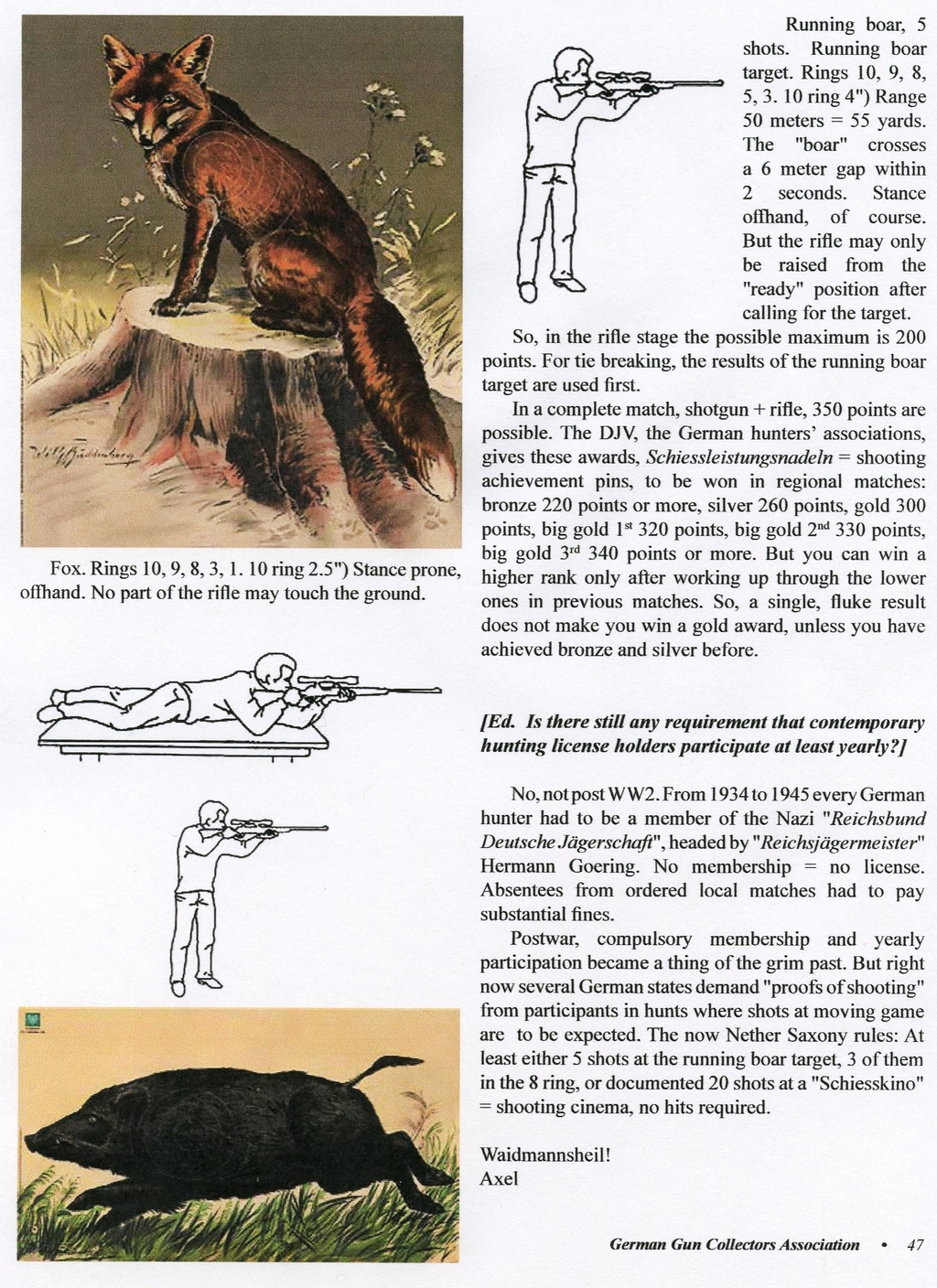Marksmanship and Targets
Compiled by Larry B. Schuknecht
Editors note: the following is a very brief history of target shooting and following will be a bibliography of source material where a reader can explore the subject further and learn more.
Marksmanship has a history as old as man’s use of projectiles. From the time that man learned to throw a rock there has been practice doing it. With the use of the bow, shooting at a specific target became an event with both practical and social implications during the middle ages. These shooting events with the bow were carried into use with both the crossbow and firearms and in some regions are still being practiced today.

By the 15th Century Man’s weaponry include stones, bow, crossbow and firearms.
It is generally believed that the use of the bow and arrow date back to approximetely 50,000 B.C. and practice with it must date back to that time. The crossbow is known to date back to Roman times and by 1000 A.D. was the favorite weapon on the European Continent. By the 14th and 15th Centuries the crossbow was the favorite amongst both the military and sportsmen alike.
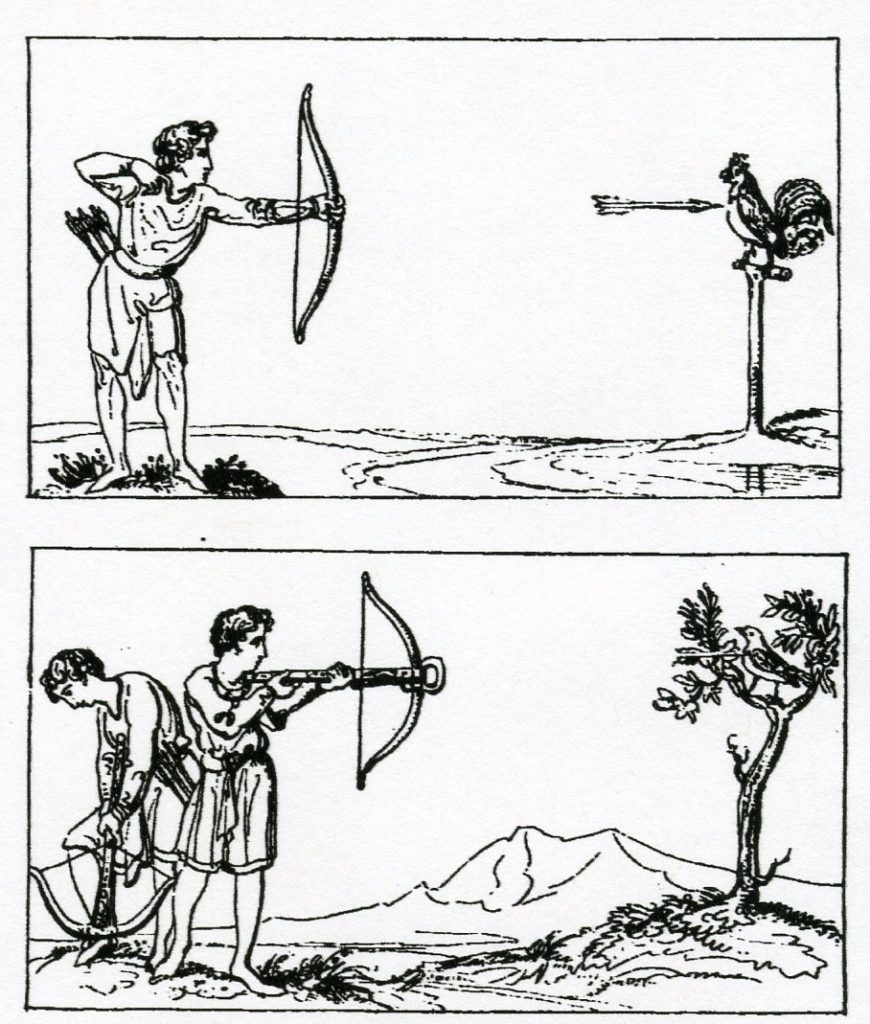
Illustrations of Bird shooting with the bow and crossbow, circa 1330. From Zeitschrift für historische Waffenkunde- Dresden- 1902
Practice with the crossbow was encouraged by civil leaders and nobility because they often relied on their citizenry to defend their relm and shooting grounds were set aside where practice took place. Yearly events began to take place where the citizenry gathered to compete with the crossbow and later with firarms.

A crossbow competition in Zurich, Switzerland in 1504. From Zeitschrift für historische Waffenkunde- Dresden- 1902
Shooting at the Popinjay (parrot) or other bird targets also dates back to Roman times. The Roman poet Virgil (70B.C. to 19 B.C.) wrote in his fifth book of the Æneid about an event that Æneas arranged whereupon competitions in racing, boxing and archery took place. One archery event was shooting at a live bird fastened atop a ships mast. By the middle ages this became the major event in shooting competitions all across Europe but particularly in the Geman speaking countries.

A crossbow shooting competition (Vogelschiessen) which took place in Dresden in 1612. Engraved by J. Kellerthaler. The grounds where the competition took place was referred to as the Vogelwiese. From The Crossbow by Sir Ralph Payne-Gallwey- 1903
Another bird target was the Eagle target which was much larger than the Popenjay target. Some Eagle targets often had and have a total height of approximetely 12 to 14 feet and a wing span of 8 to 10 feet. It would be mounted on a pole or mast 100 to 140 feet in height.
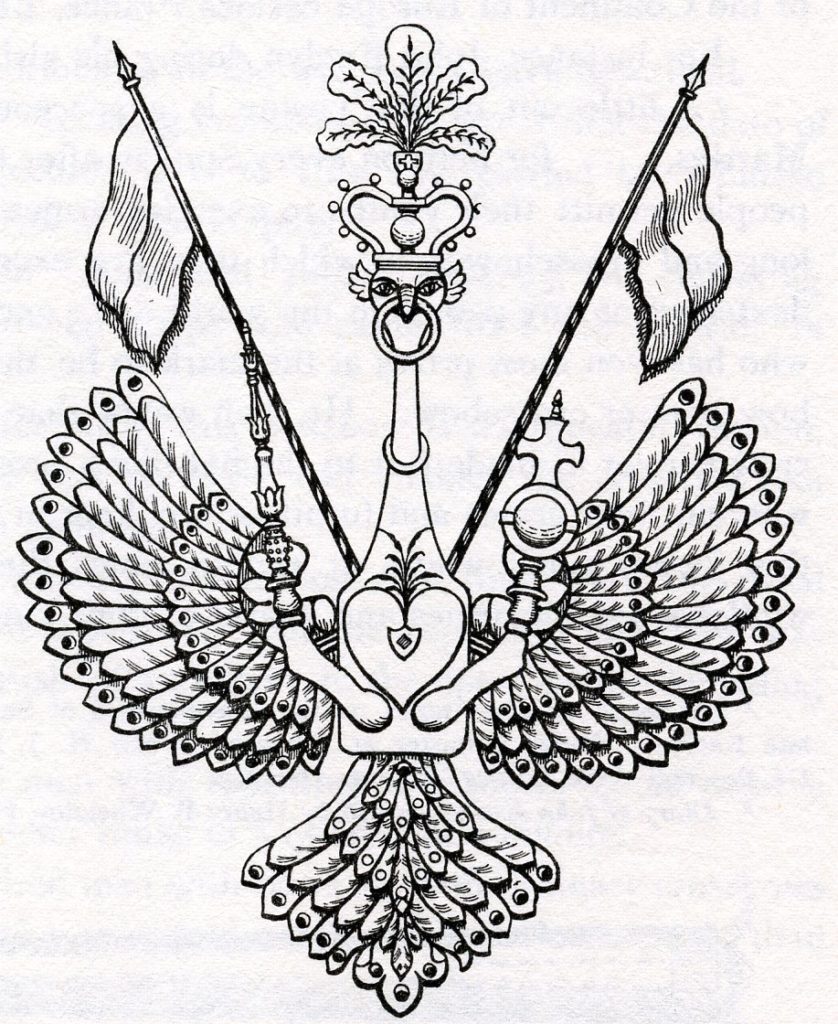
A view of the Dresden Eagle Target. From Zeitschrift für historische Waffenkunde– Dresden- 1902
The object of these competitions was not simply to hit the target but to break off a piece of it. Each piece had a distinct name and value as a prize that would be paid to the shooter. The shooter who detaches the highest valued piece (often the main body or the “Heart” of the target) is the Champion of the competition and is announced as the ‘Konigschusse’ or King of the Shoot.
These competitions were not confined solely to the European Continent but also took place in the United States in the late 19th and early 20th Century. The book Modern American Rifles by A. C. Gould, 1892 gives the following account of such a competition- “The Eagle target has been used for years at German and Swiss festivals, and has been introduced into this country. One is illustrated which has been used by the Rochester Schützen Gilde at Rochester, N.Y., at it’s tournaments.

The Eagle Target from the book Modern American Rifles
This organization is composed of German and American Riflemen. The Eagle Target is fastened to the top of a pole 40 feet from the ground. It is made of wood, handsomely painted, and is 9 feet high by 12 feet wide, and is composed of 18 parts or sections, firmly doweled together. These parts are numbered, and contestents endeavor to shoot them off. The single parts are of 1 inch pine; one 1/2 inch dowel holds them in the joint of the 3 inch body shield, which must be hit to drop. If the wrong piece drops, the piece falls back to the treasury. A dynamite cartridge is placed in centre of body, which is protected by an 8 inch iron plate, with a 3/4 inch hole for centre, in which is a blank cartridge for exploding the body. In order that the reader may clearly understand the modes of determining the value of successful shots on this target, I append an extract from a programm of the above organization showing the order in which the single parts shall be shot off.

In Germany riflemen shoot at a body 2 feet in diameter, and weigh the splinters. The amount each bullet tears off calls for a stipulated amount per weight, and the rifleman knocking off the last splinter receives the king prize”.
The Crossbow bolts used for this competition were not pointed but had a blunt heavy head to give the best effect at breaking the target. The firearms used in this competition were referred to as “Vogelbüchse” and are single shot long guns with a lage gauge bore, the 16 ga. being the most common.
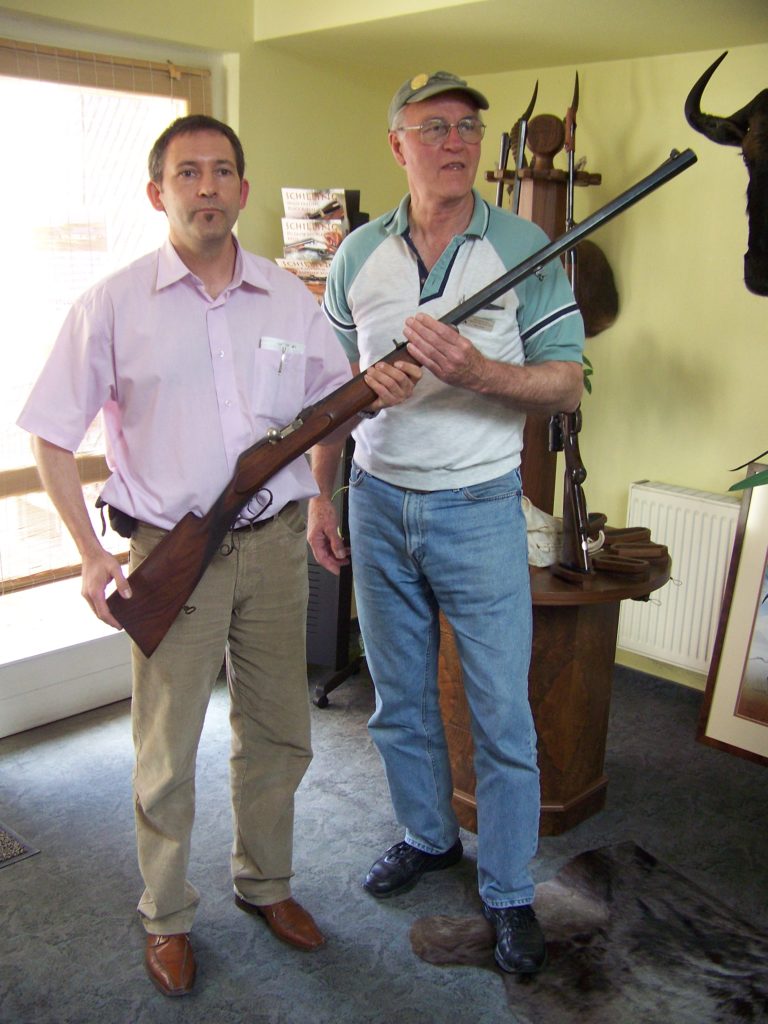
Jorge Schilling on the left and Bill Loos on the right with a large caliber Vogelbüchse
To read more about the Vogelbüchsen and the competitions in modern times google- sebastianus-stammheim.de/ueberuns/historisch.html
Other forms of Targets date back to Medieval times. The round paper or wooden target was popular and shooting at moving targets of game animals also took place. 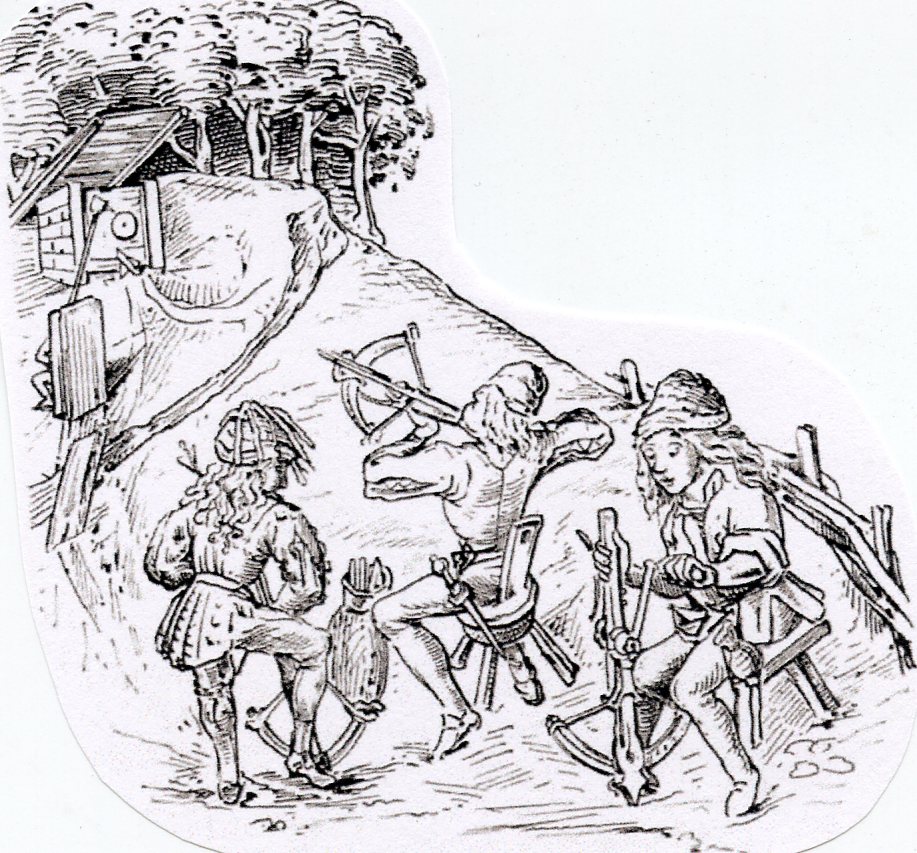
An informal target practice with the cross bow, from Mittelalterliches Hausbuch-Bilderhandsschrift aus dem 15 Jahrhundert.

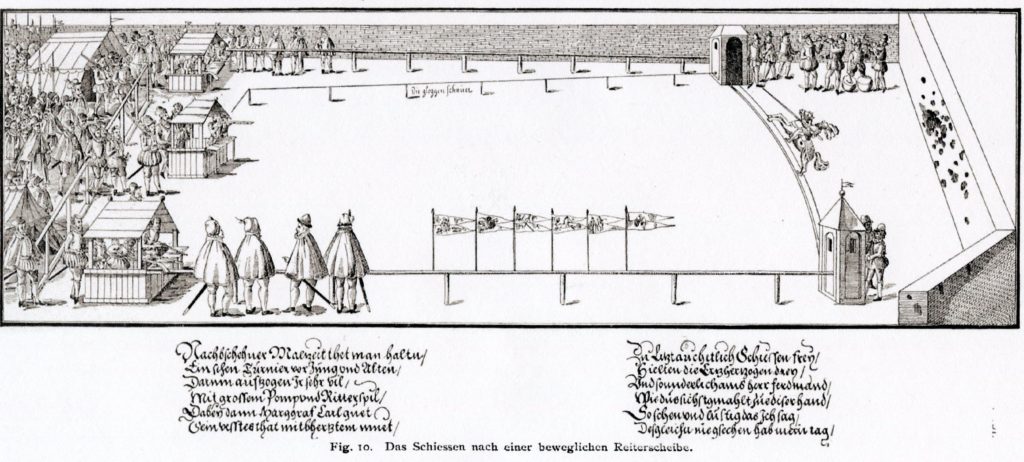
Shooting with a rifle at a moving target of a jousting Knight from Zeitshrift für historische Waffenkunde-Dresden-1902
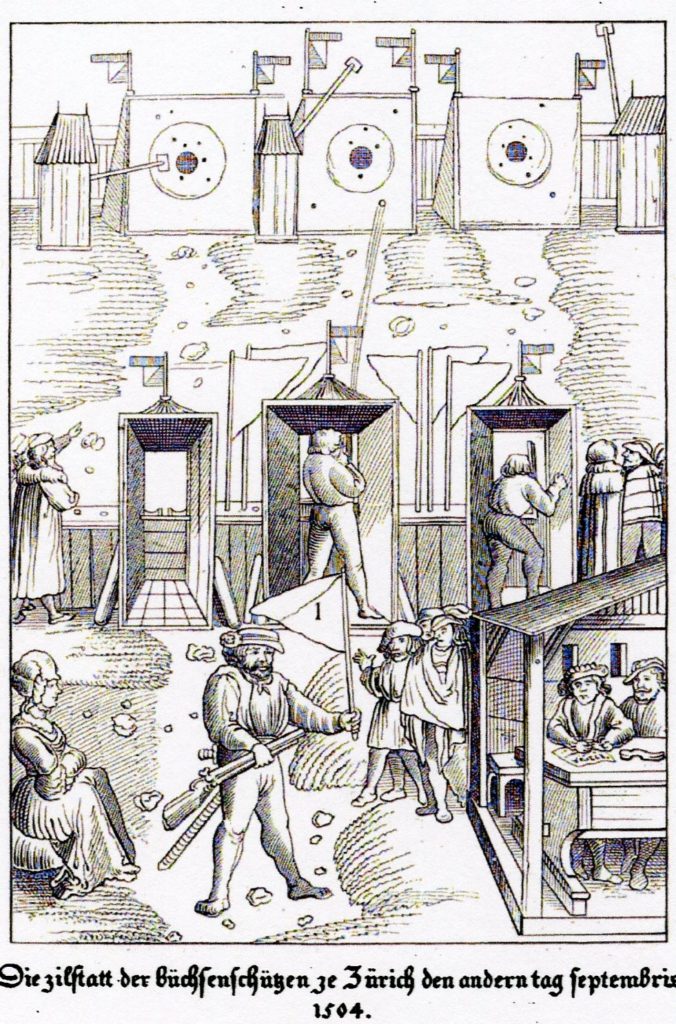
Rifle shooting at a round target in Zurich, Switzerland in 1504. From Zeitshrift für historische Waffenkunde-Dresden-1902
Target shooting events had always been a localized affair but in 1861 all of that changed when Ernst II, Duke of Saxe-Coburg-Gotha proposed a national event. The following short story of the Deutscher Schützenbund was written by Dietrich Apel and appeared in the Spring 2010 issue of the German Gun Collectors Association Journal Der Waffenschmied.
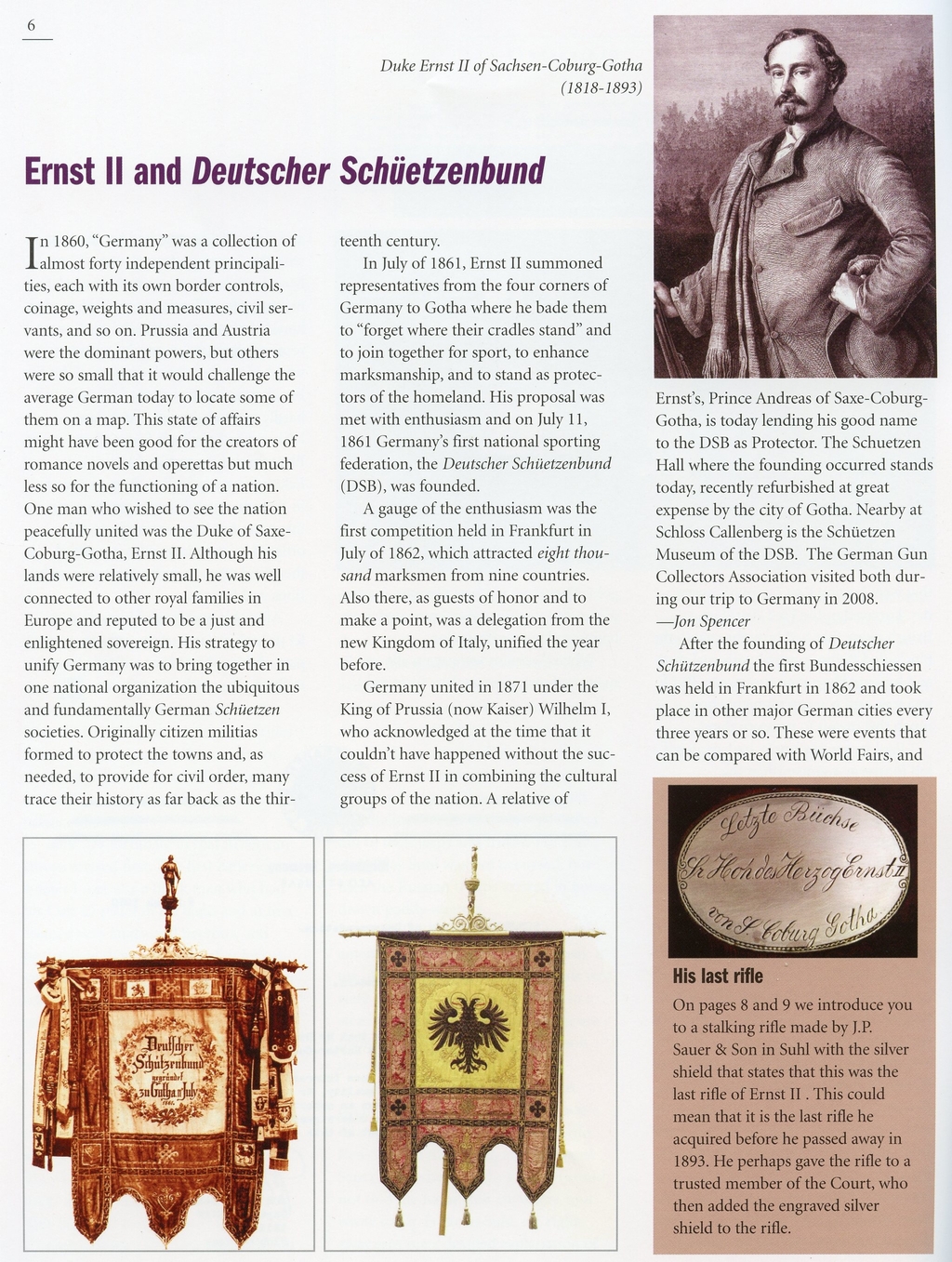
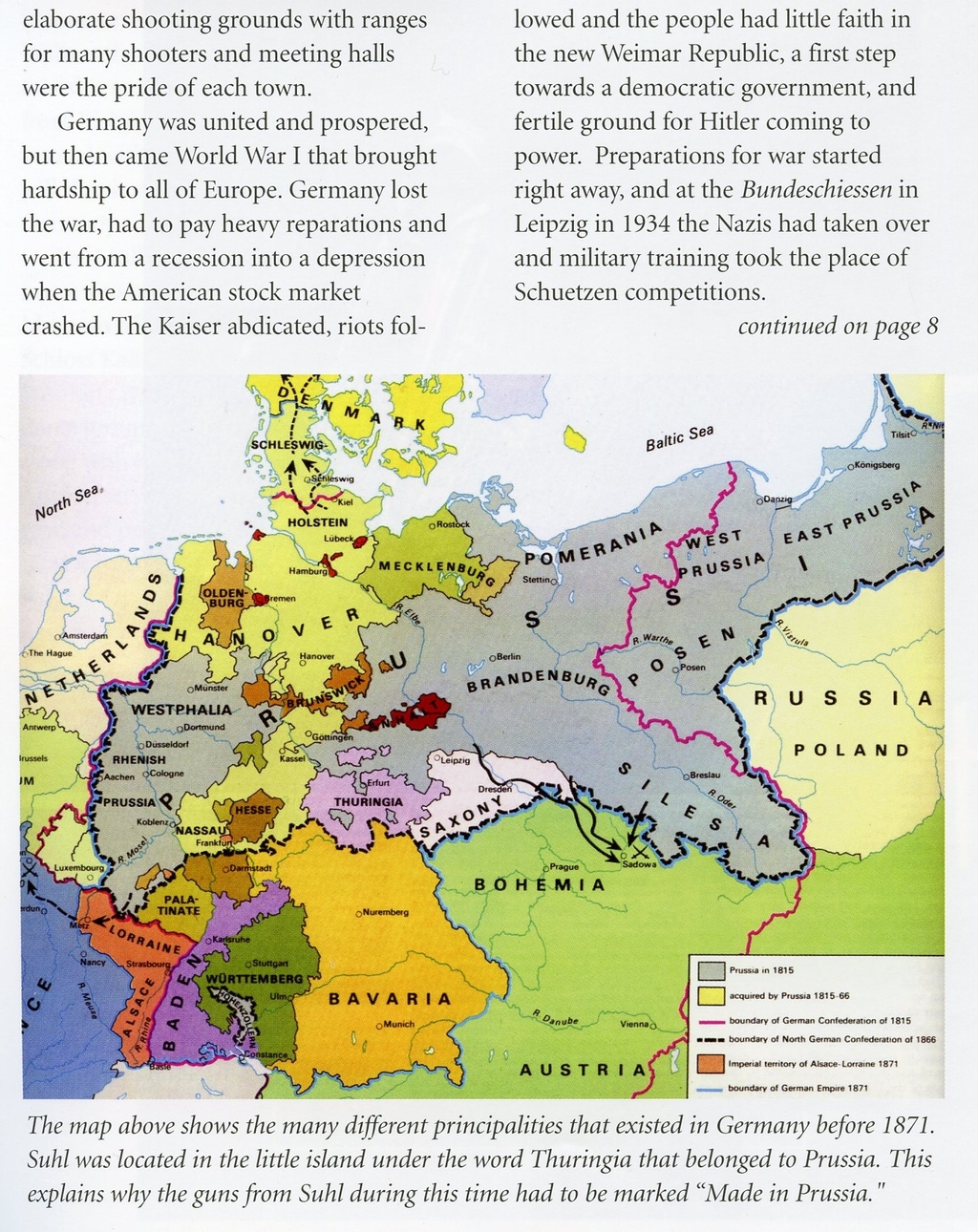

A typical Schützen rifle with a Martini action in the popular 8.15x46R caliber.
While target shooting developed into the Schützenbund organization, Marksmanship and hunting have always gone hand in hand. An ethical hunter endeavors to be a good marksman and by that means he is able to make a clean kill on the game he is after. Hunting Marksmanship never took on the social and political importance that the Schützen movement did but was important and recognized by the organized hunting Associations. The following article written by Axel Eichendorff appeared in the Spring 2017 (issue #60) of the German Gun Collectors Association publication Waidmannsheil which is edited by Richard Hummel.
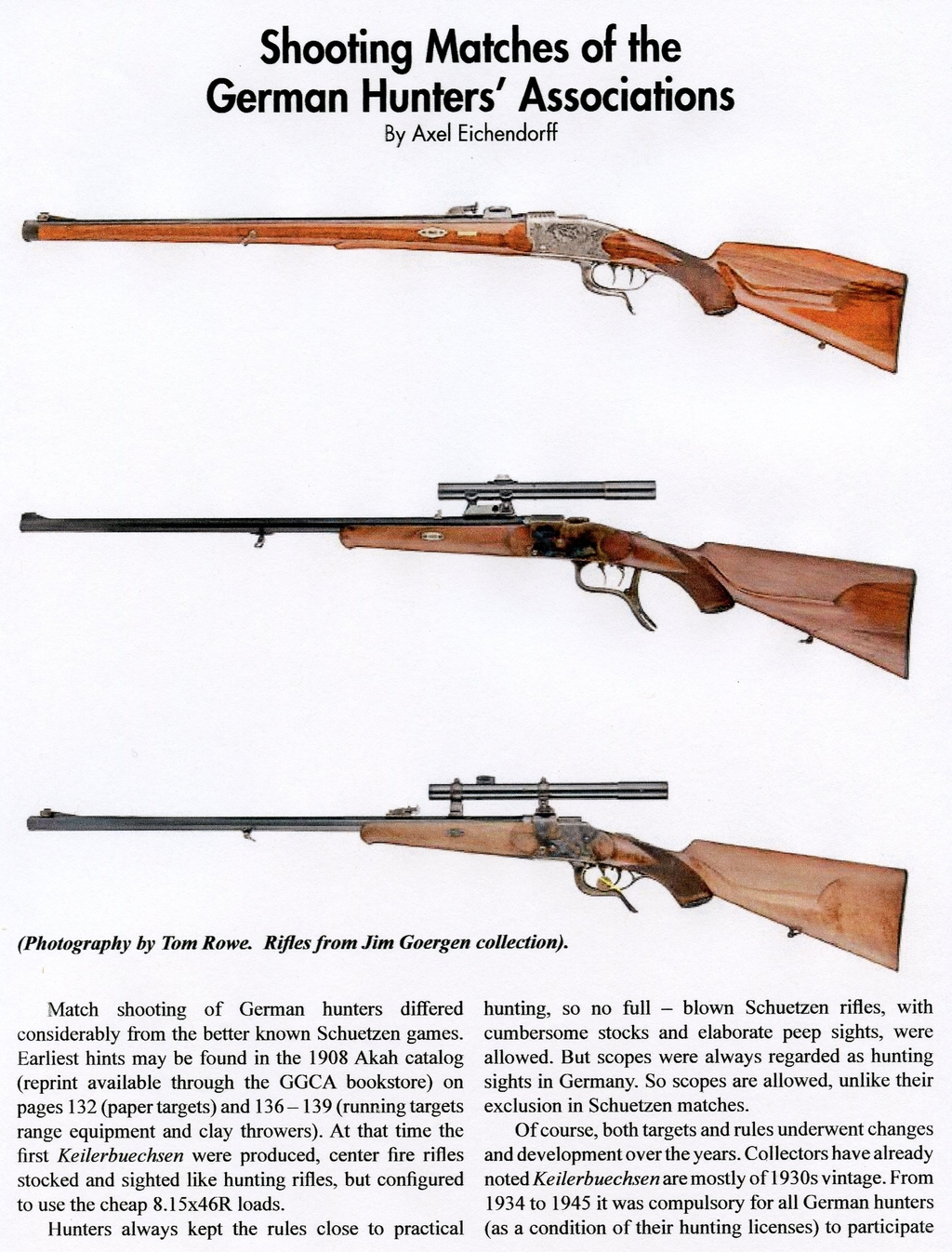
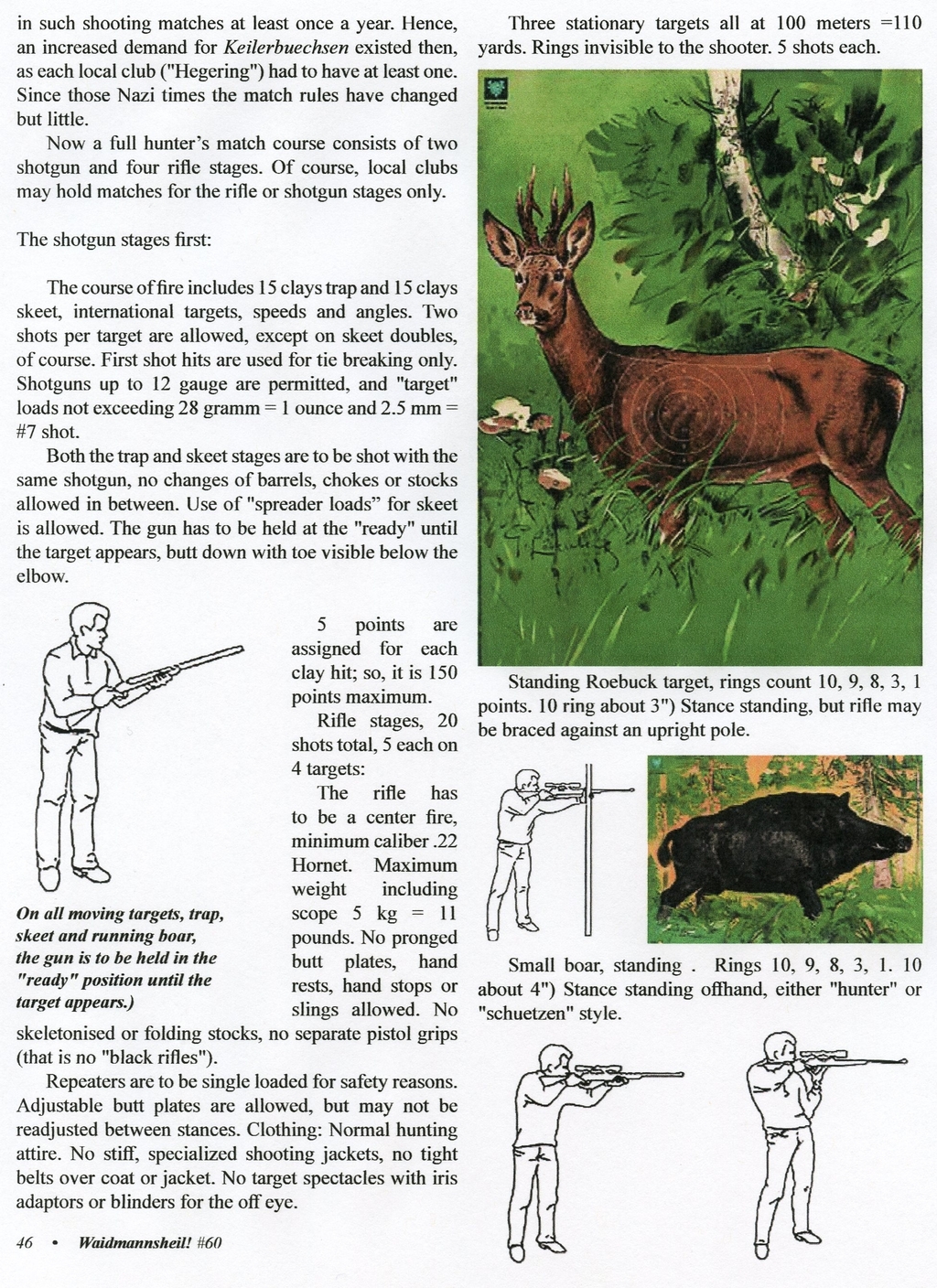
Targets took on many forms over the centuries, the following three pages from a 1913 August Stukenbrok catalog show the wide selection available at that time.
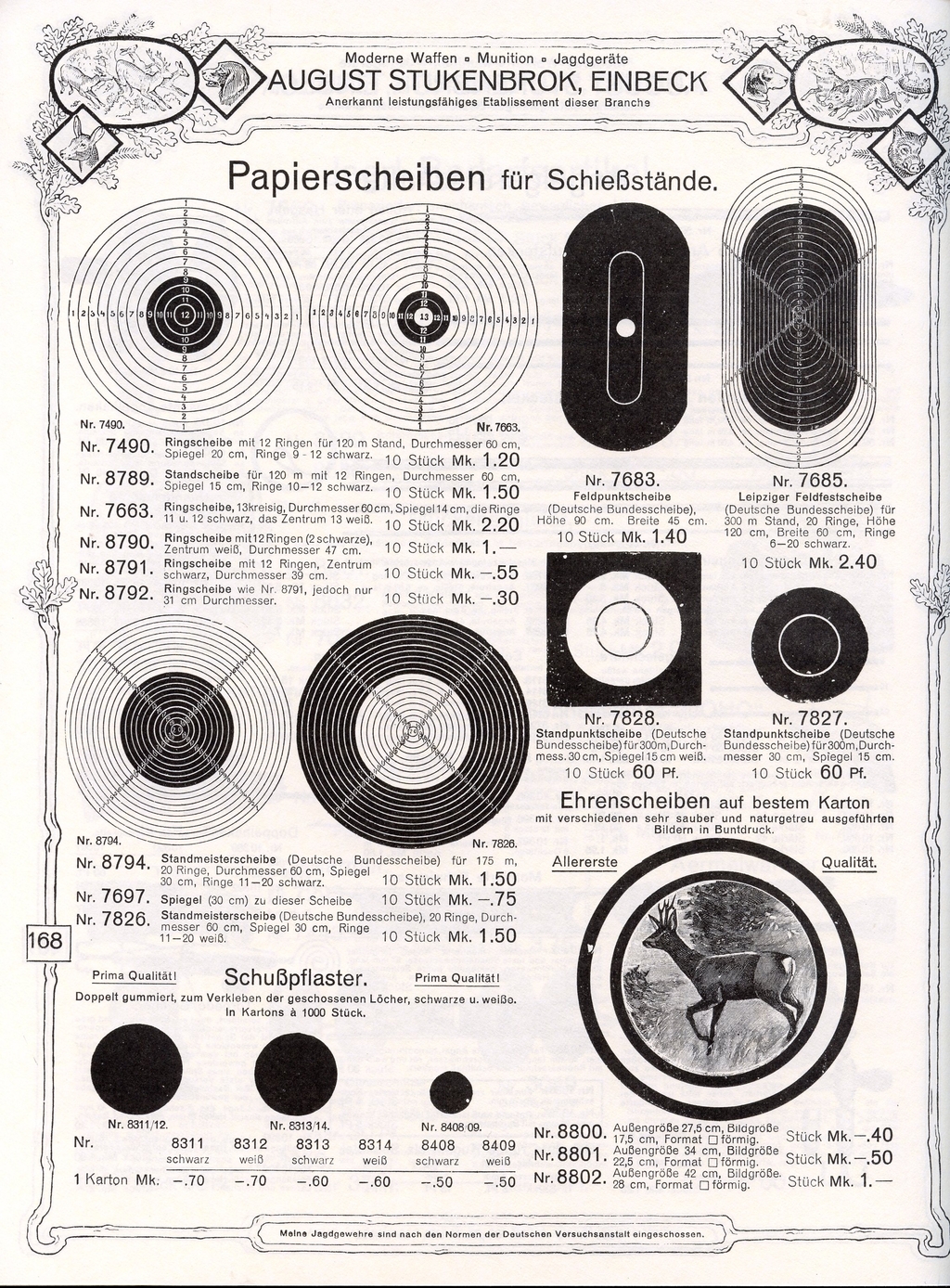
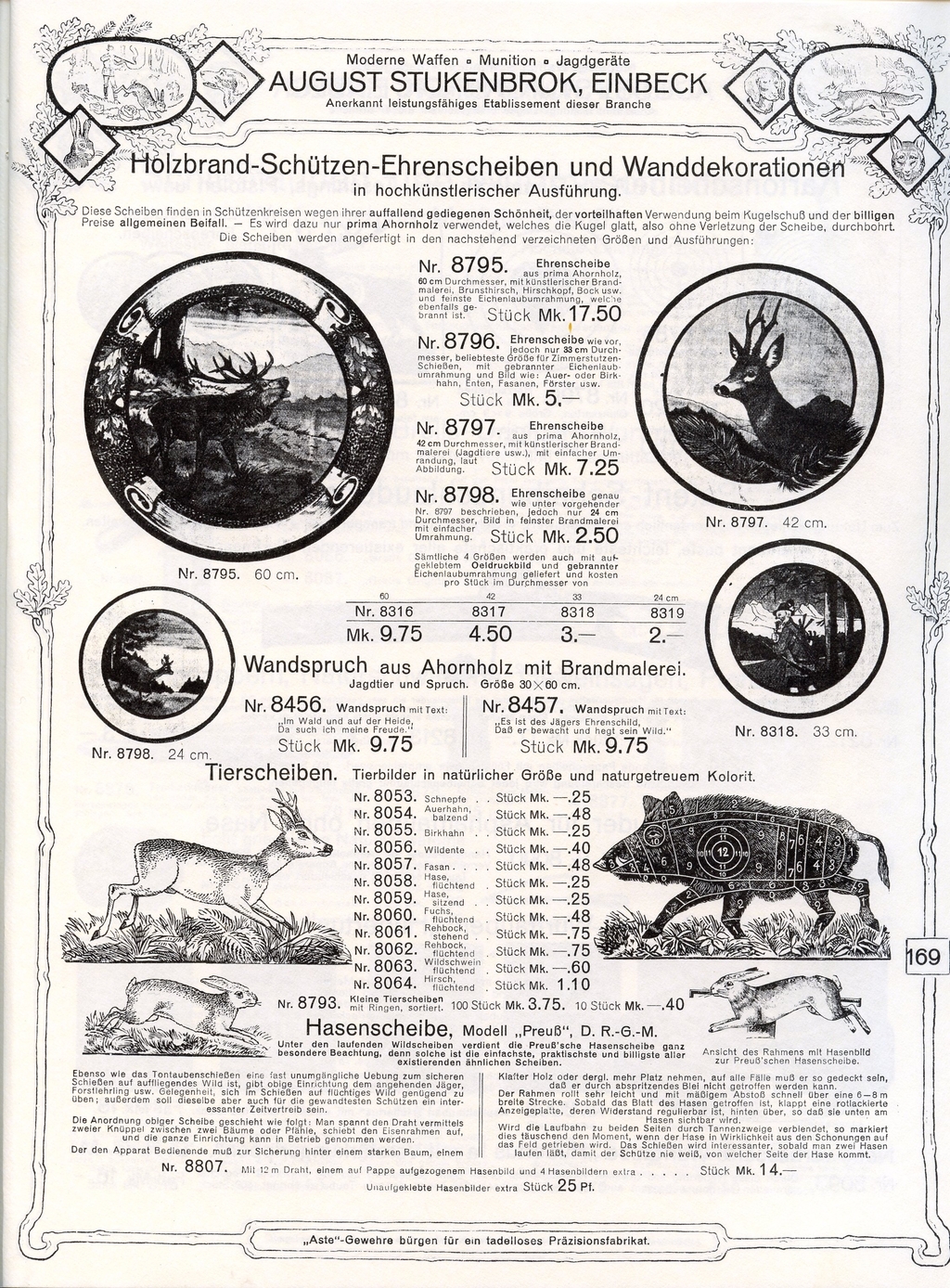
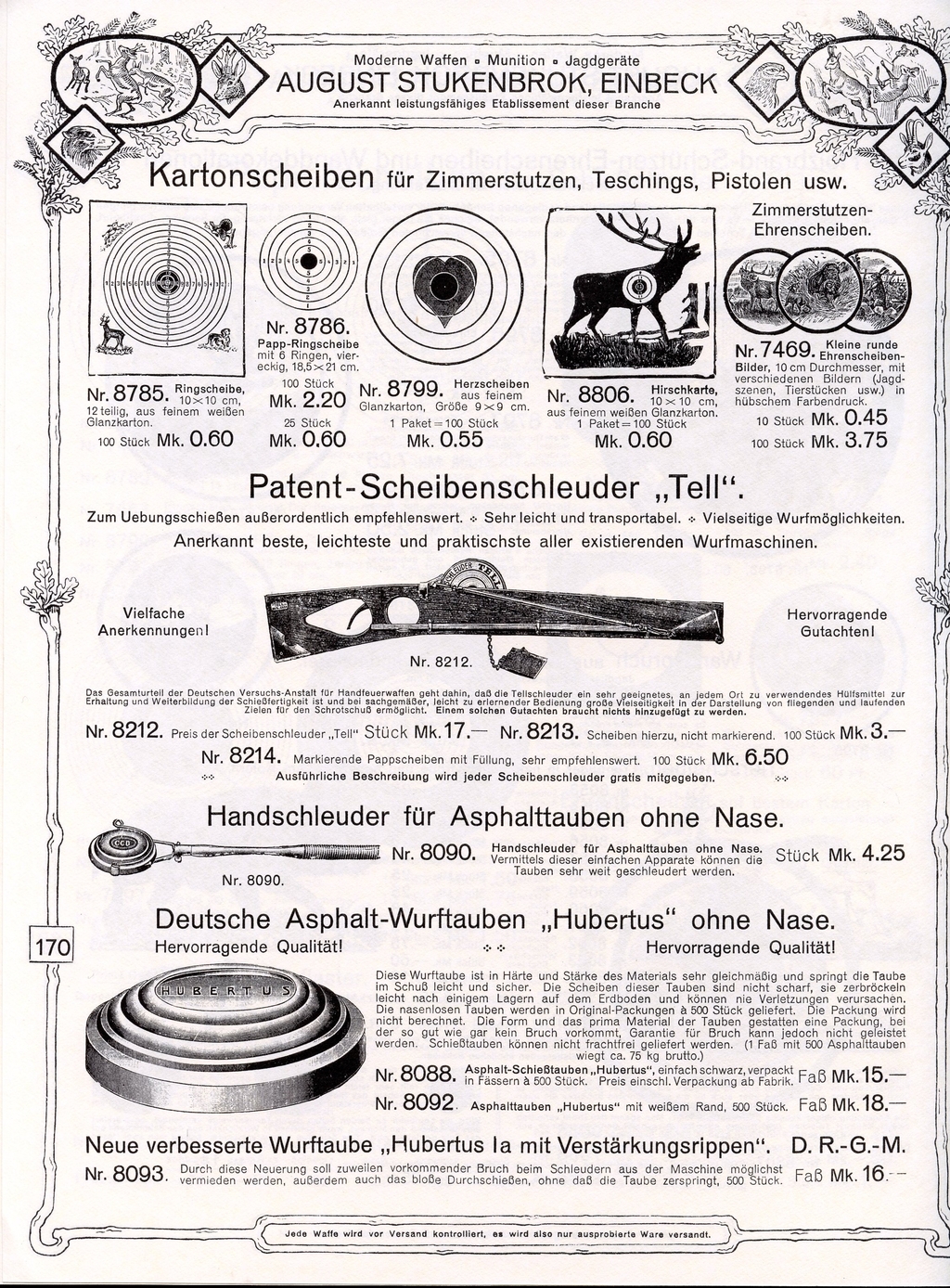
Following is an Advertisement from a 1913 Der Waffenschmied which offered Custom Schützen Ehrenscheiben.
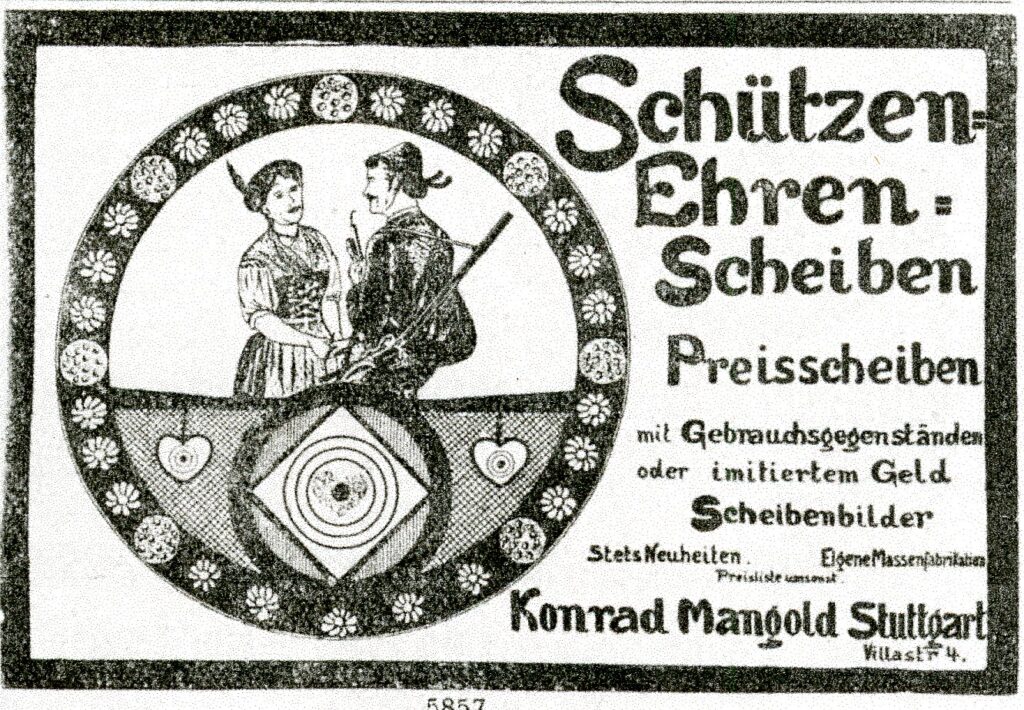
Following is an advertisement from a 1928 Die Büchsenmacher und Waffenhandler for Targets.
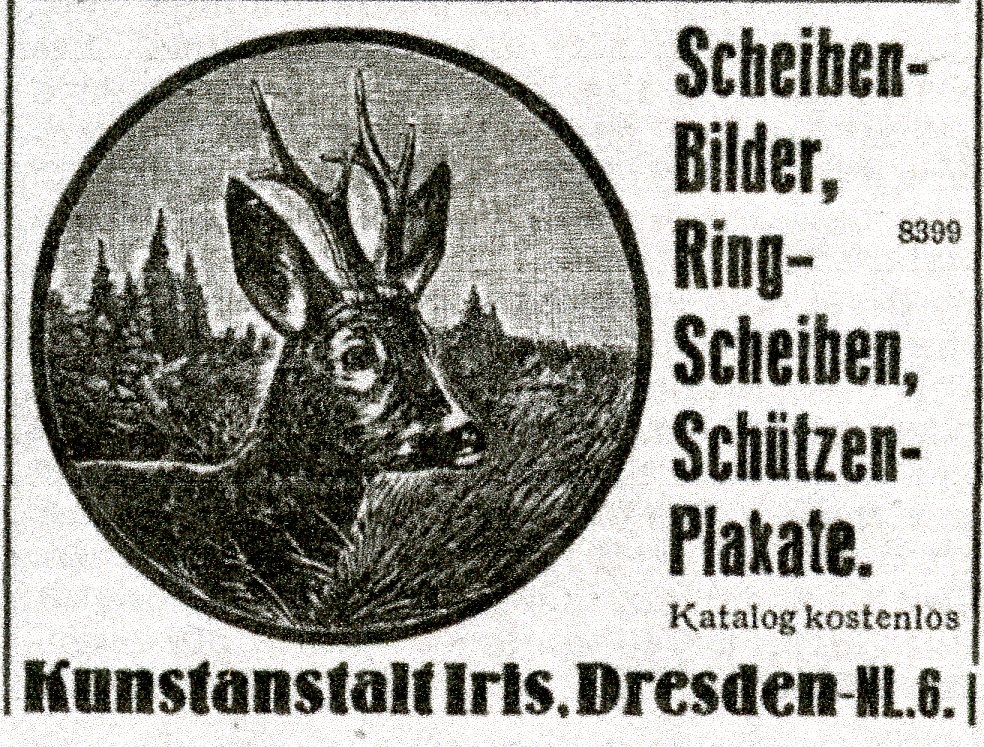
Below- another period Target advertisement.
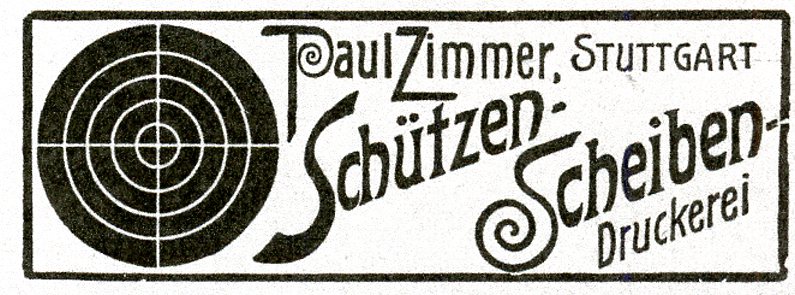
Bibliography-
A History of Marksmanship, by Charles Chenevix Trench 1972
Alt Scheibenwaffen, by Rowe, Thompson, Dillon, Hallock, Loos 1999
Das Scheibenbuch des Herzogs Johann Casimir von Sachsen-Coburg, by Karl S. Kramer & Joachim Kruse 1989
Haller Schützen Scheiben, by Heinrich Mehl & Hans-Jürgen Flamm 1985
Historical Painted Targets, by Mathias Tugores– American Rifleman- Feb. 2001
Historical Targets, by Anne Braun 1981
Modern American Rifles, by A. C. Gould 1892
Schiess-Scheiben, by Alfred Förg
The American Percussion Schuetzen Rifle, by J. Hamilton & T. Rowe 2004
The Crossbow, by Sir Ralph Payne-Gallwey 1903
Wir Schützen-heute 1861-1986, Deutscher Schützenbund 1987
Zietschrift für Historische Waffenkunde, Dresden 1902
In 2008 I had the priviledge of accompanying other German Gun Collectors Association members on a two week tour of Germany. Some of our stops included the Waffen Museum in Suhl, The Museum and Shooting grounds of the Schützenbundes at Gotha, The Mauser Museum in Oberndorf, and the Schützen Museum at Schloss Callenberg. During these visits I observed and photographed many painted Honor Targets both recent and historic. While not in the Hunting Gun vein of interest, I include them here as a way for others to enjoy them.
From the Waffen Museum in Suhl
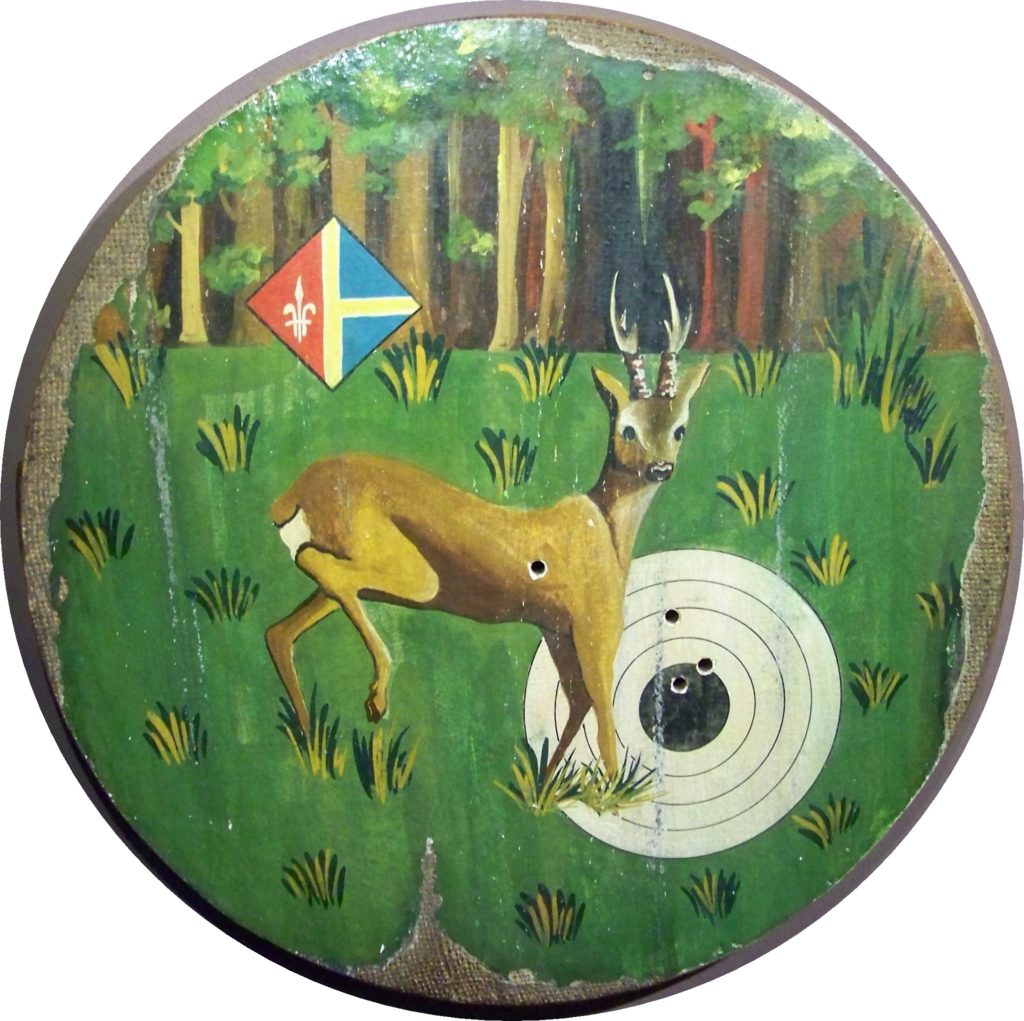
The Targets at the Schützen Museum in Schloss Callenberg
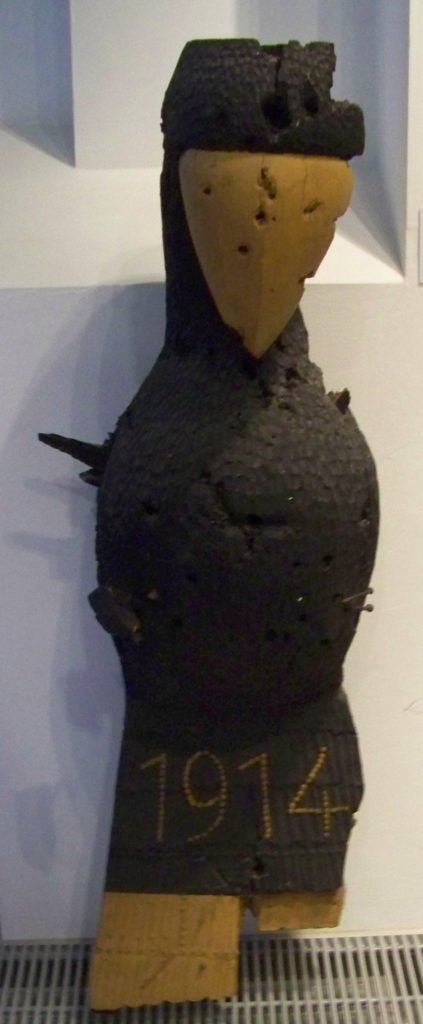
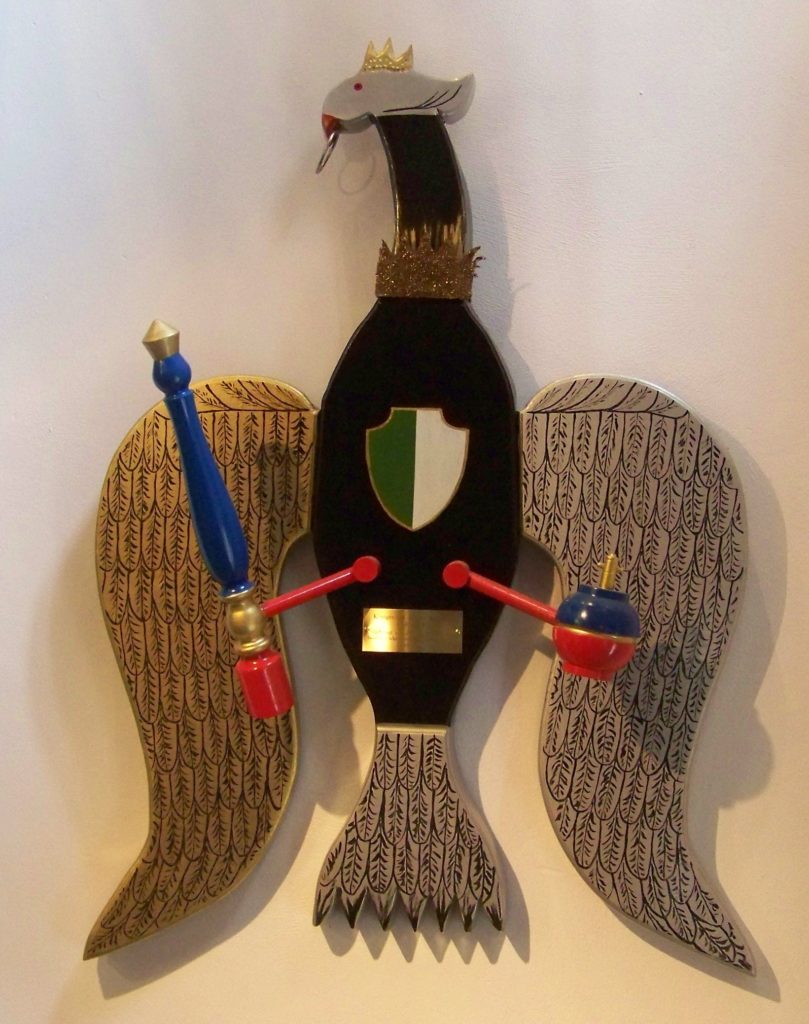
A full size Poppenjay Target as would be seen before an event.
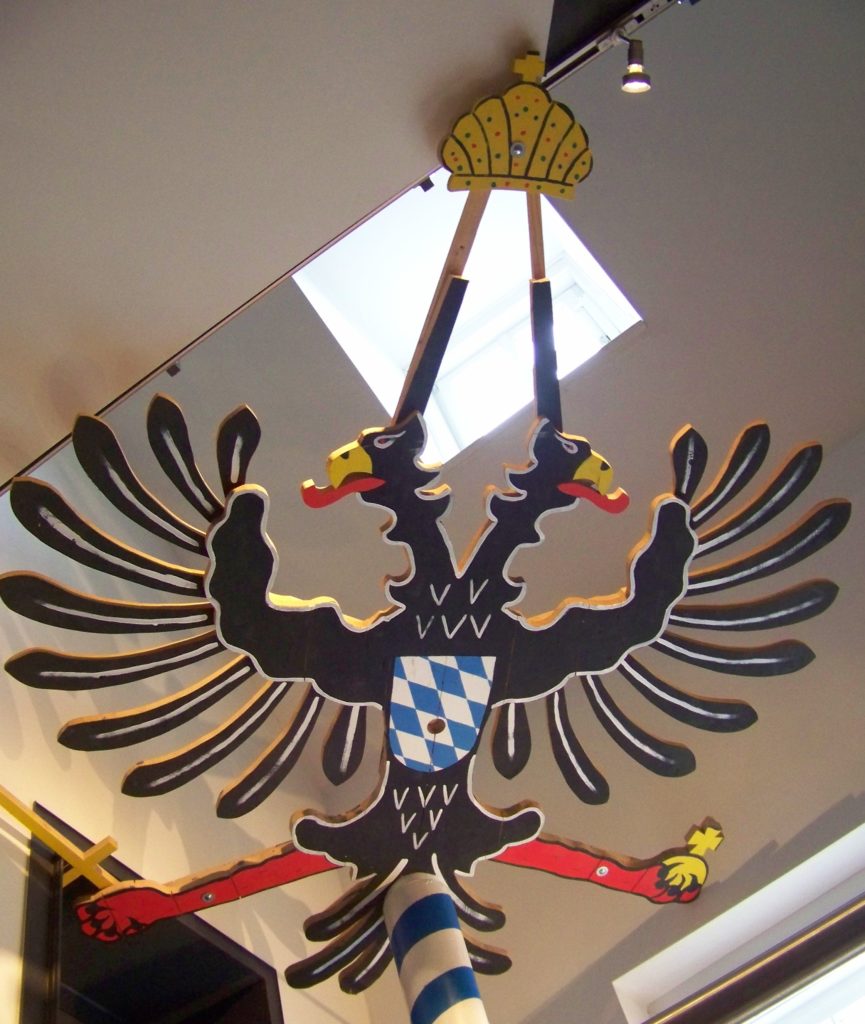
A flat Bird target mounted in a horizontal position on a pole that has the blue and white bands.

Another full sized Poppenjay Target.
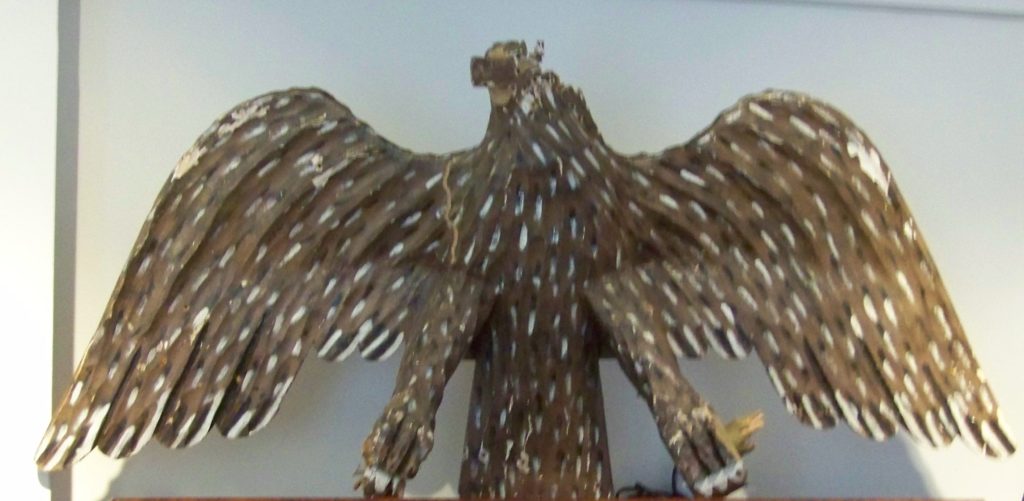
A full sized Bird Target that survived a shooting event in more or less one piece,
Below are painted targets from the Schützen Museum collection.
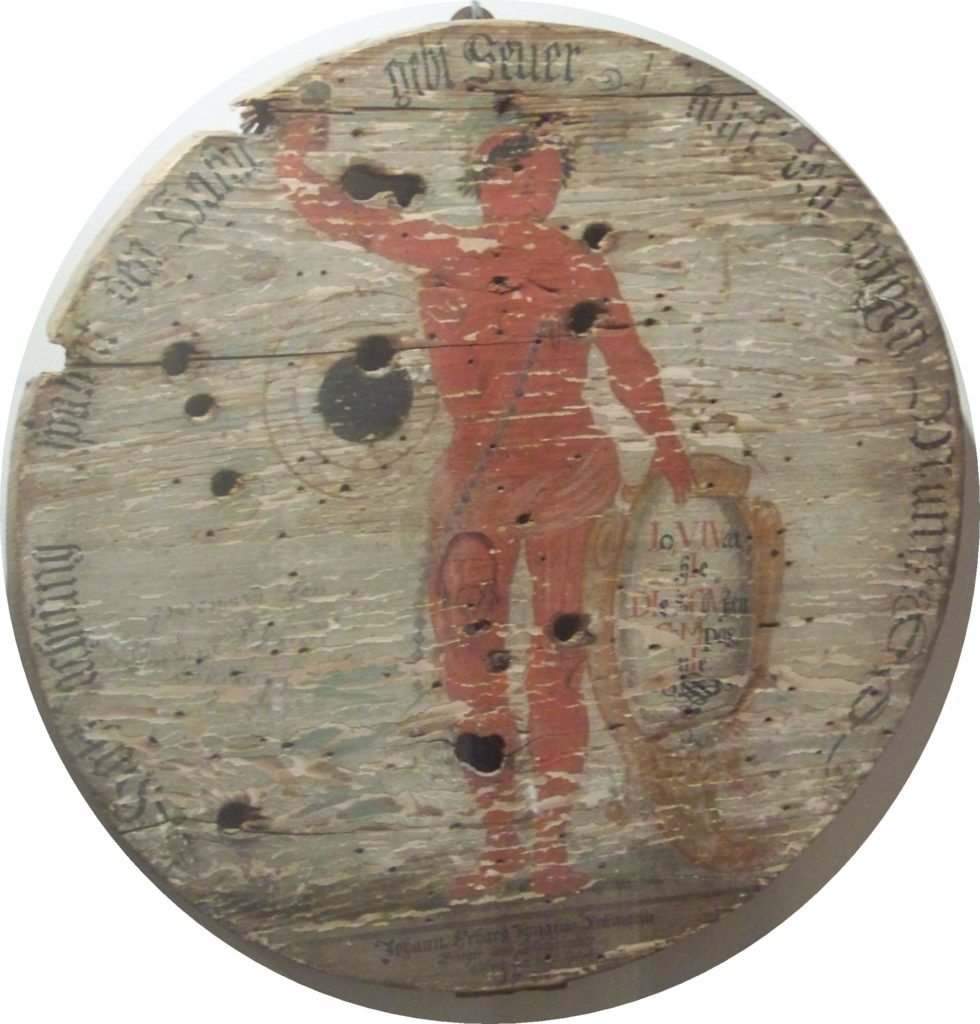
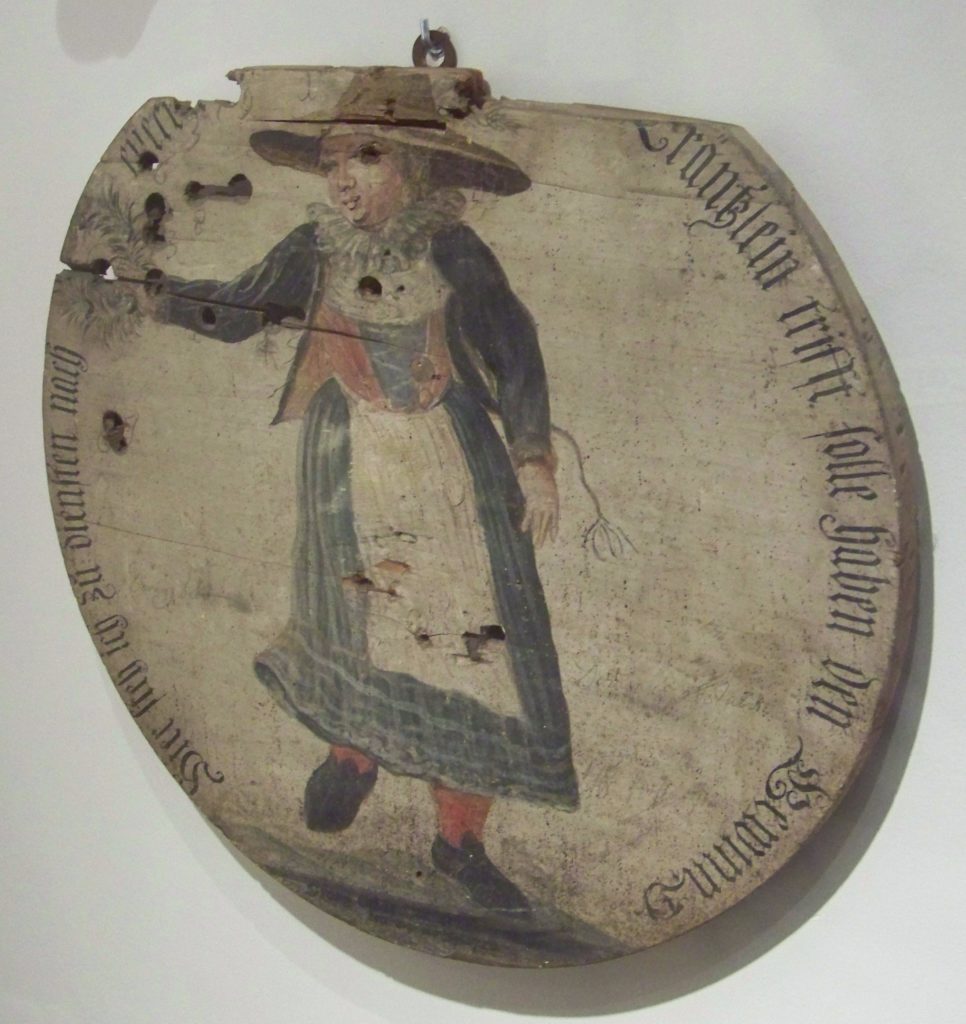
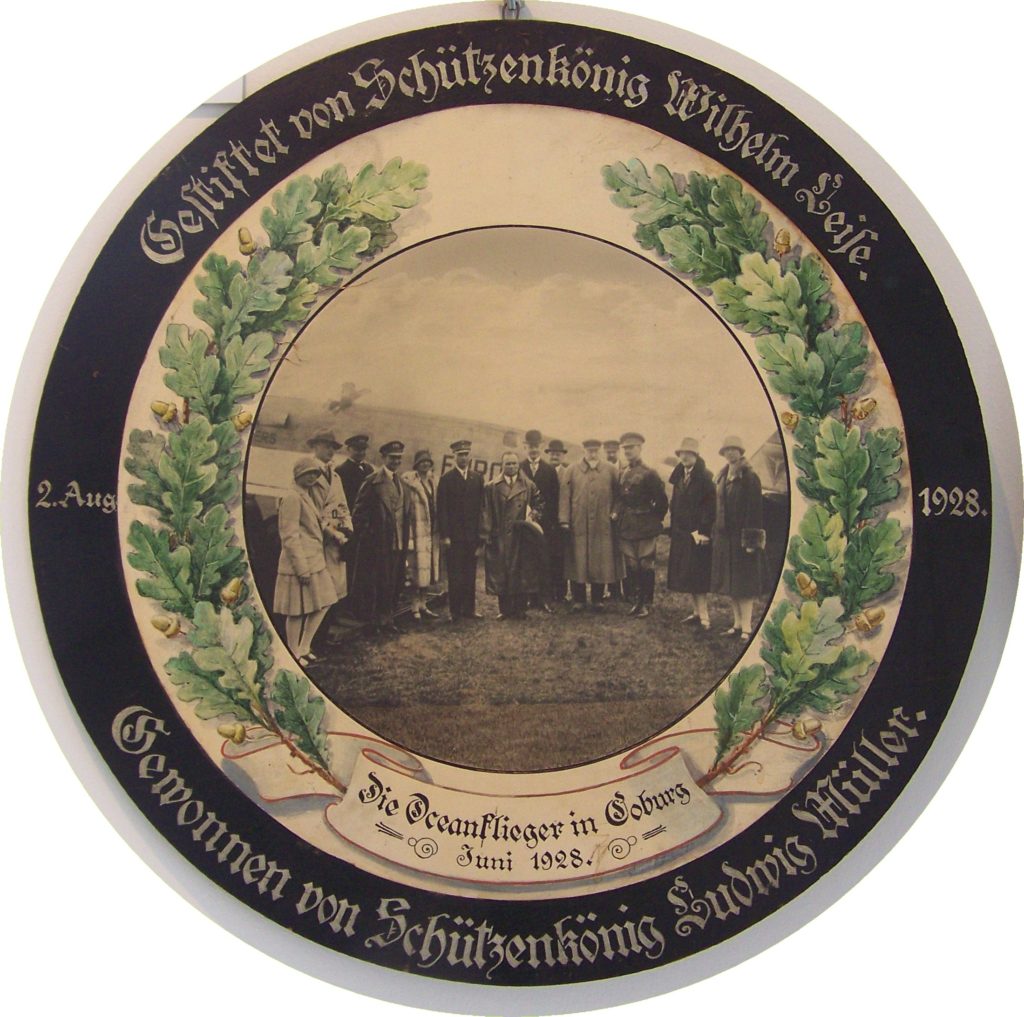
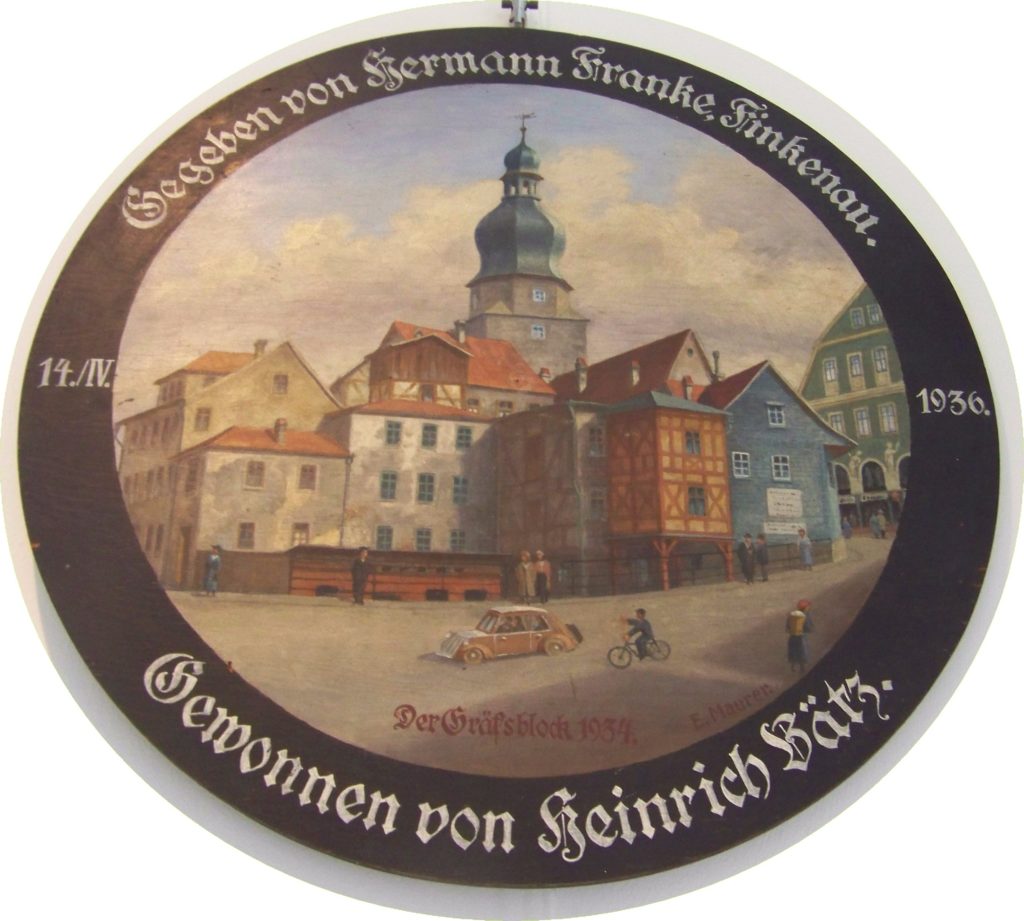
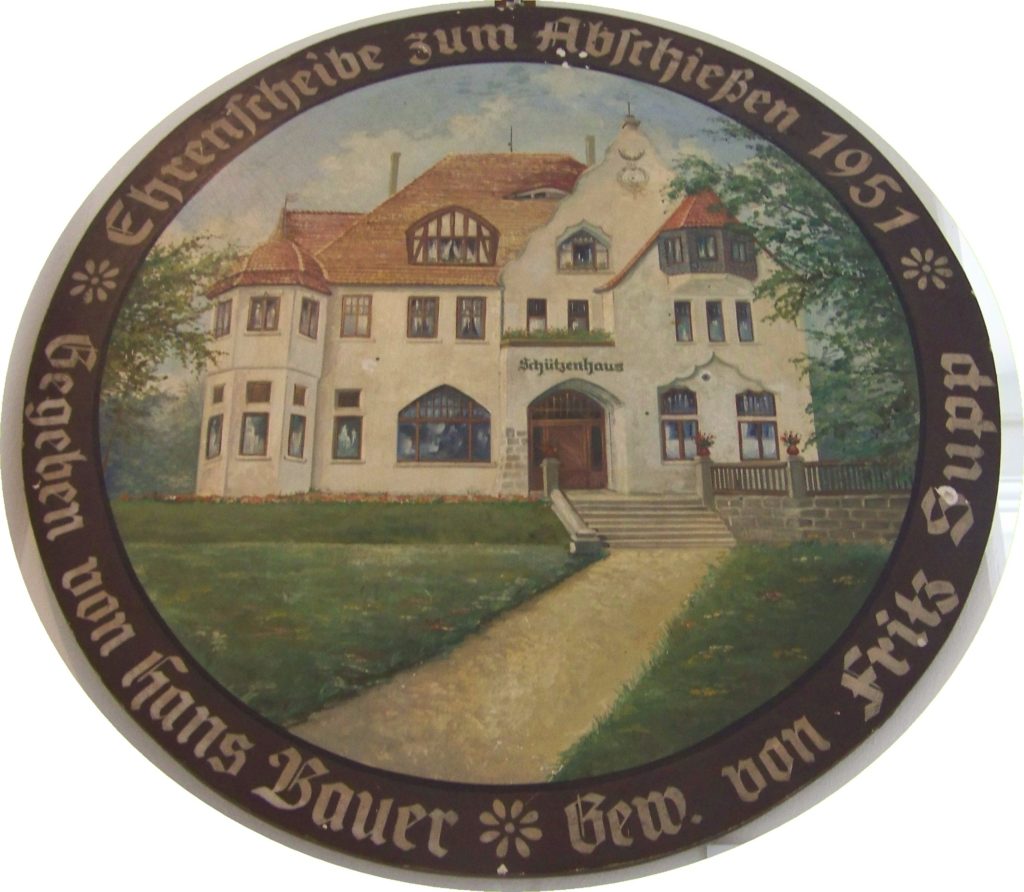
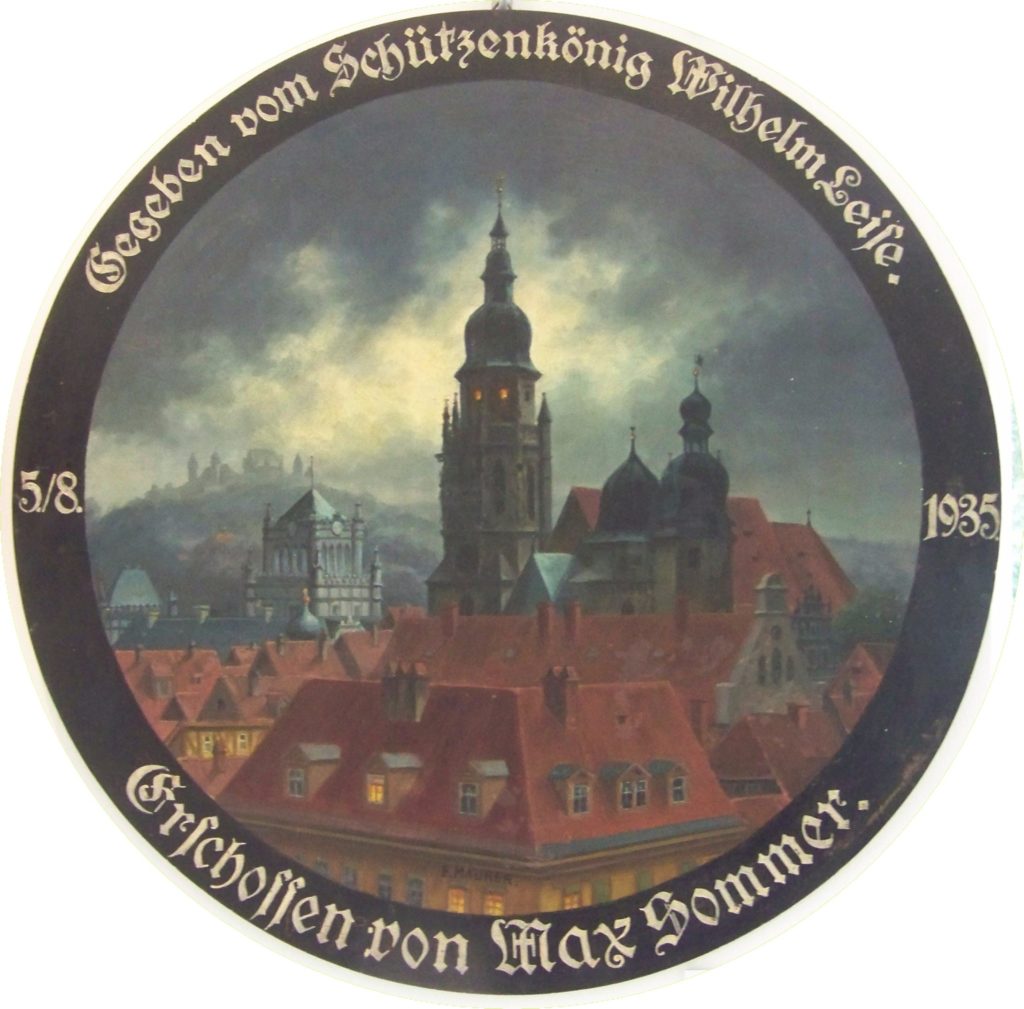
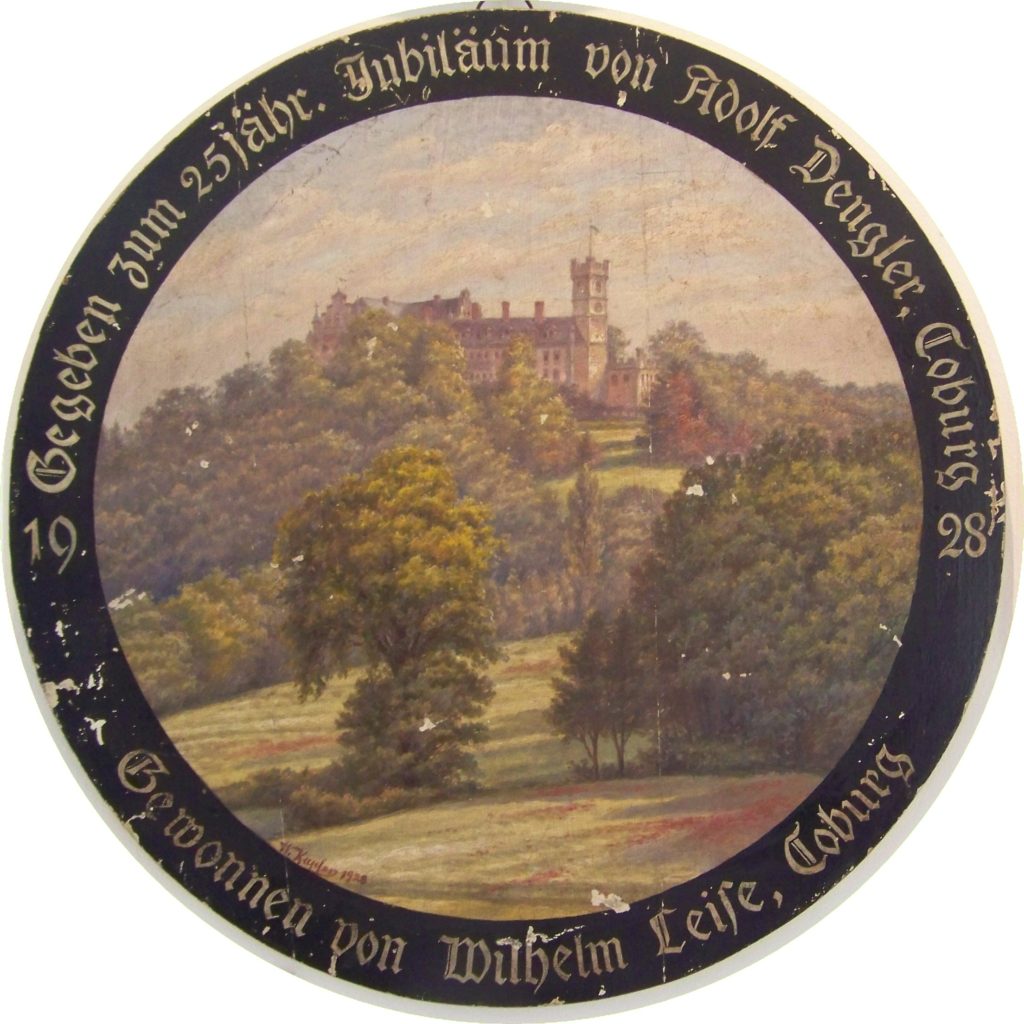

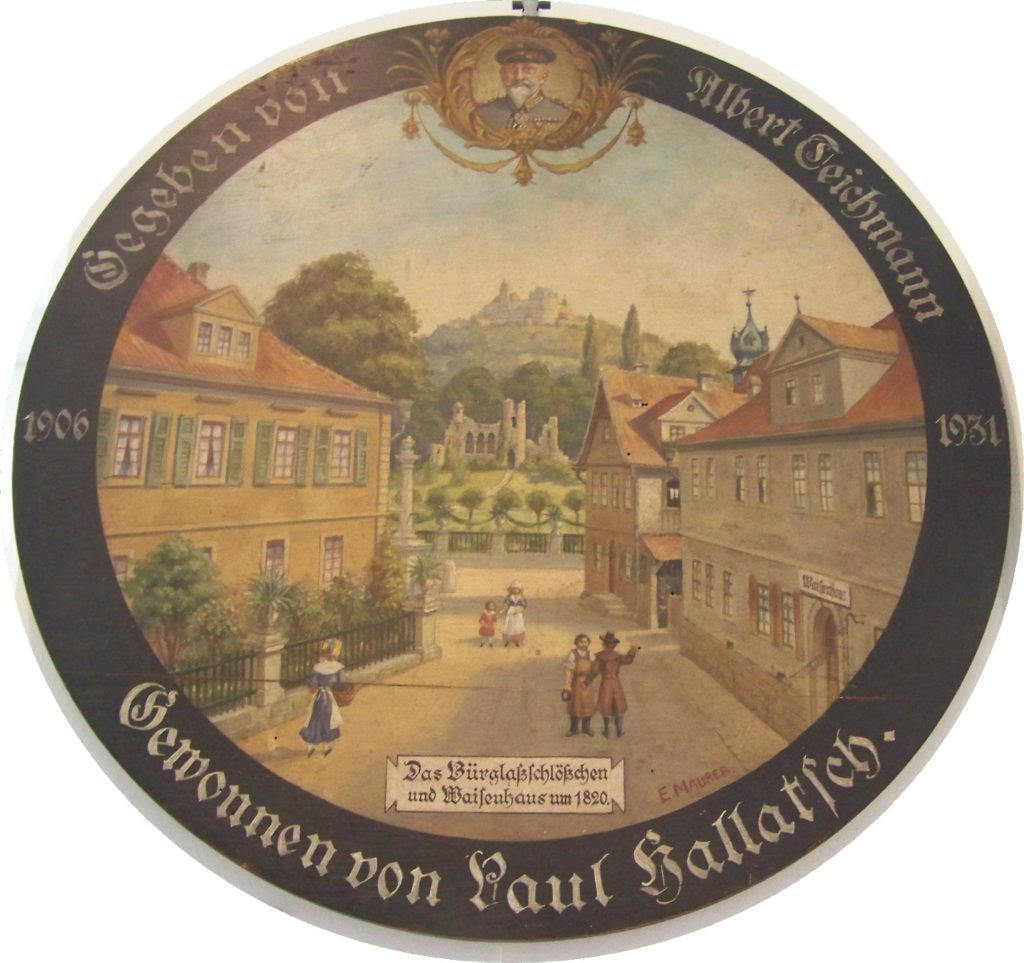
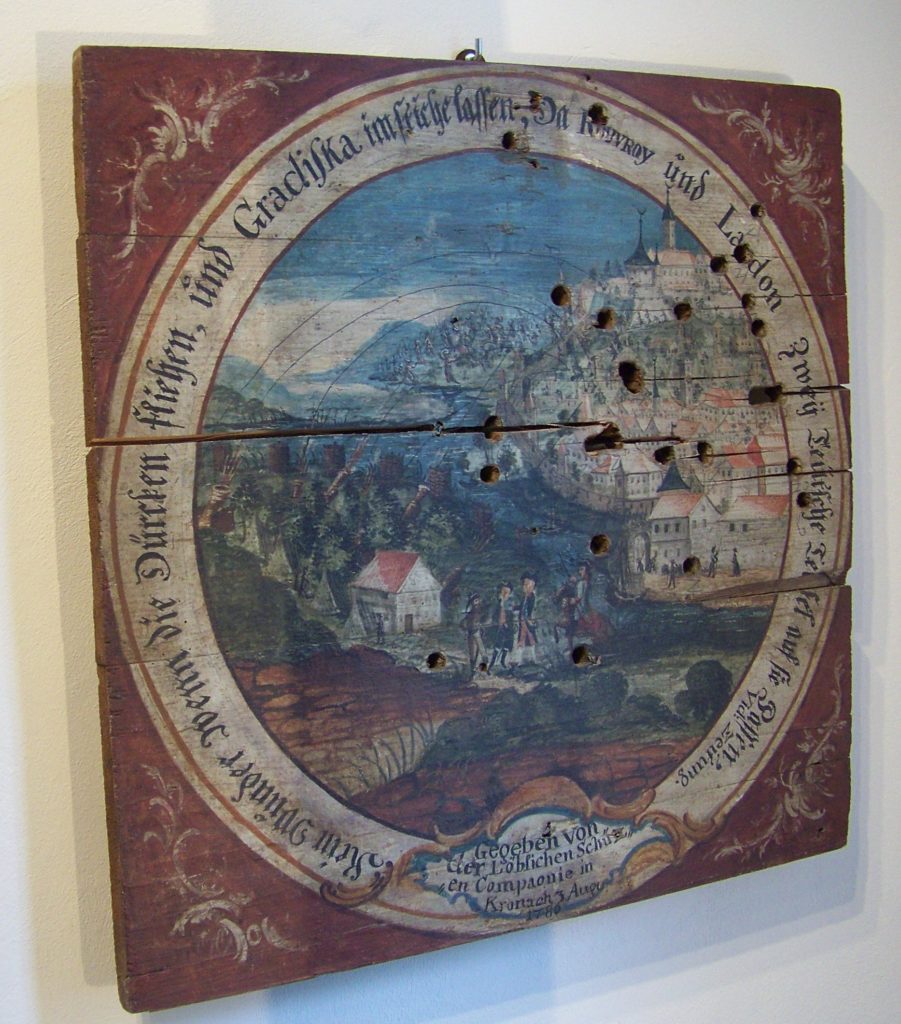
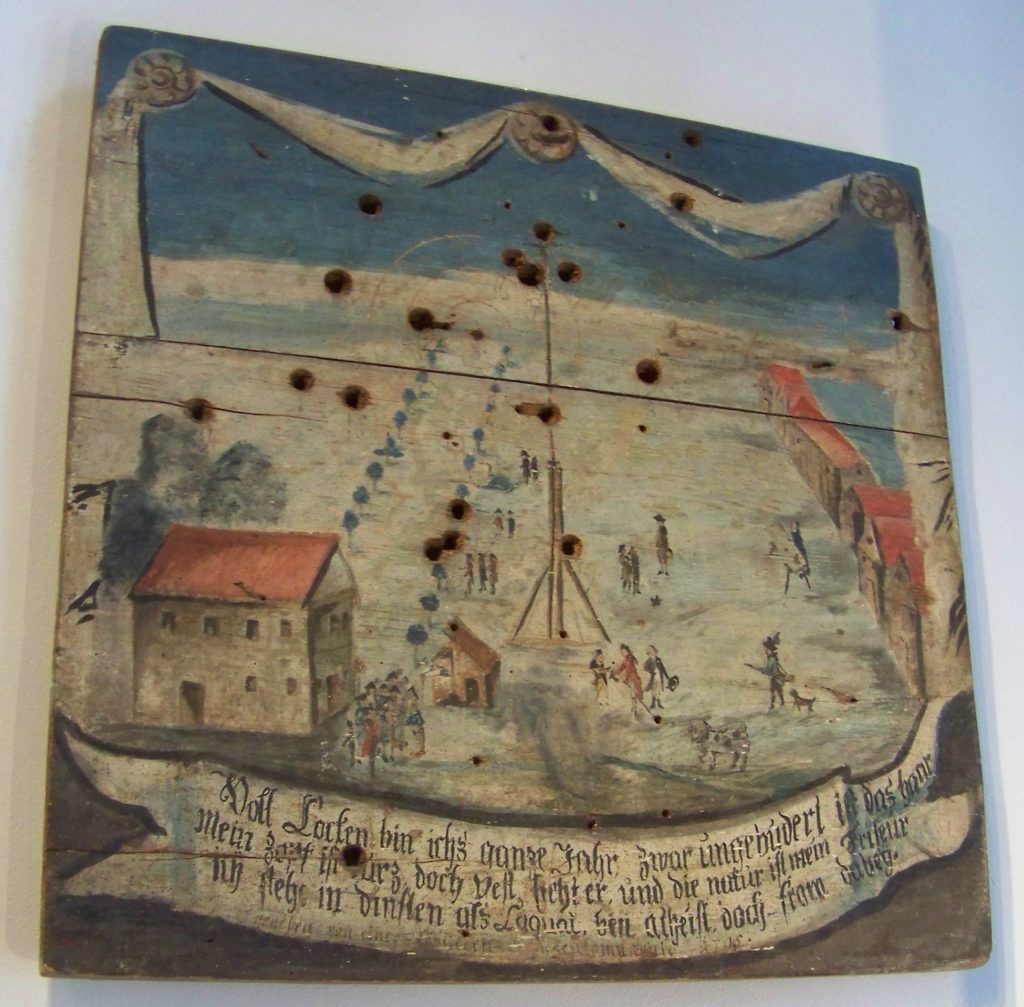
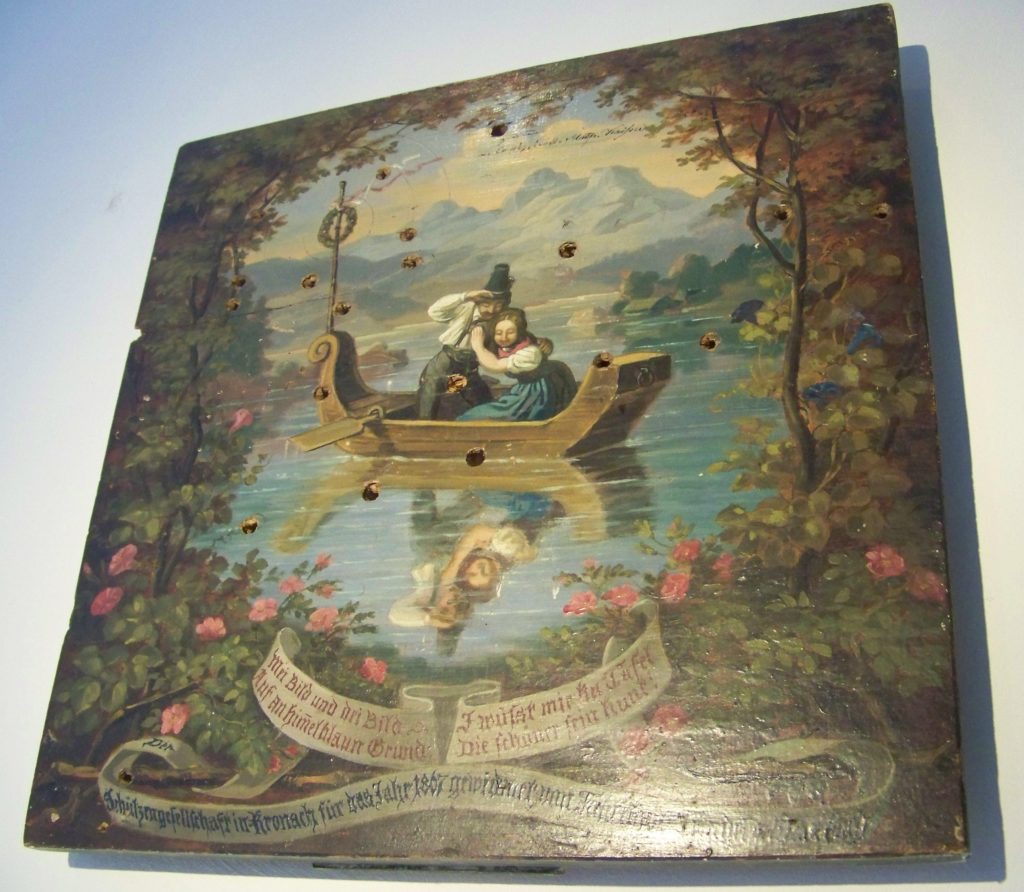

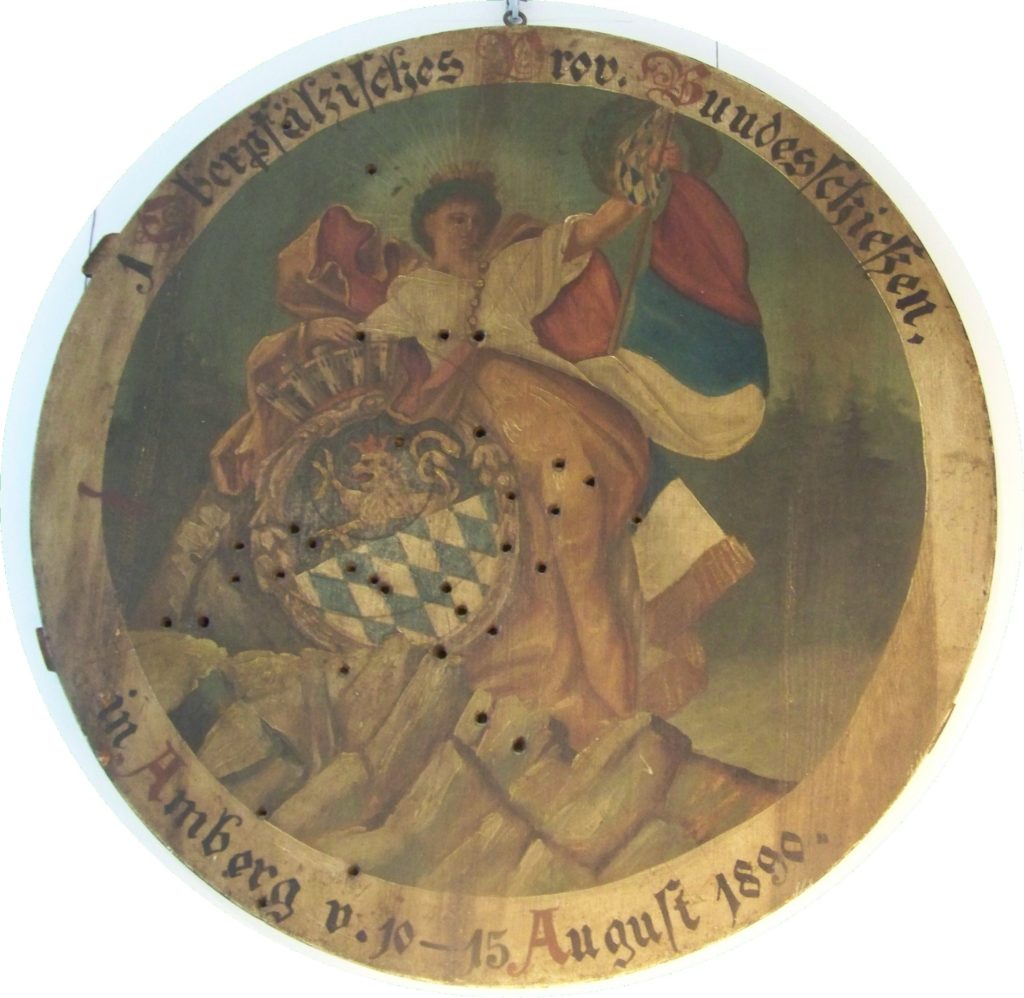
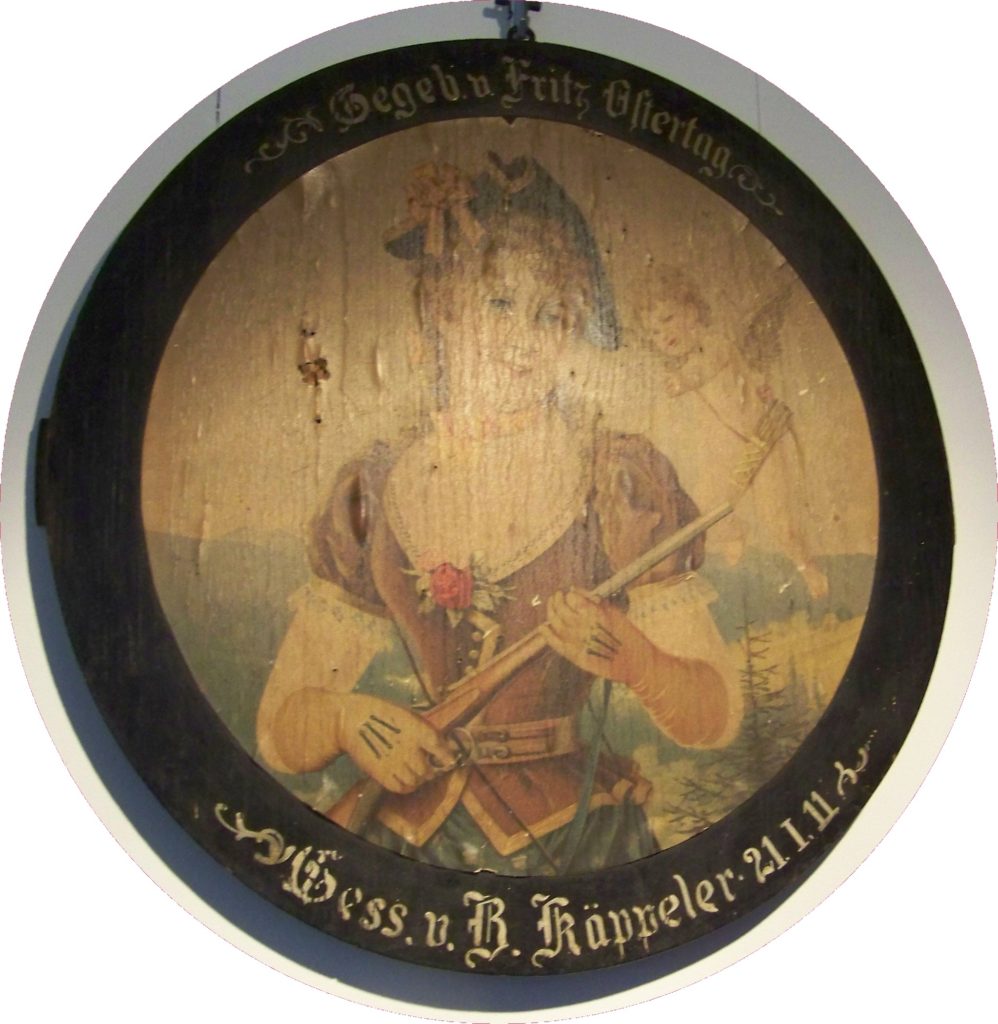


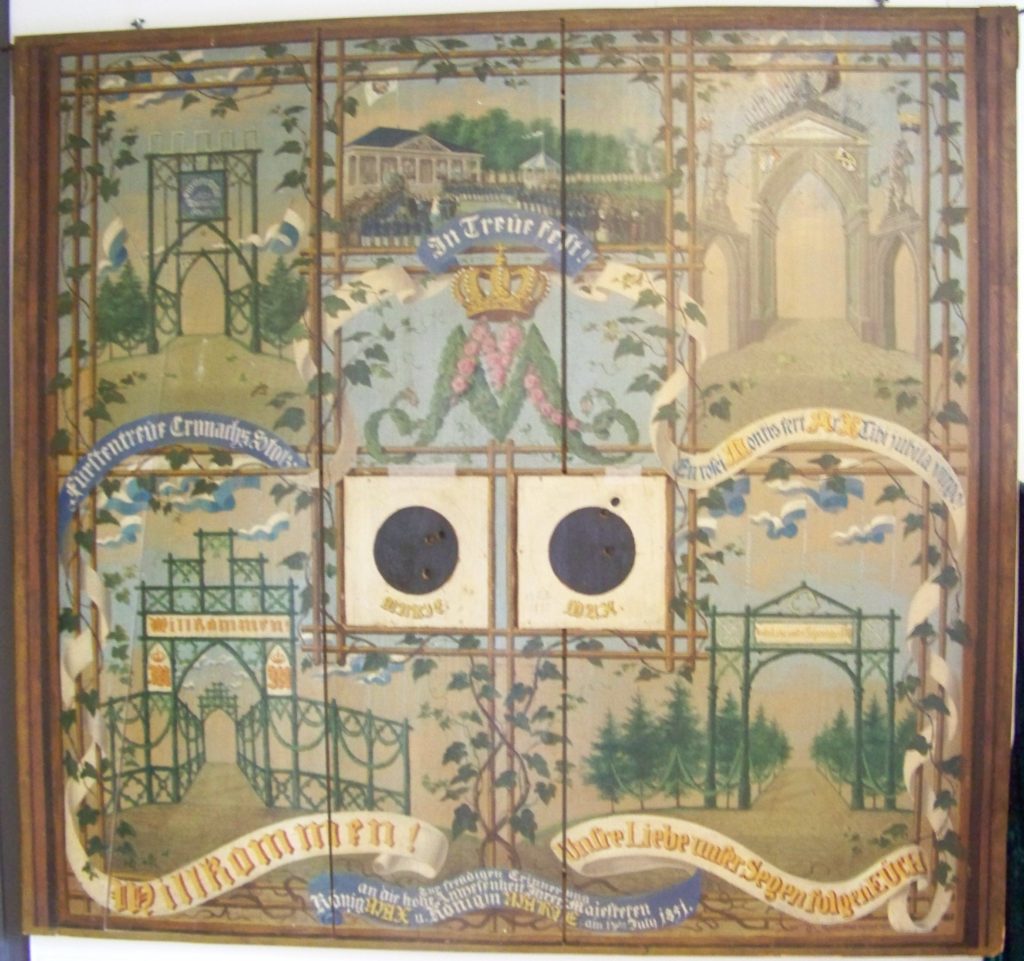

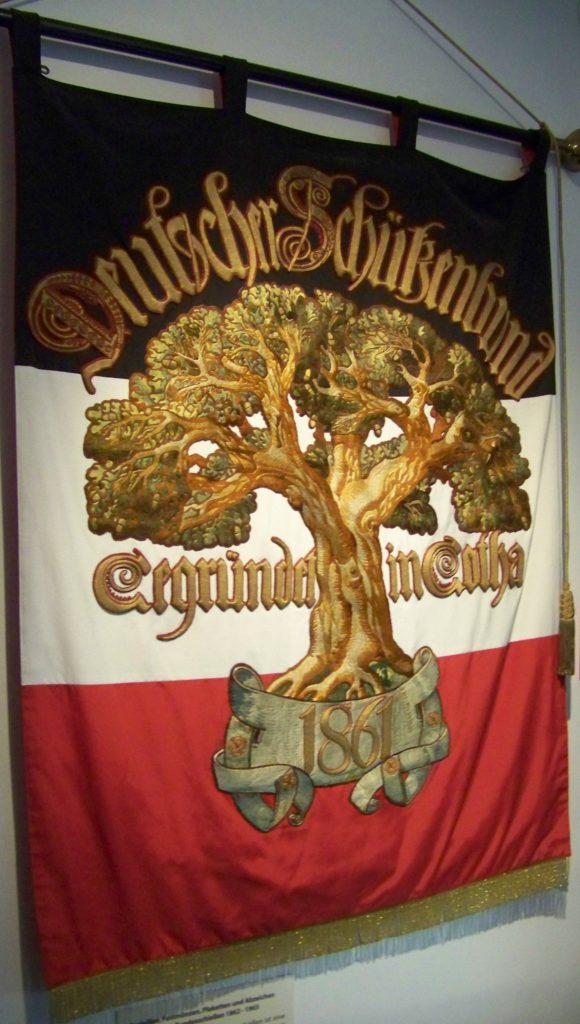
Targets at the Schützen Museum and Grounds at Gotha
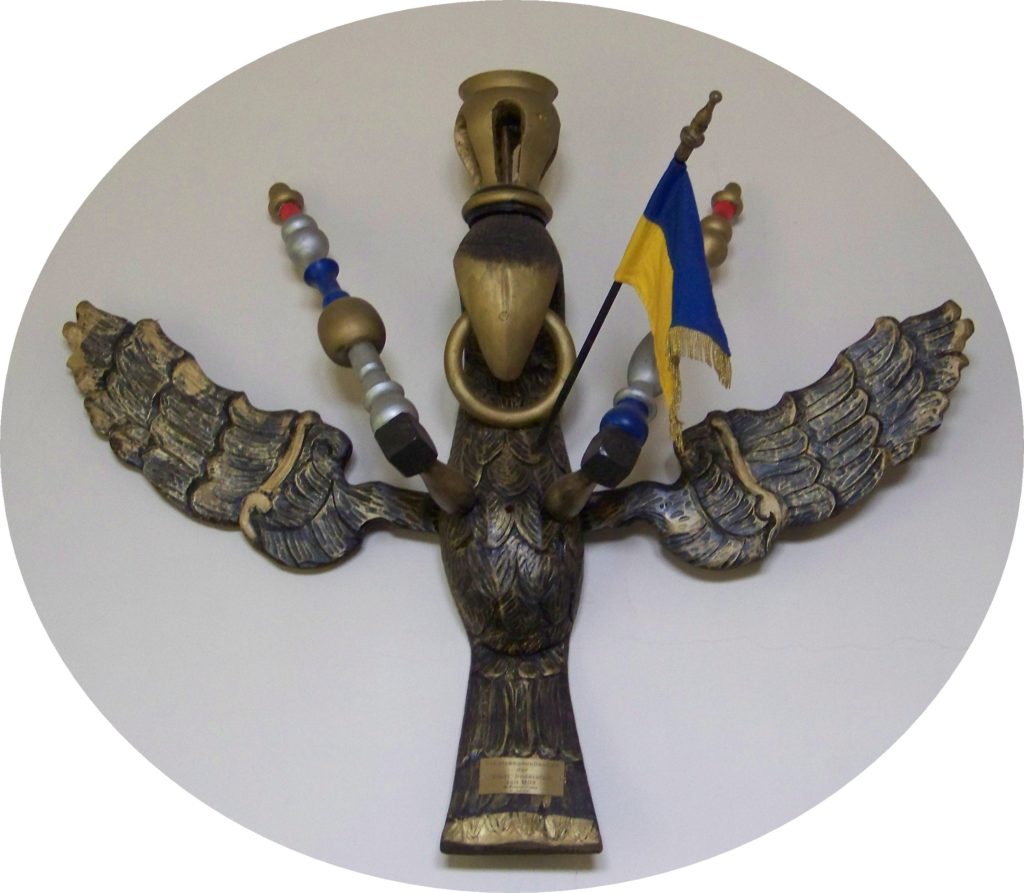
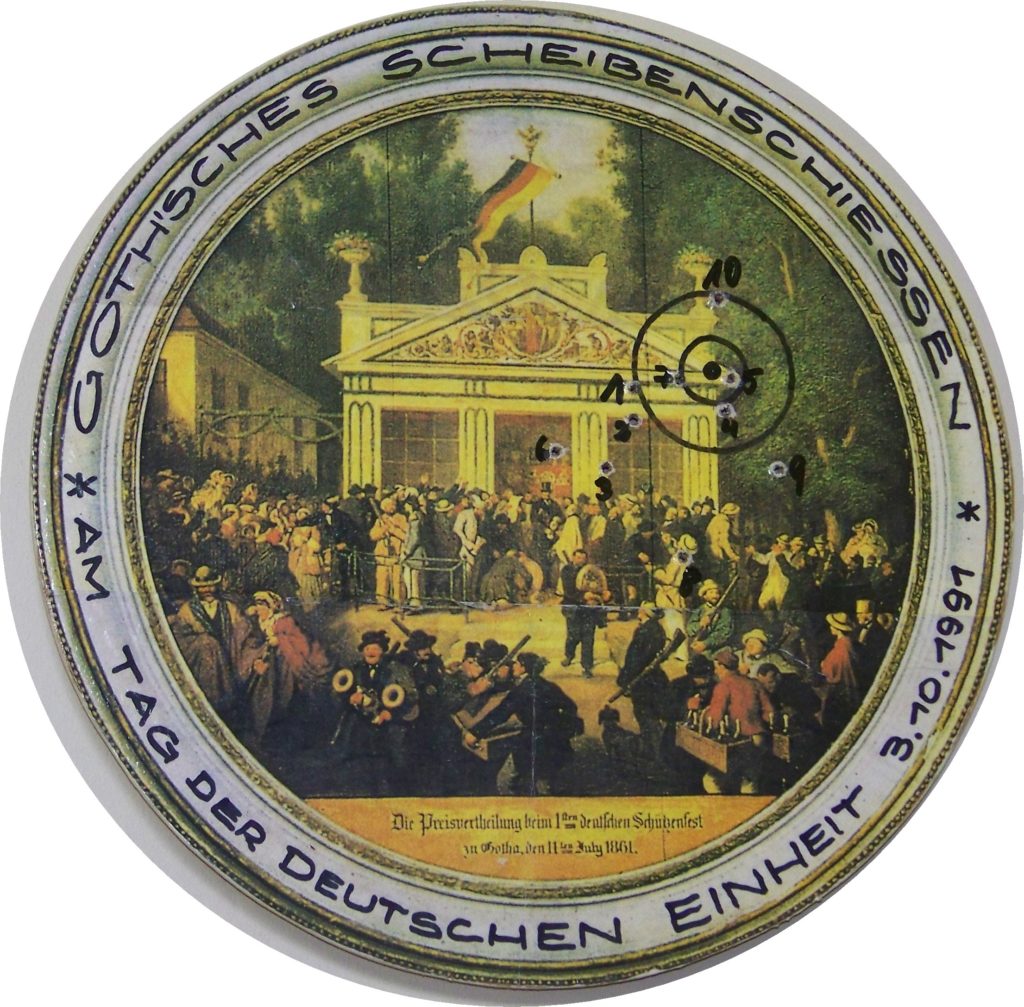
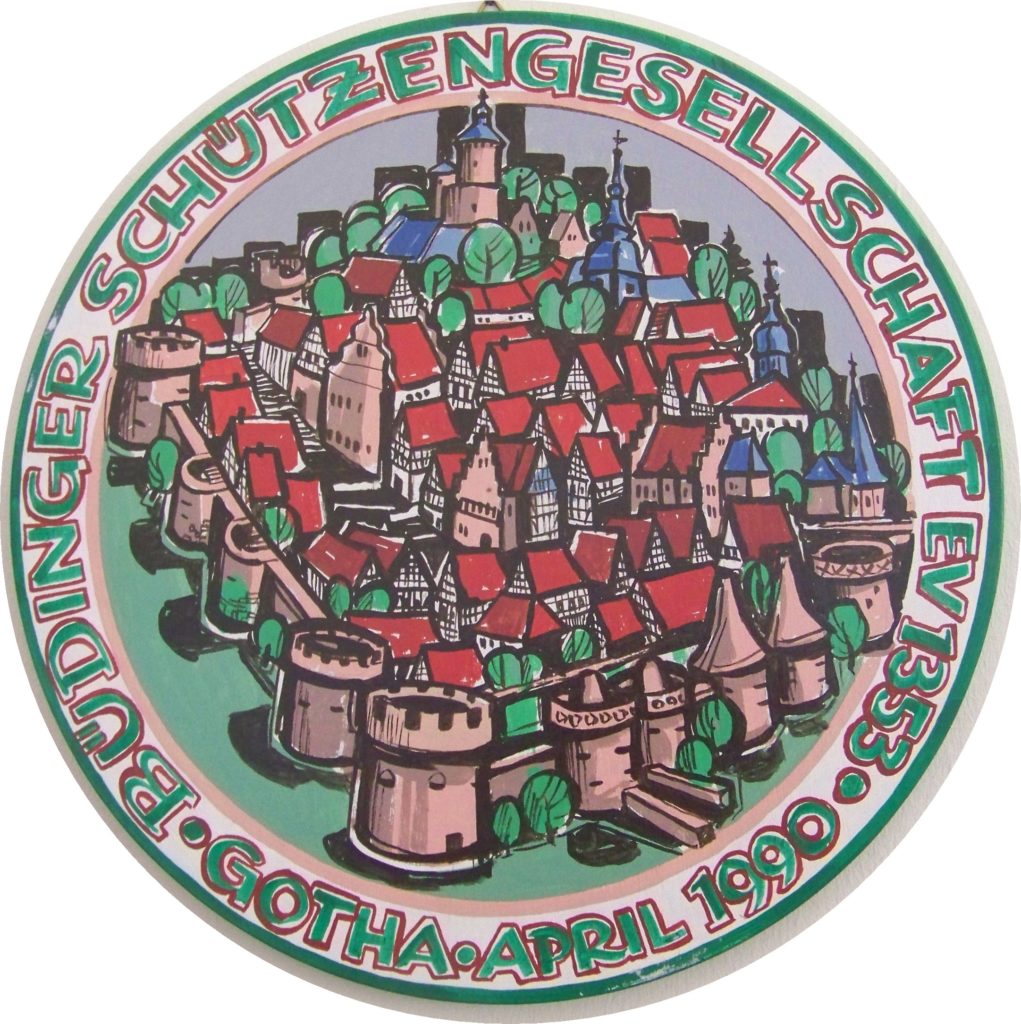
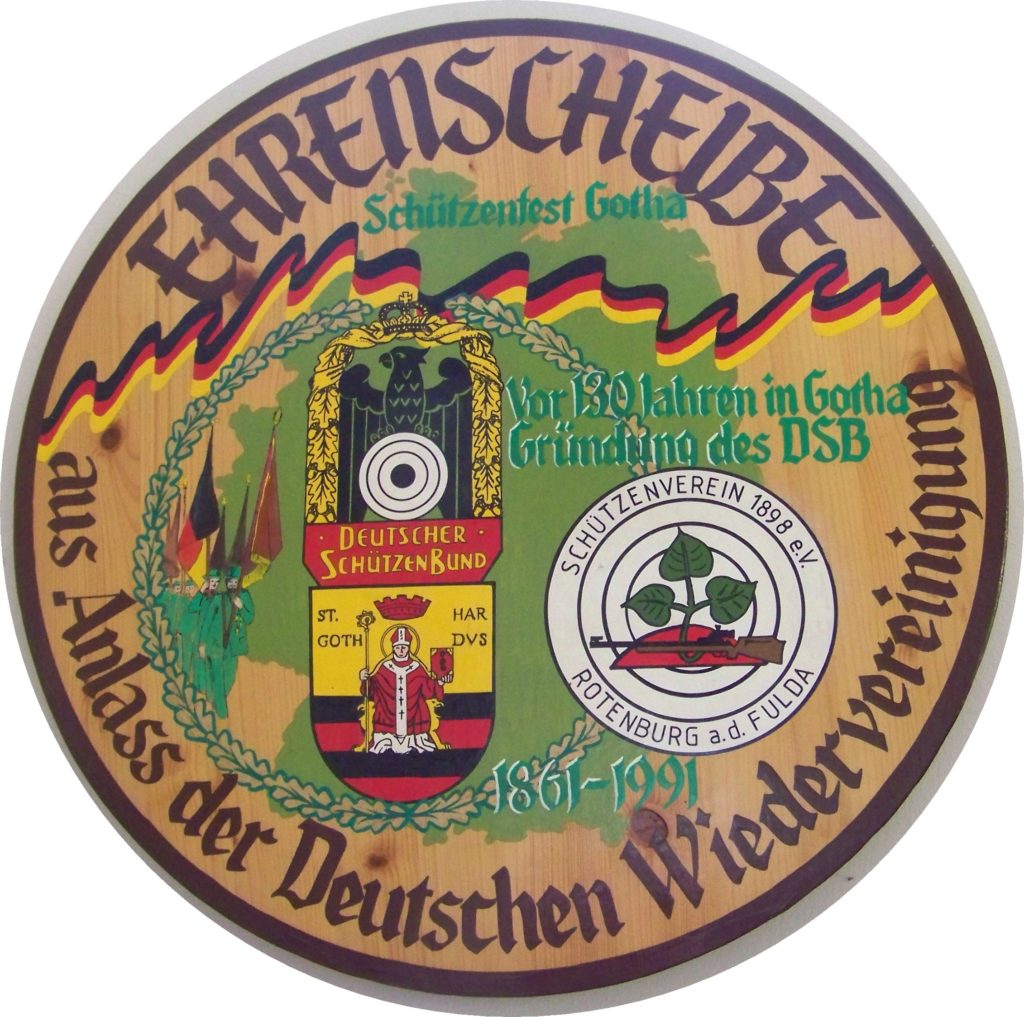

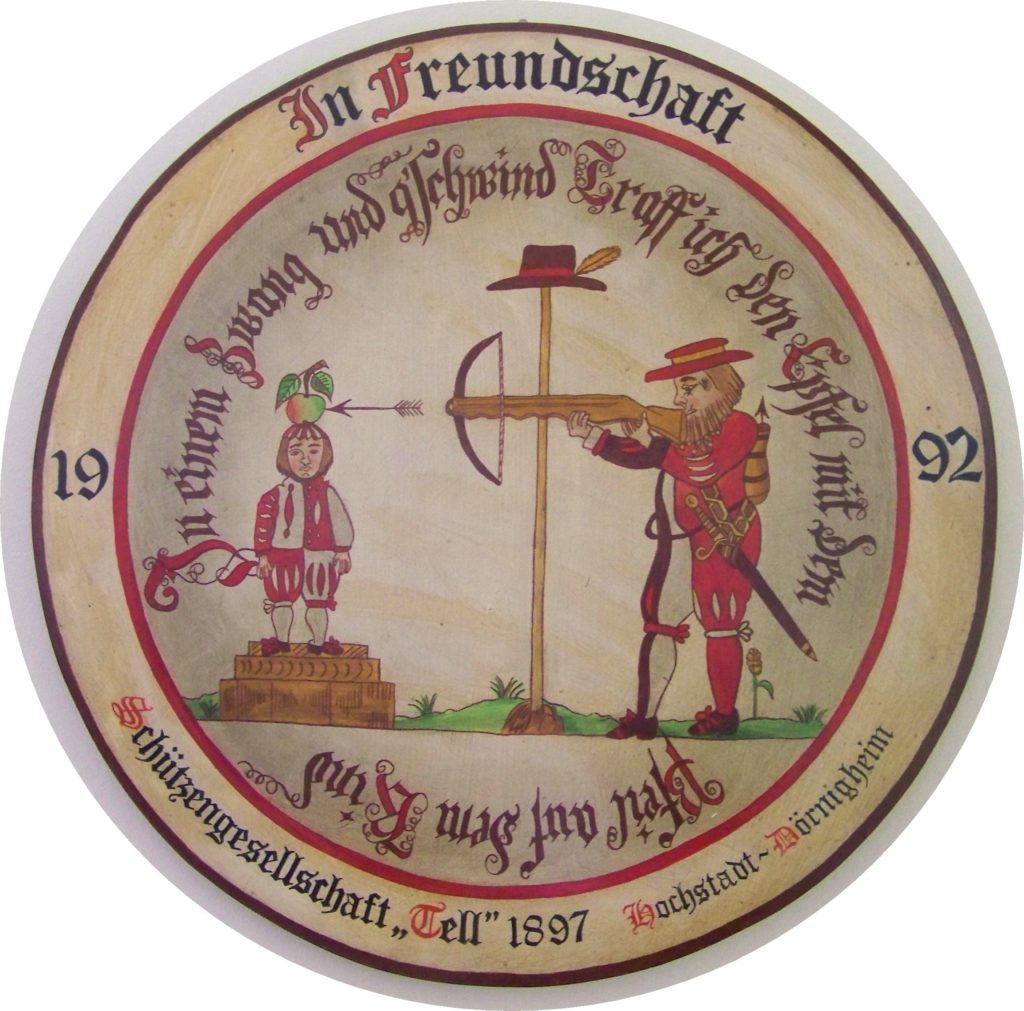

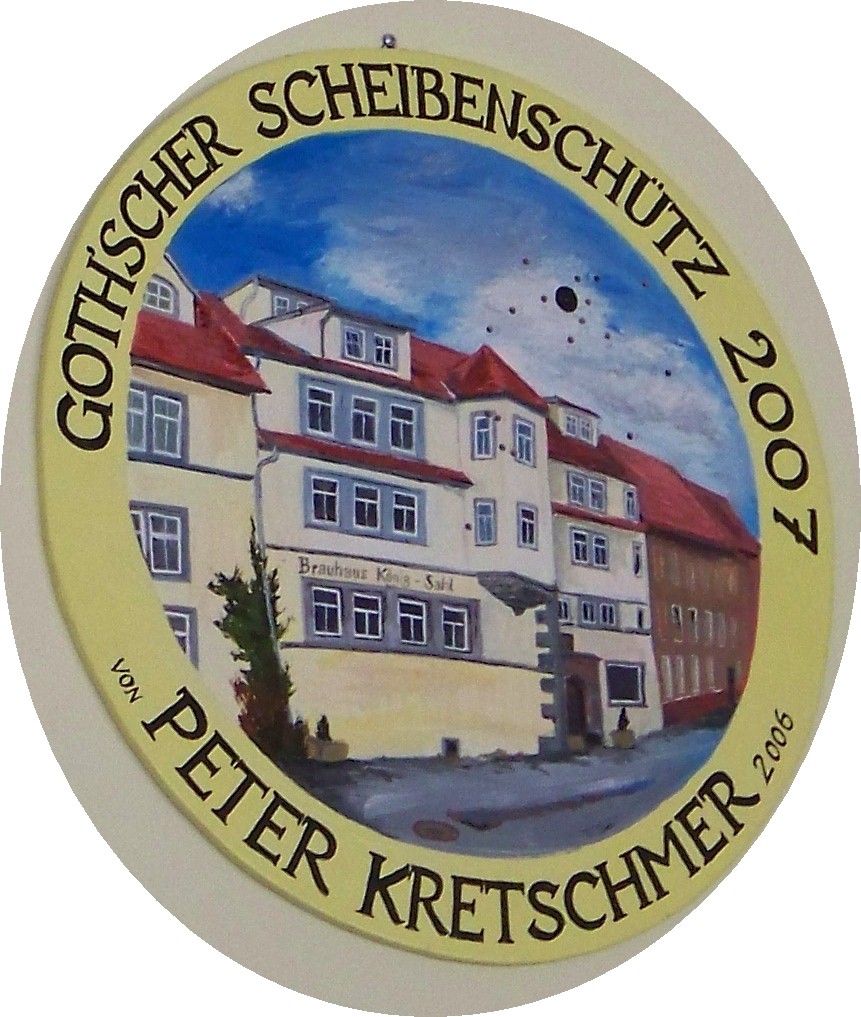
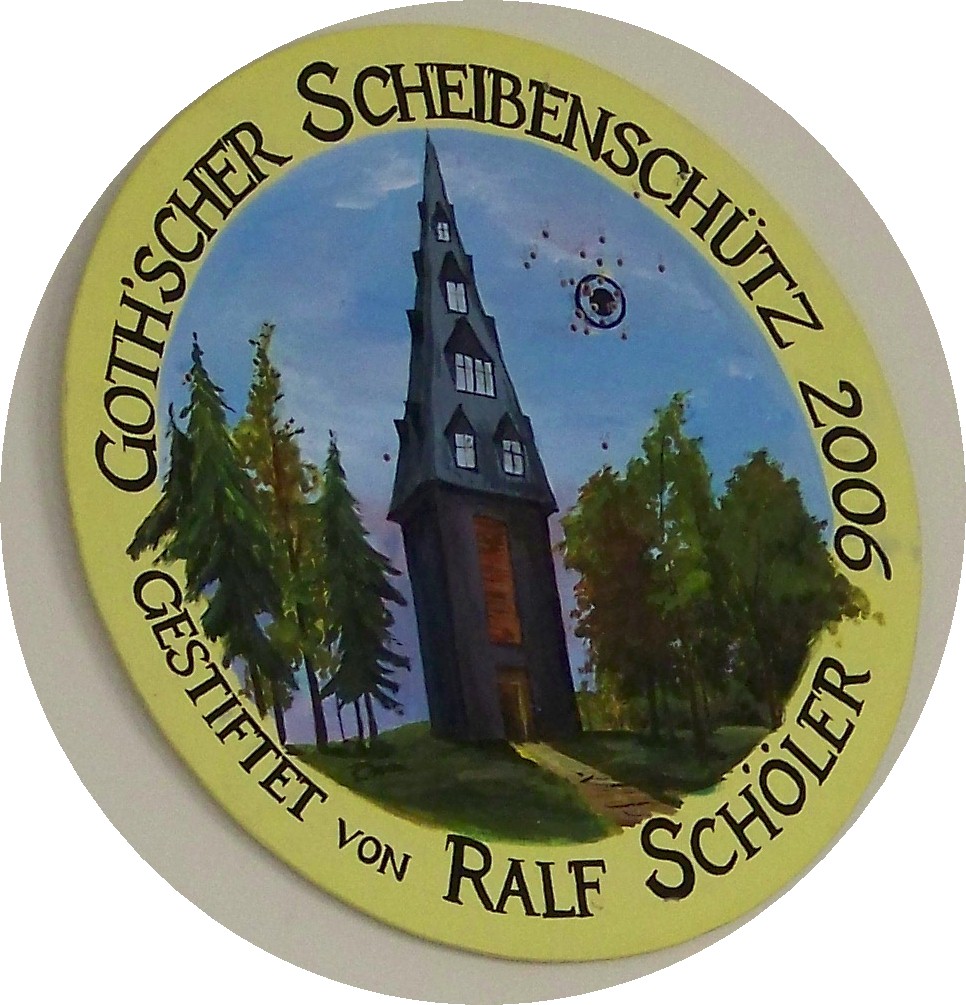
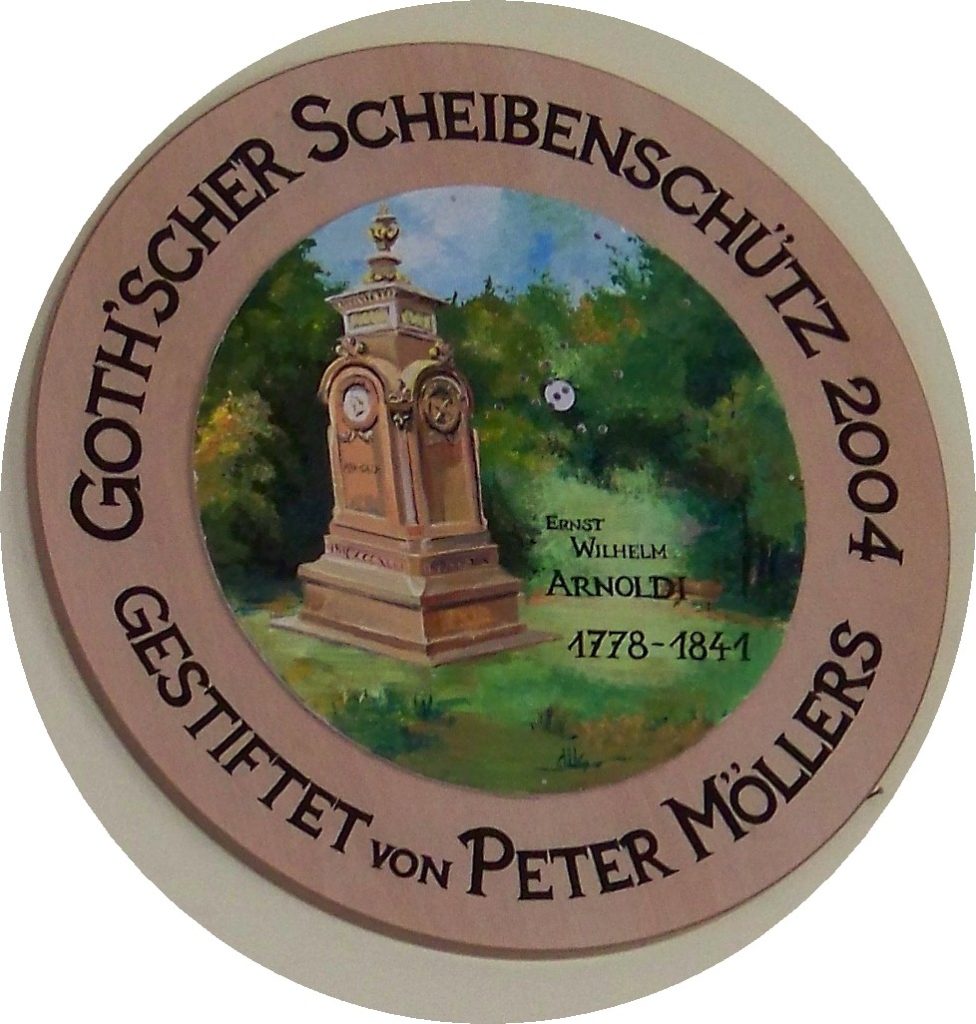
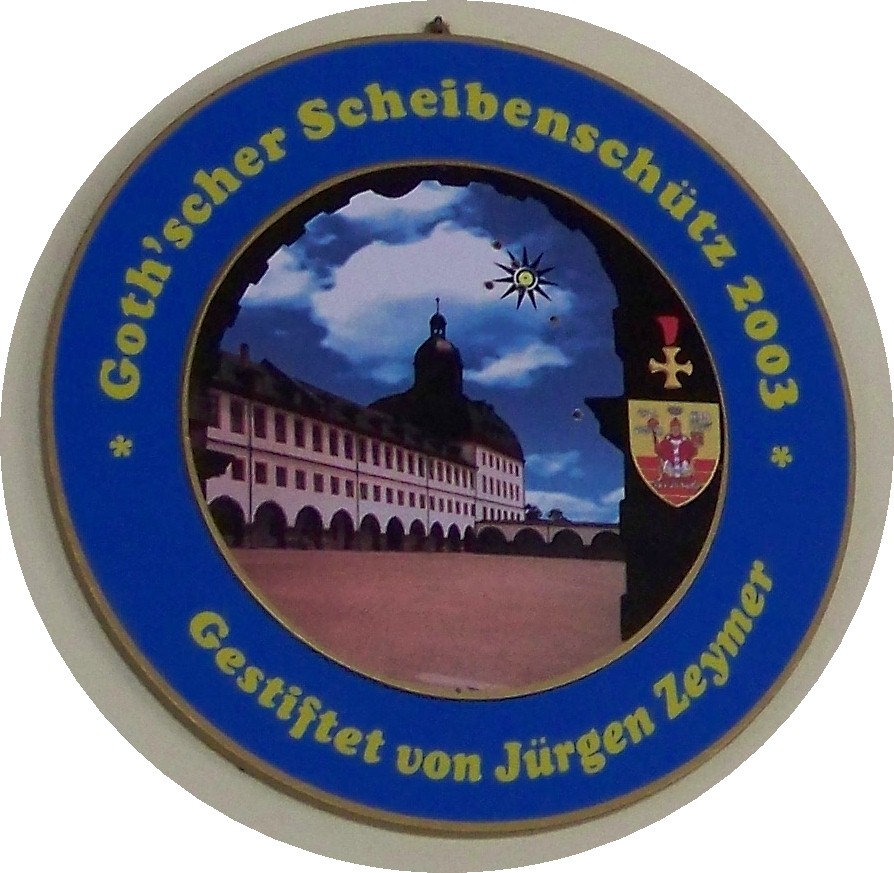
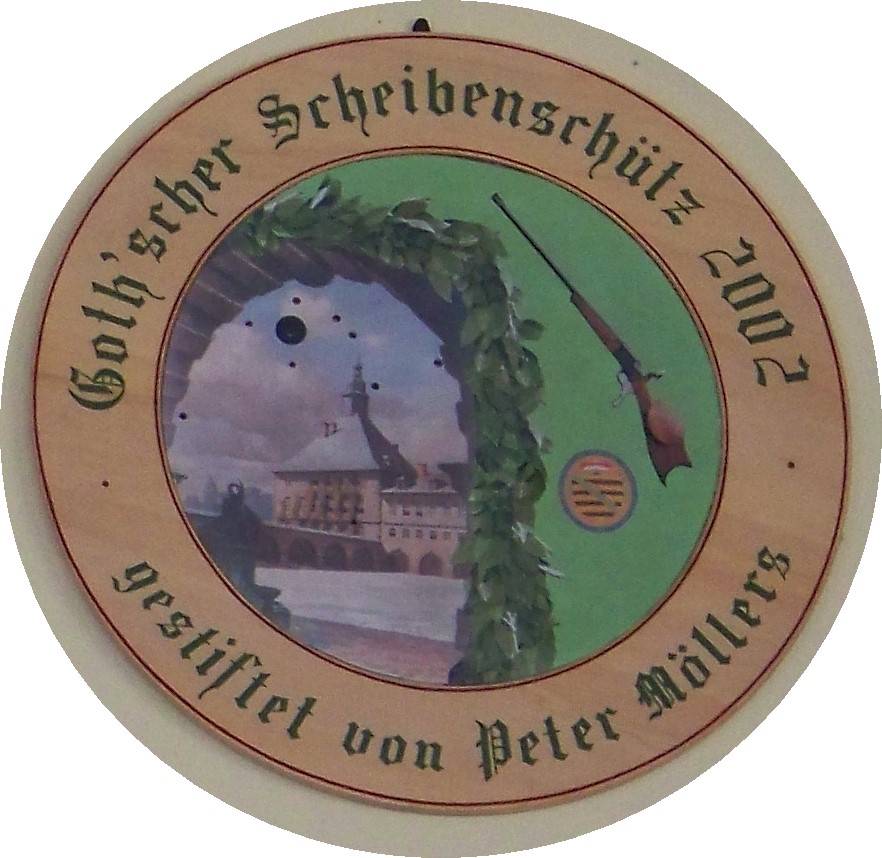
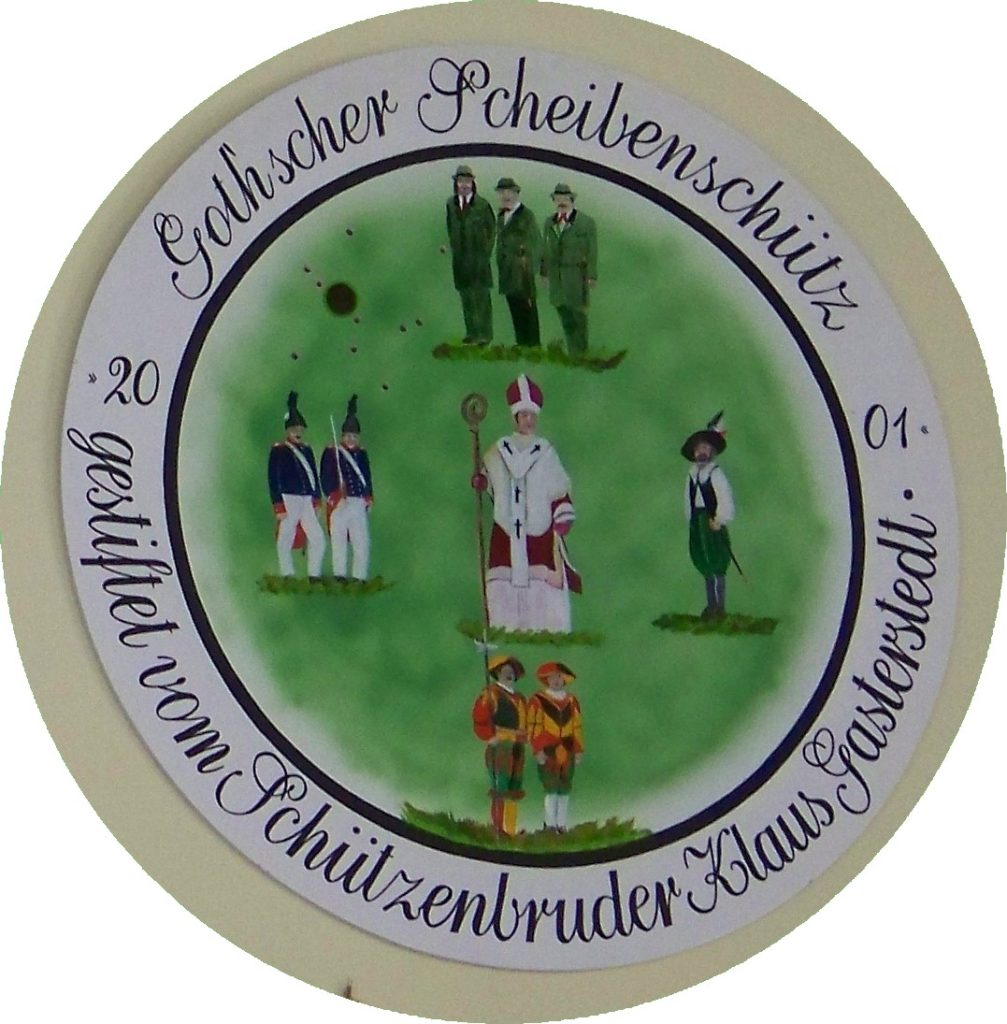
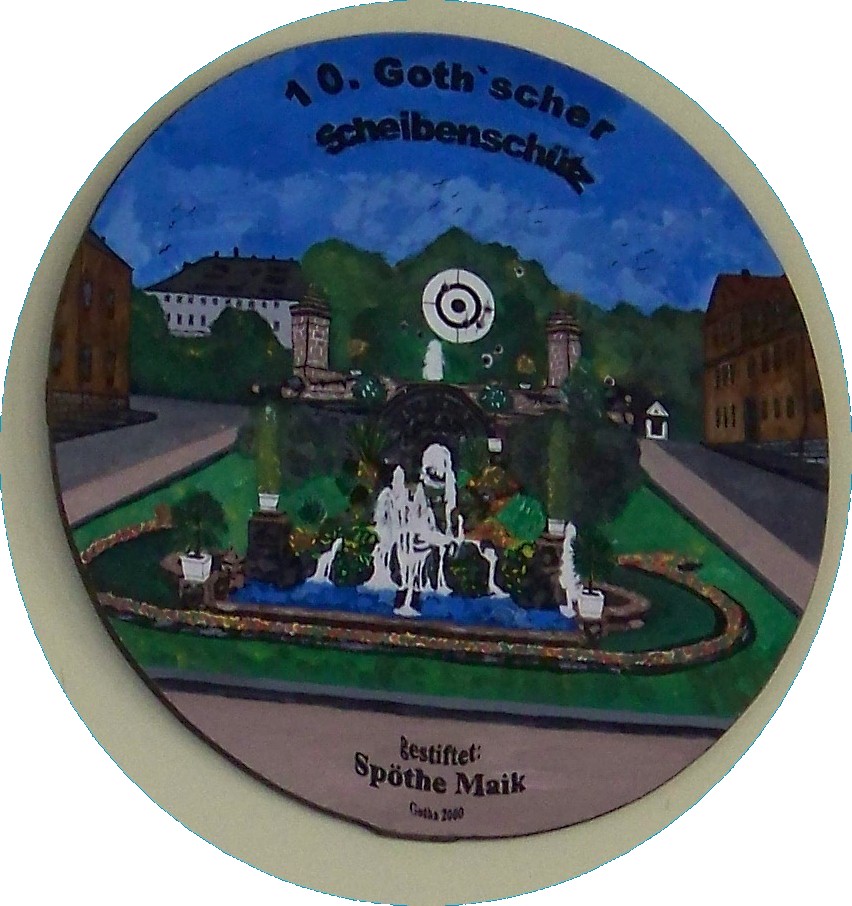
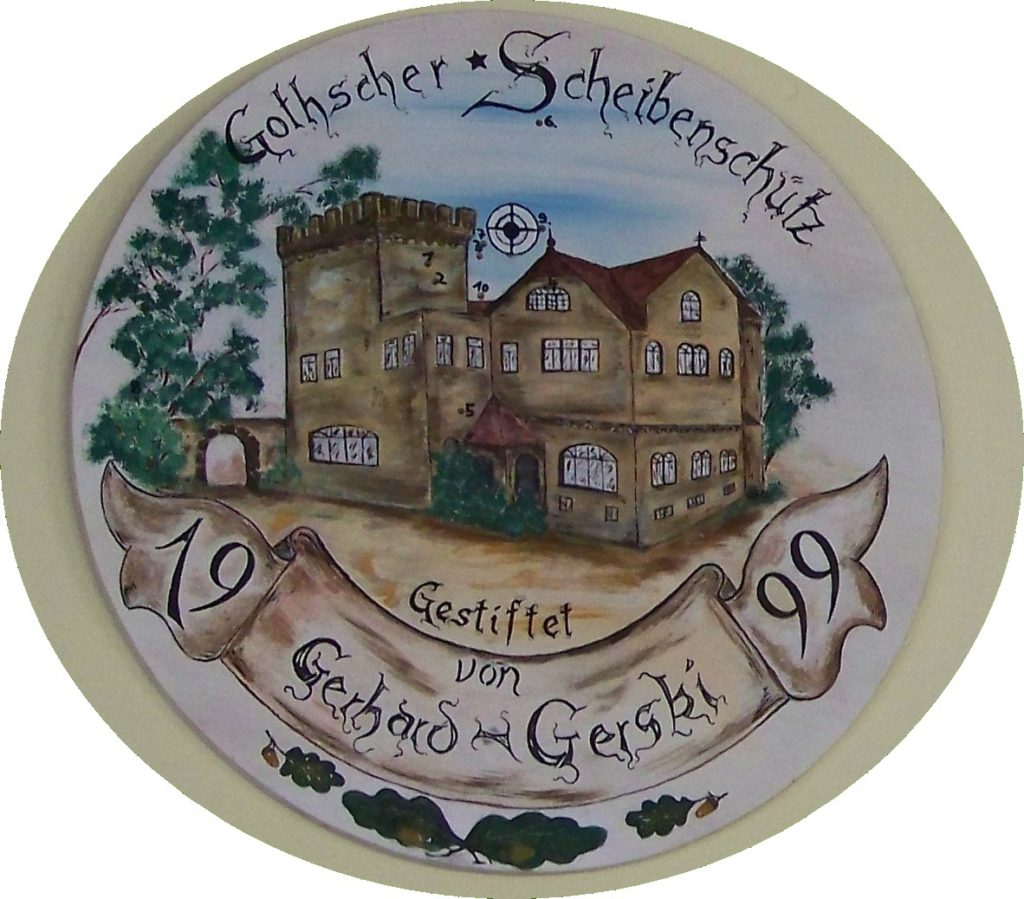

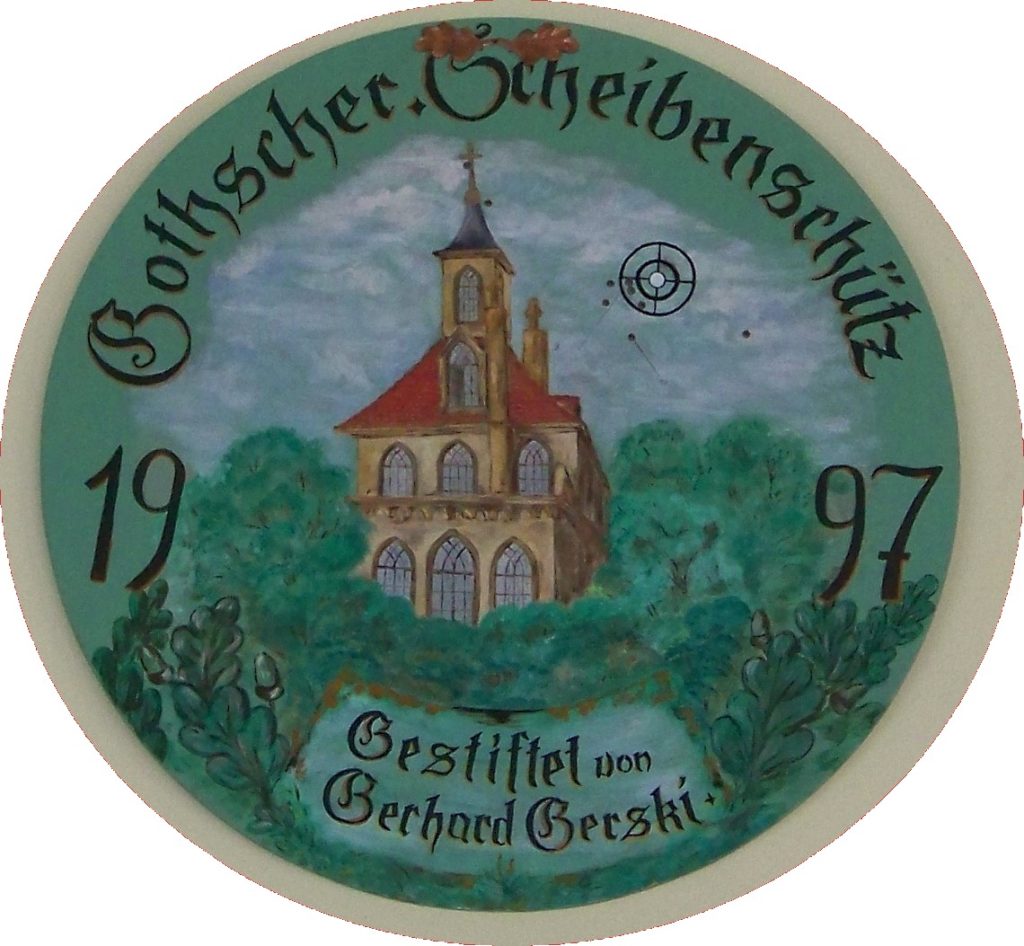
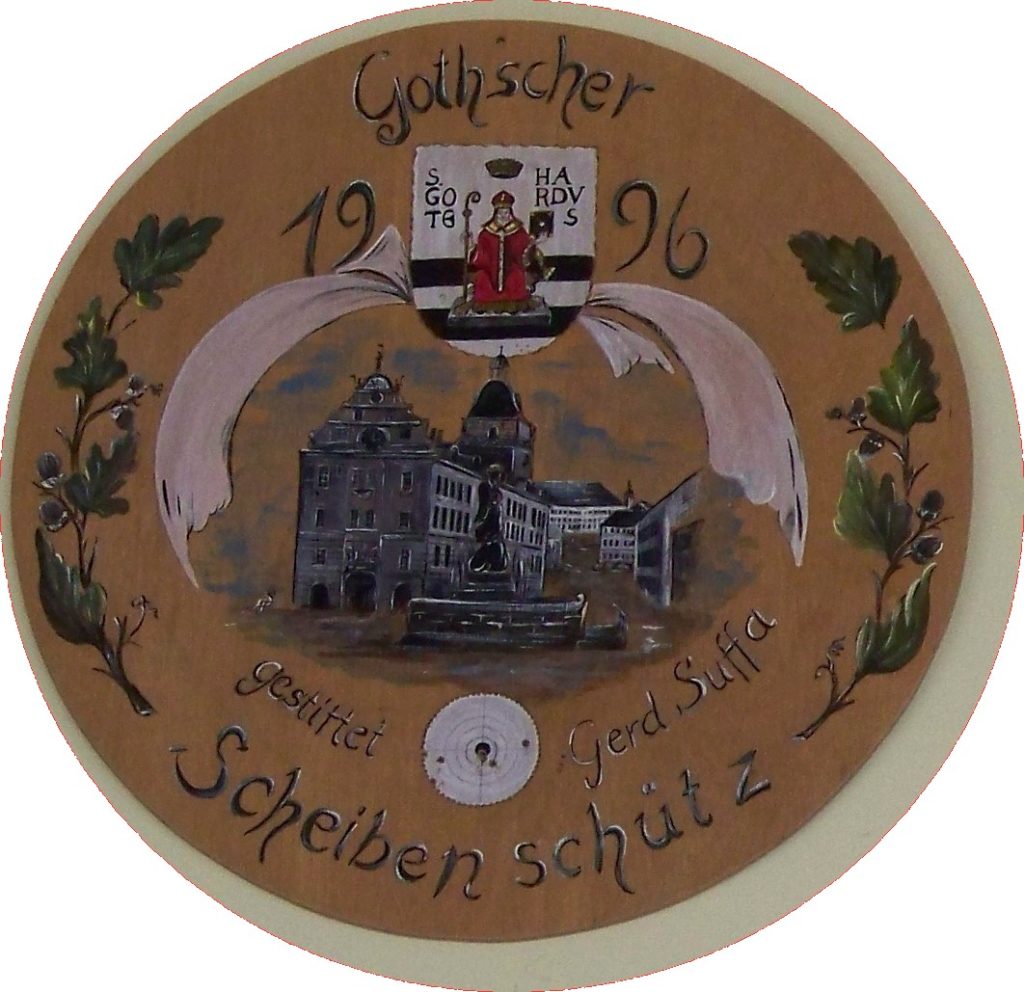
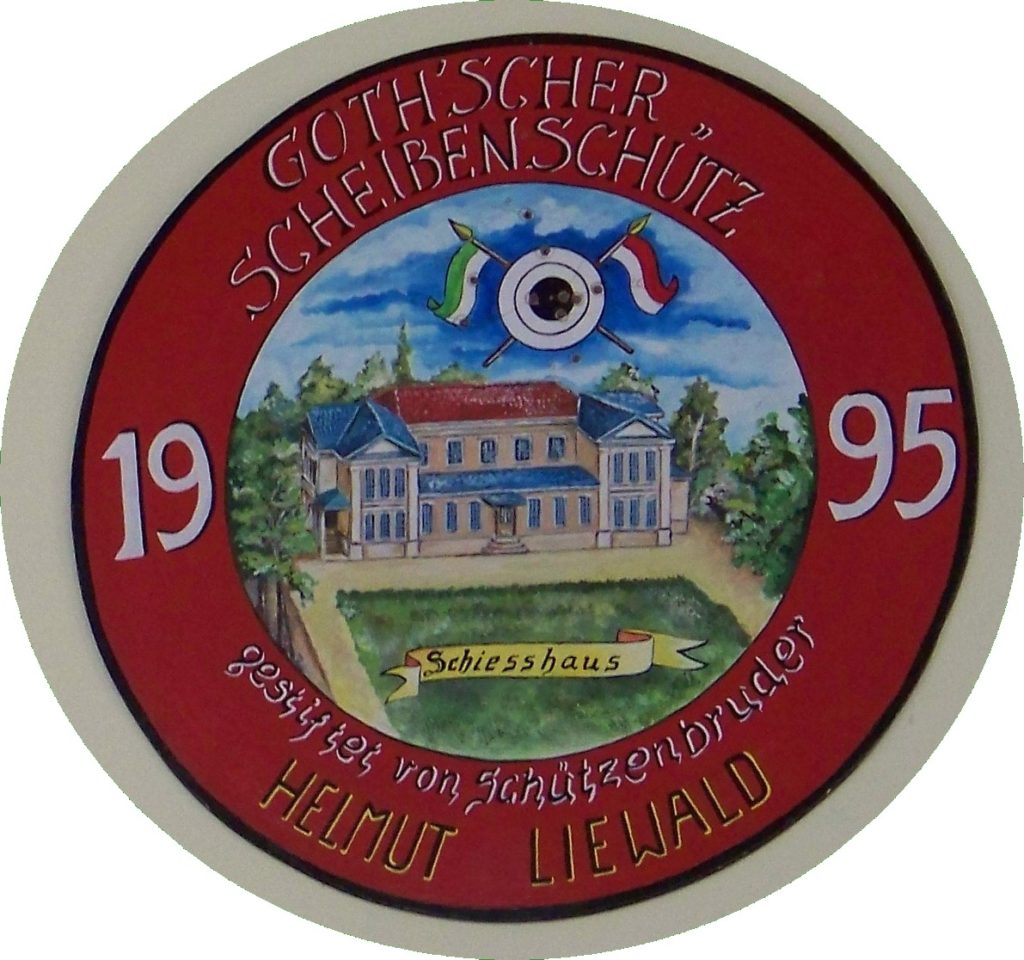
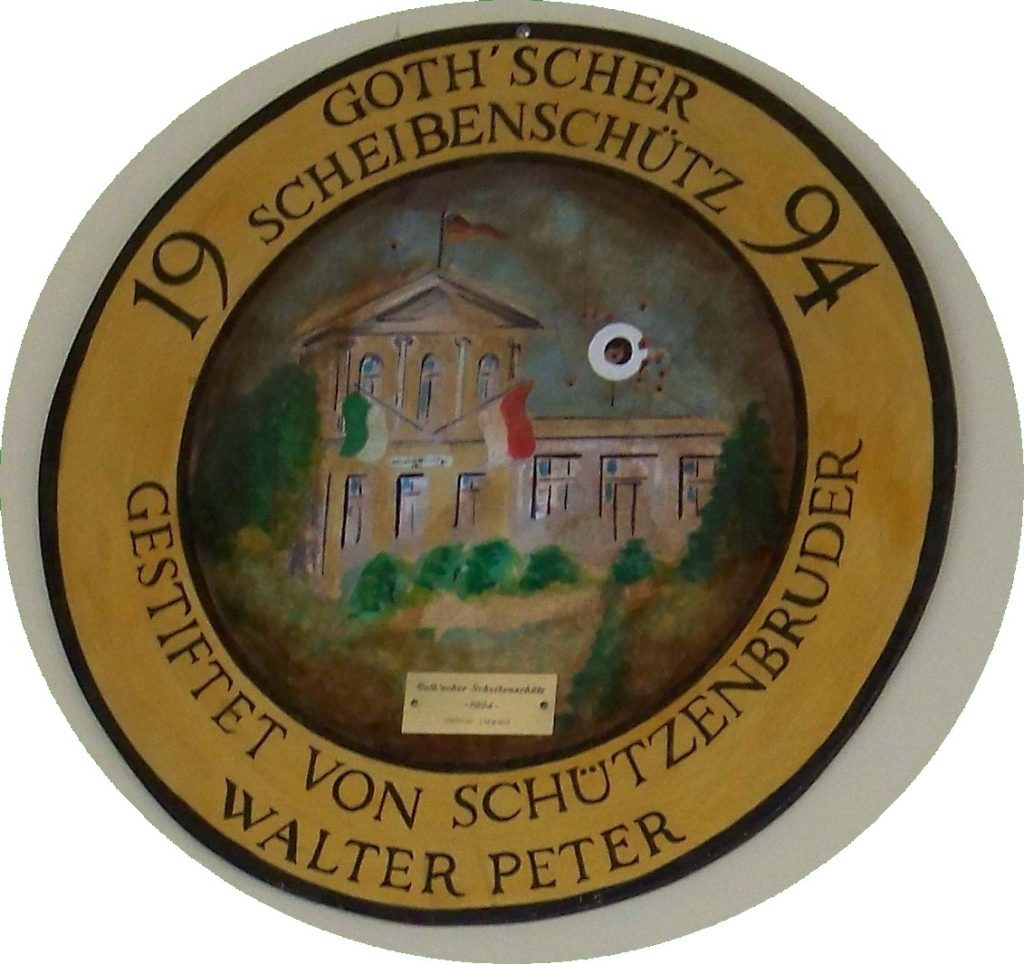
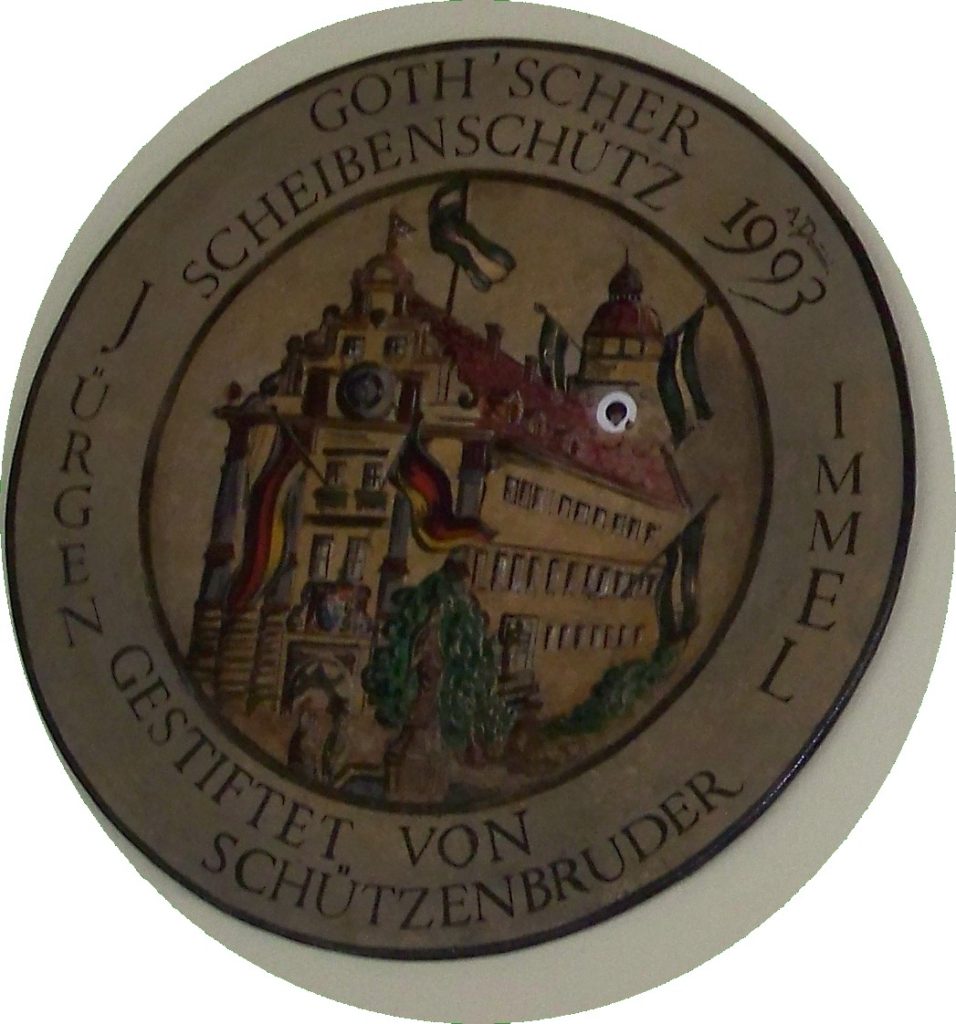

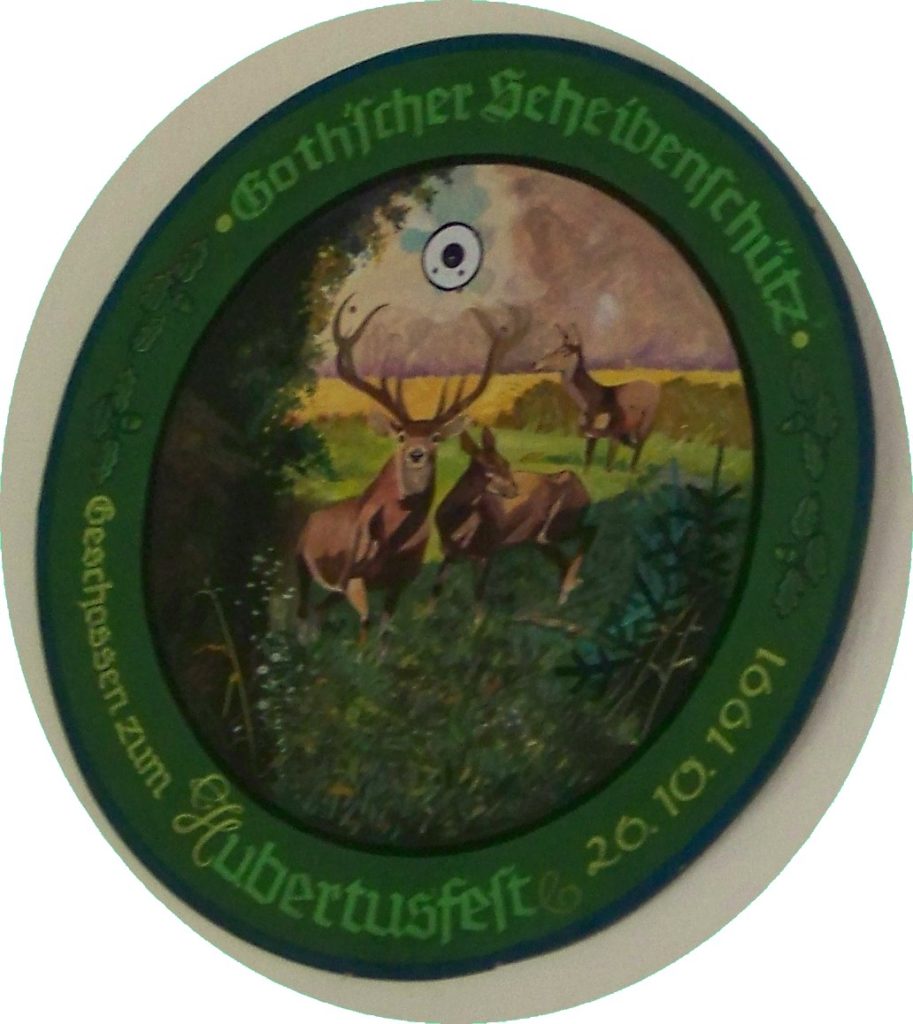
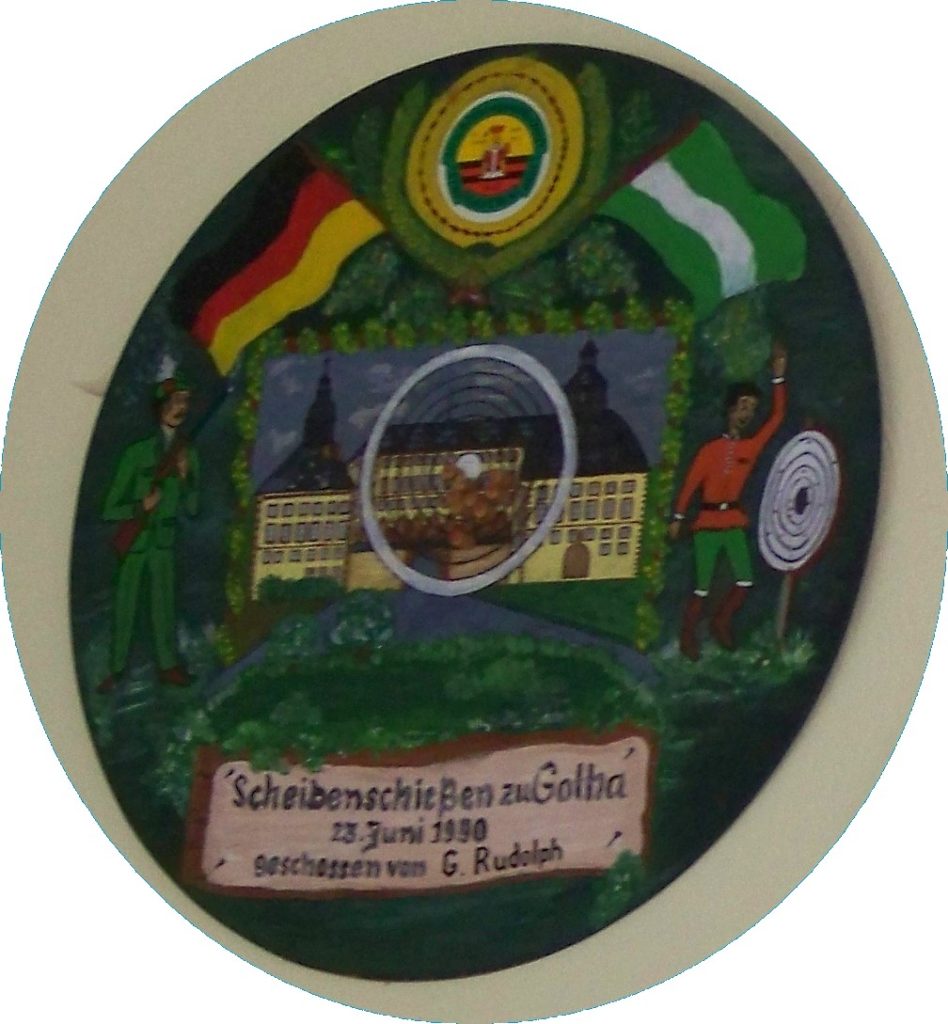
The targets at the Mauser Museum in Oberndorf
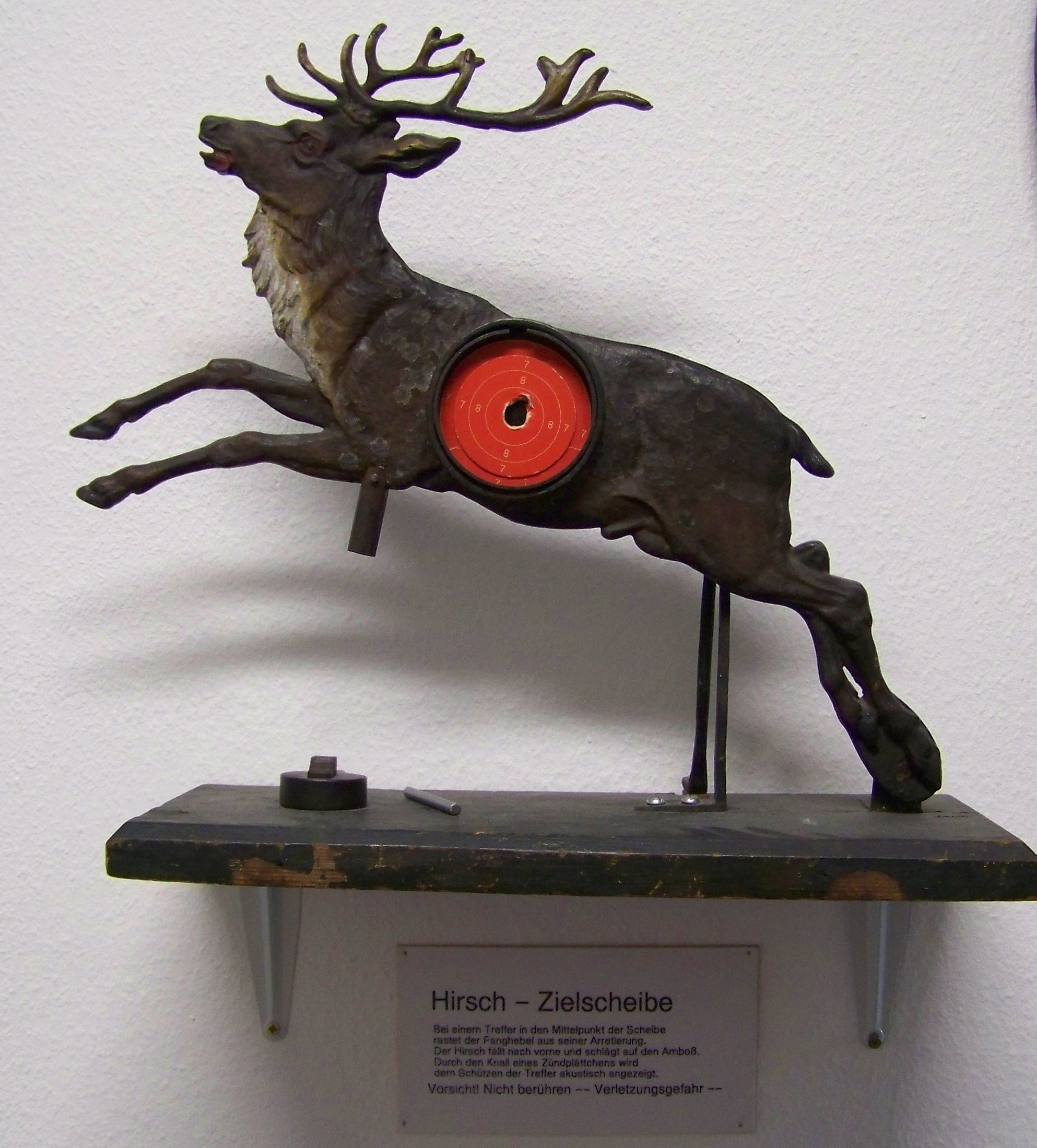
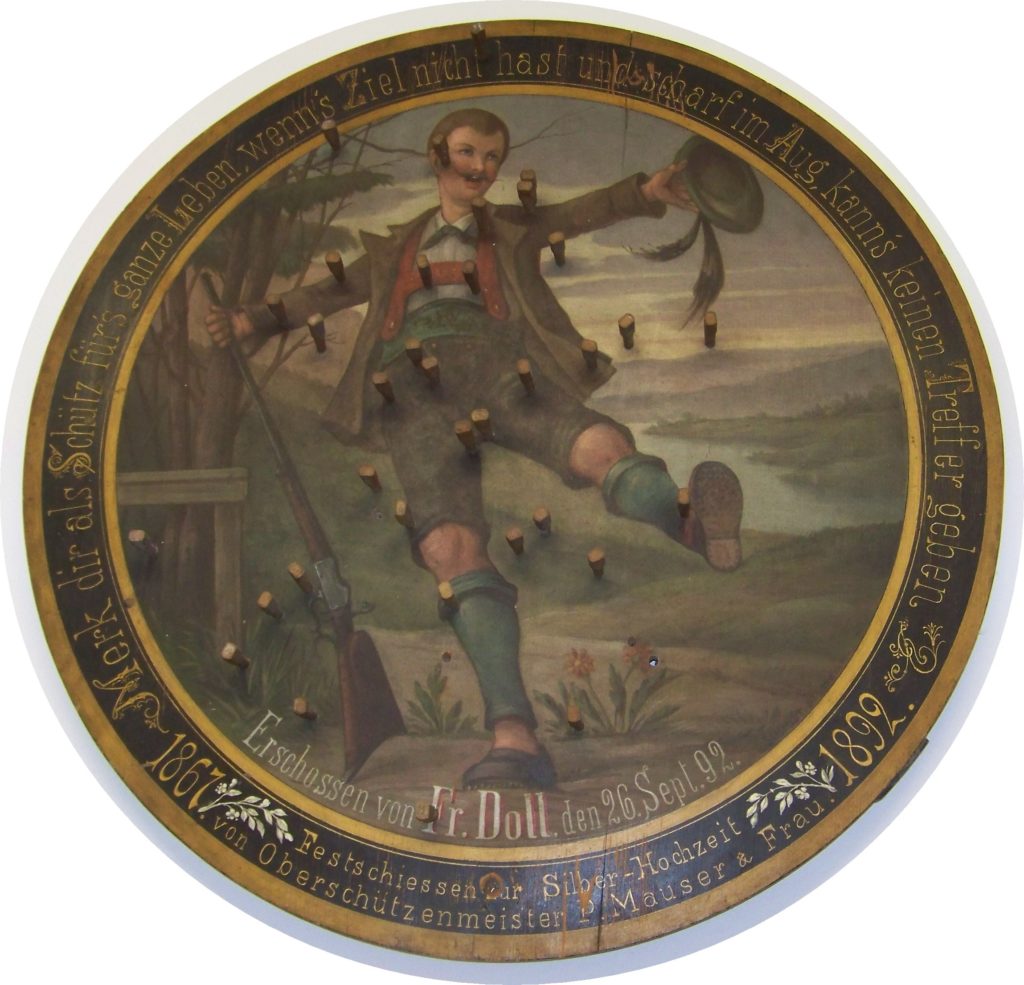

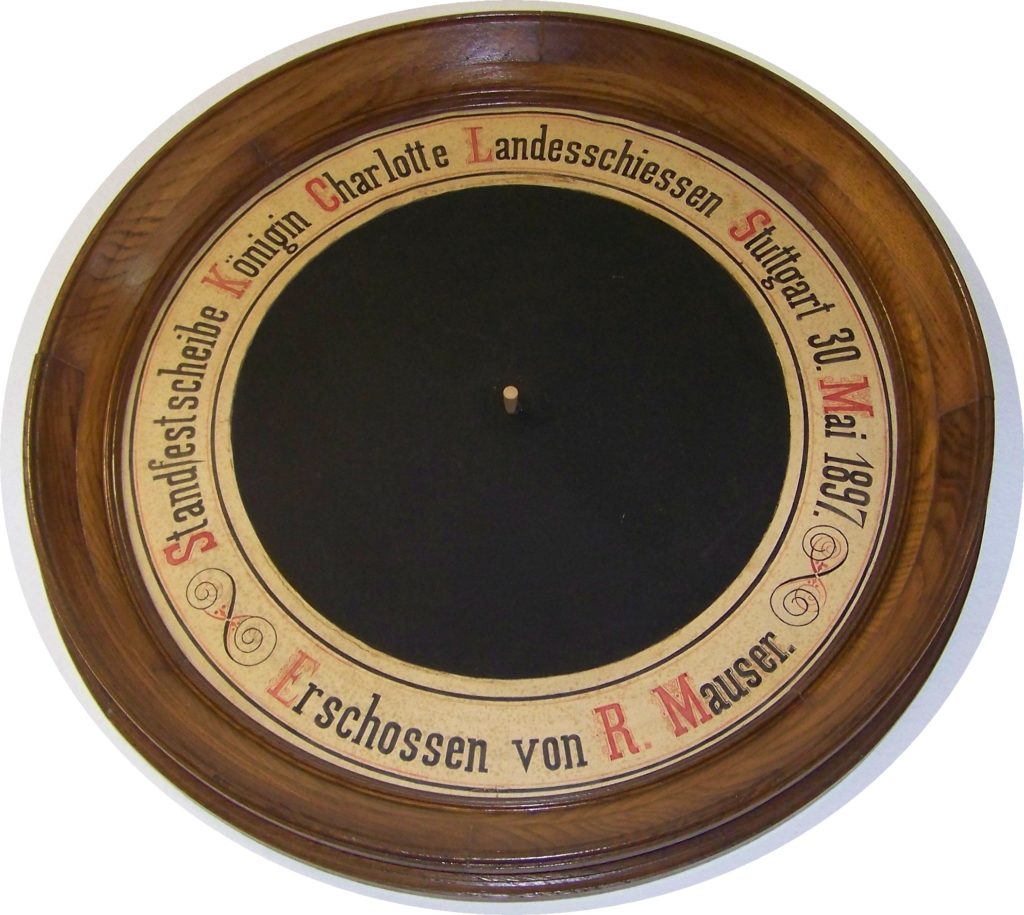
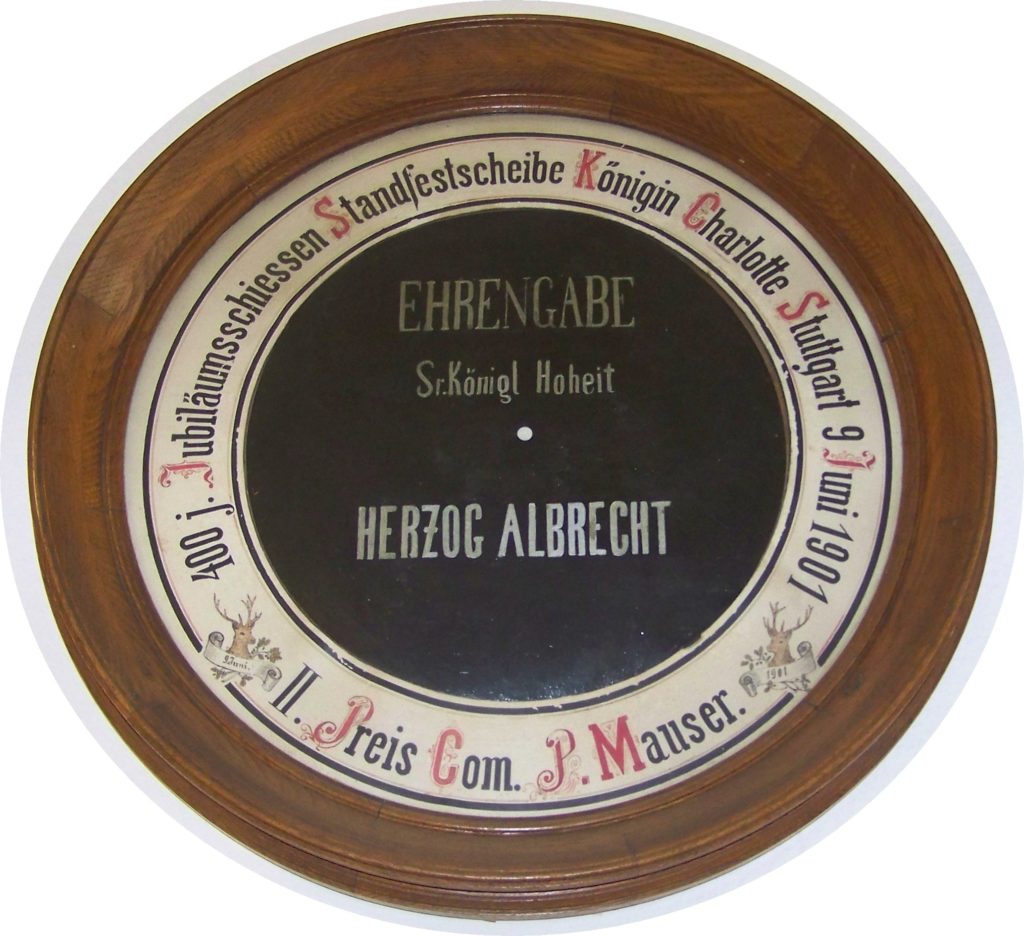
Zimmerstutzen and Luftgwehre Targets-
The following targets are used for Zimmerstutzen and air rifle practice. This is usually done indoors and the subject matter of these targets range from the round 10 ring to many animals and to humorous and risque. The cards they are printed on generally measure 5 1/2 inches square (14 mm).
Many of these Zimmerstutzen and Luftgwehre targets were mounted on and held by target galleries which showed a display when the shooter hit the center or bulls eye. The following Zielscheiben were offered for sale by the Oscar Will firm of Zella St. Blasii in their 1902/03 catalog.
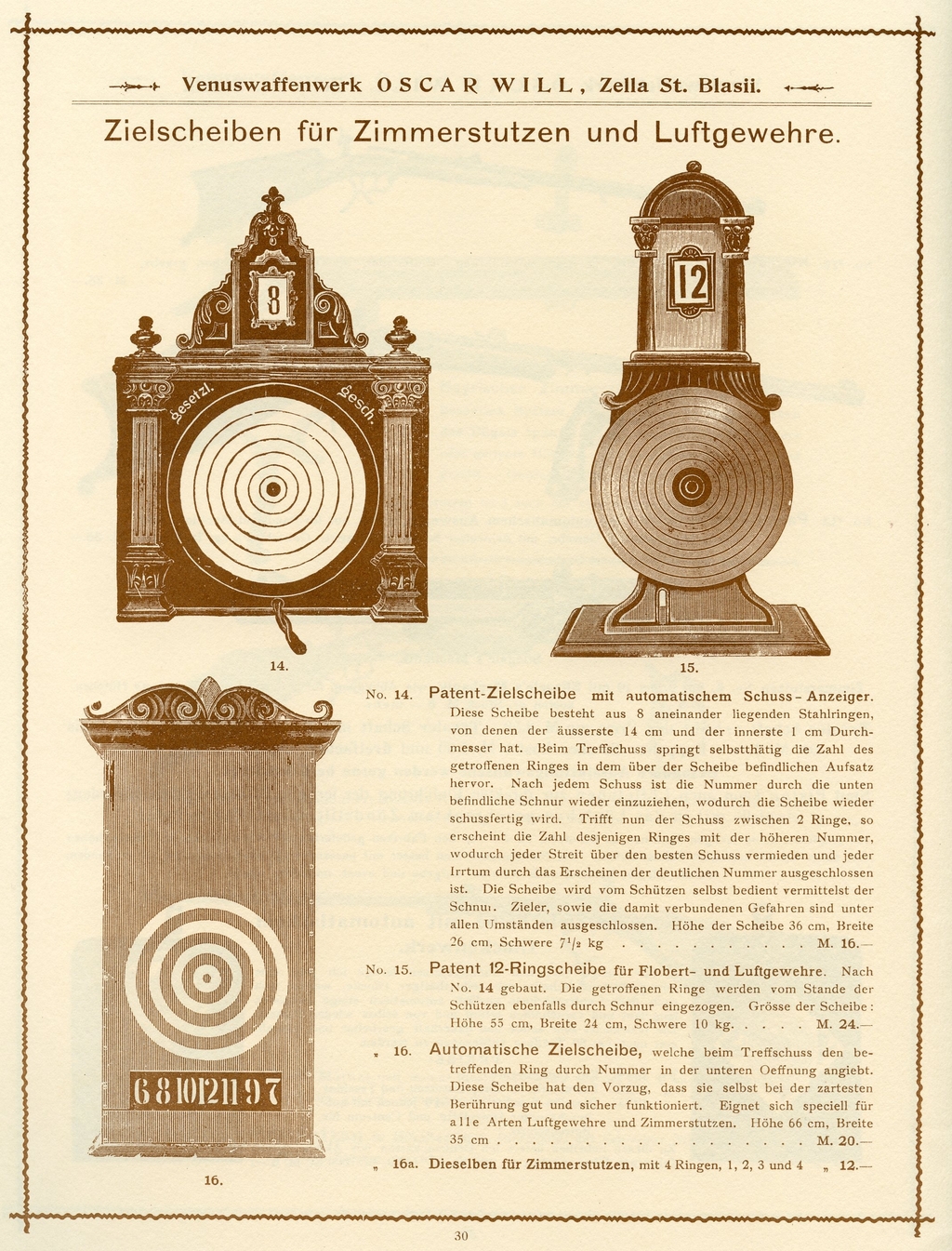

Before we look at the individual targets we have a very old chromolithographed sheet that measures 18 inches by 24 inches with six different targets printed on it. Each target ring measures 7 1/4 inches in diameter. The date code on it reads III/18/97 which I would interpret to be 1897.
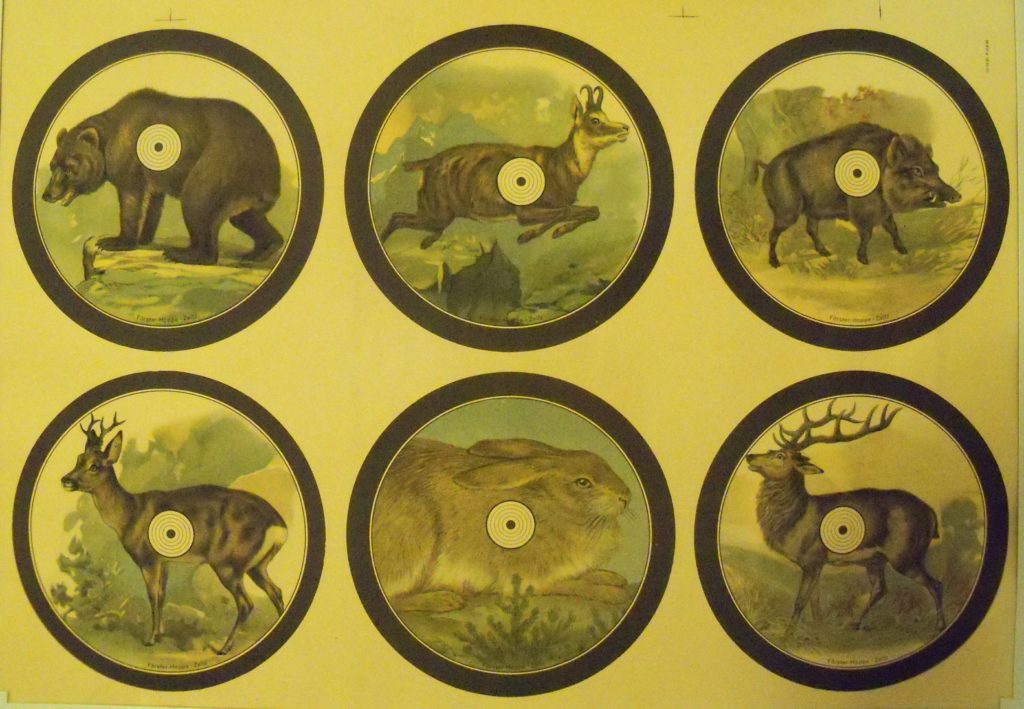

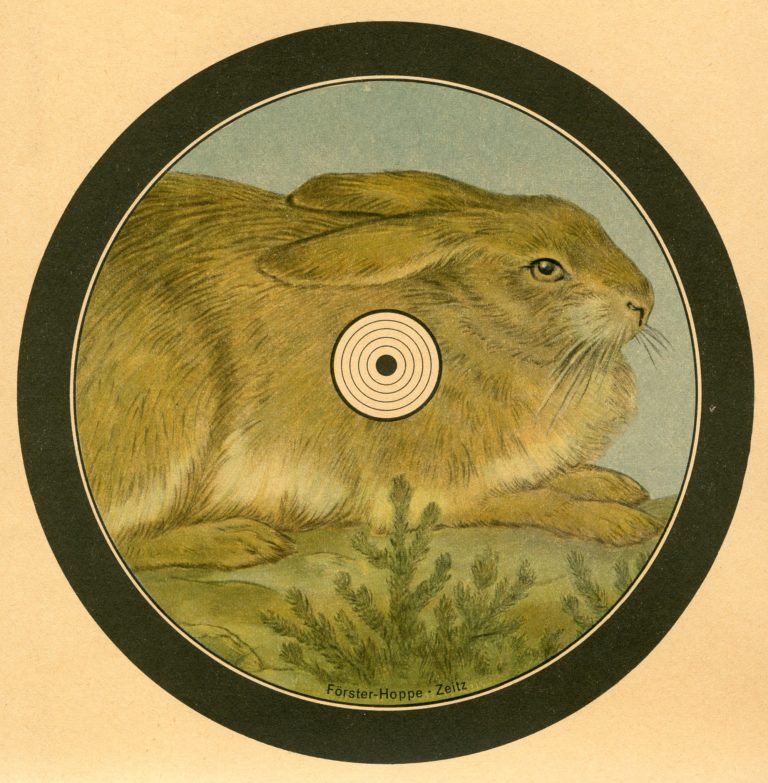
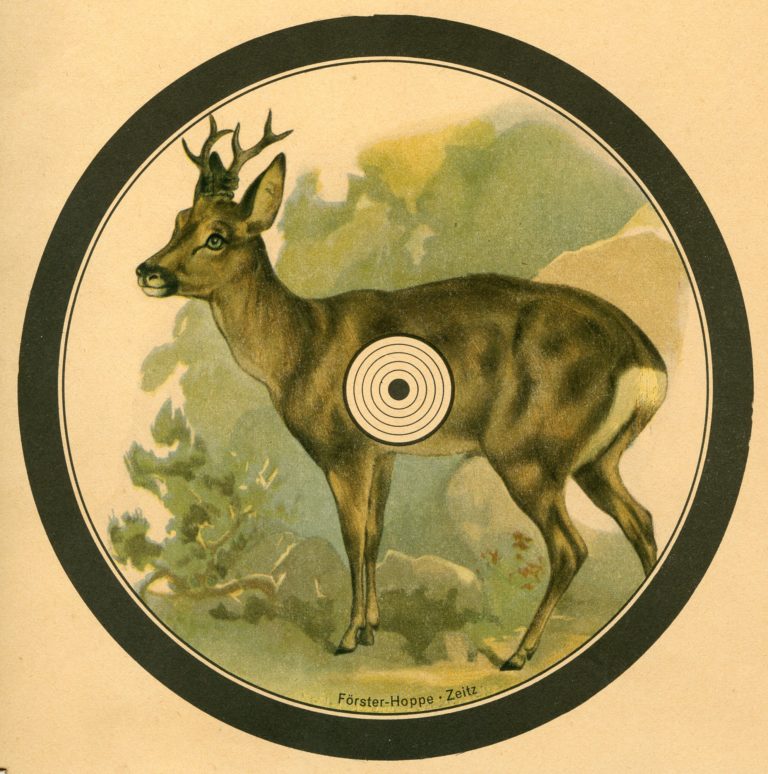
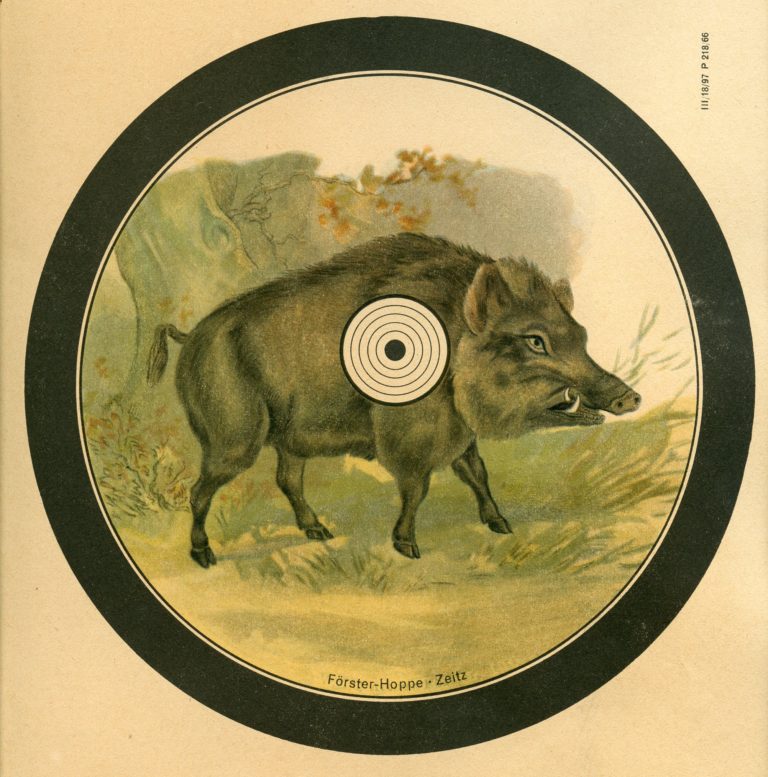
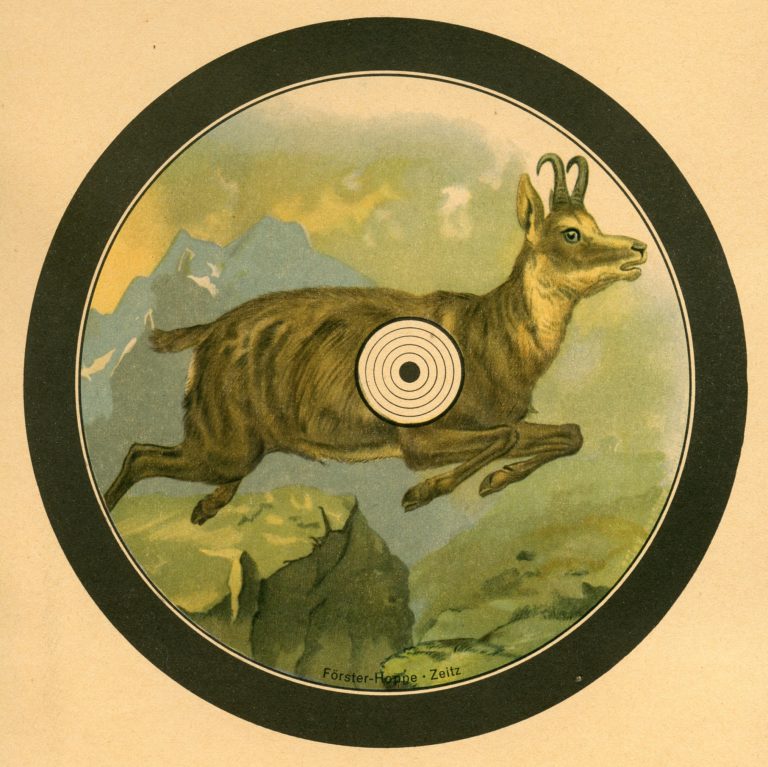
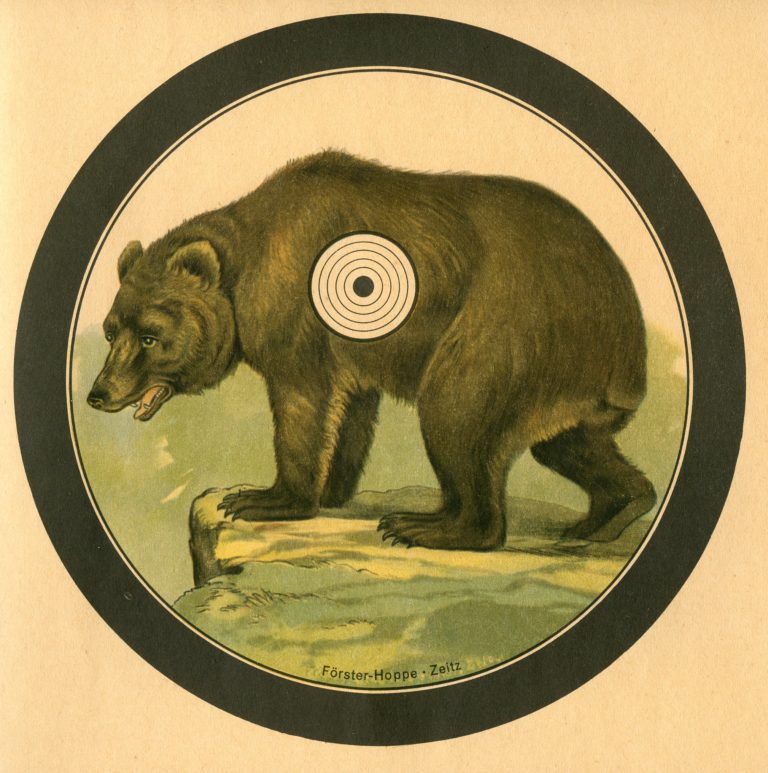
Now we will look at the individual targets with the 10 ring bull first.
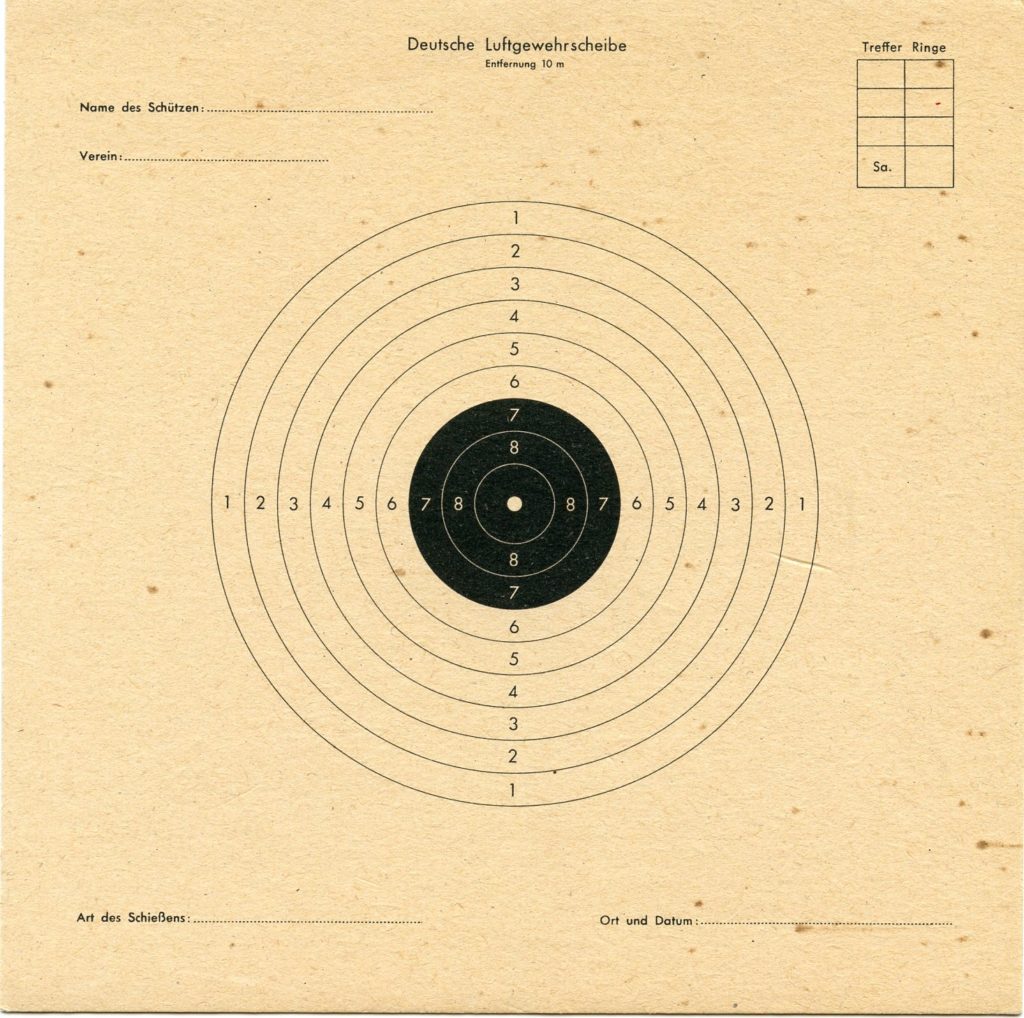

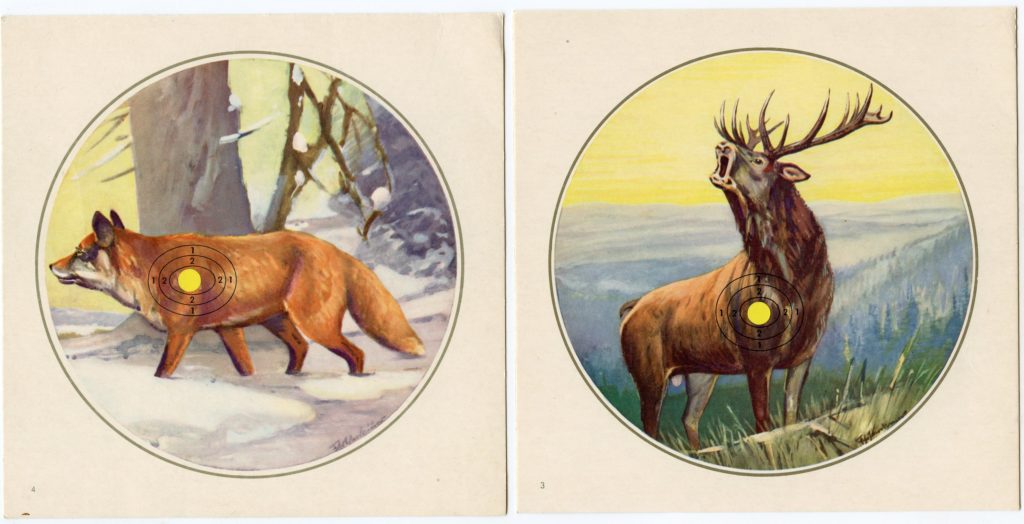
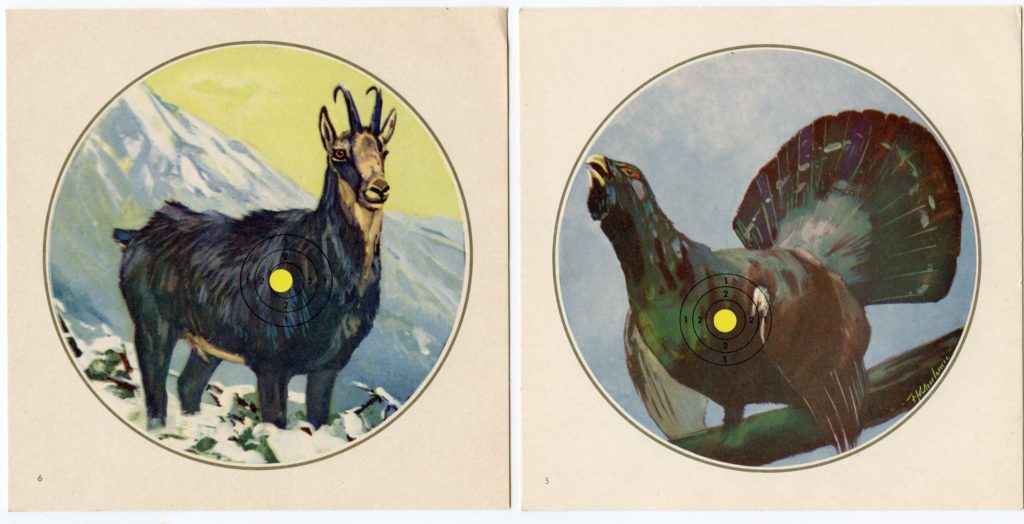
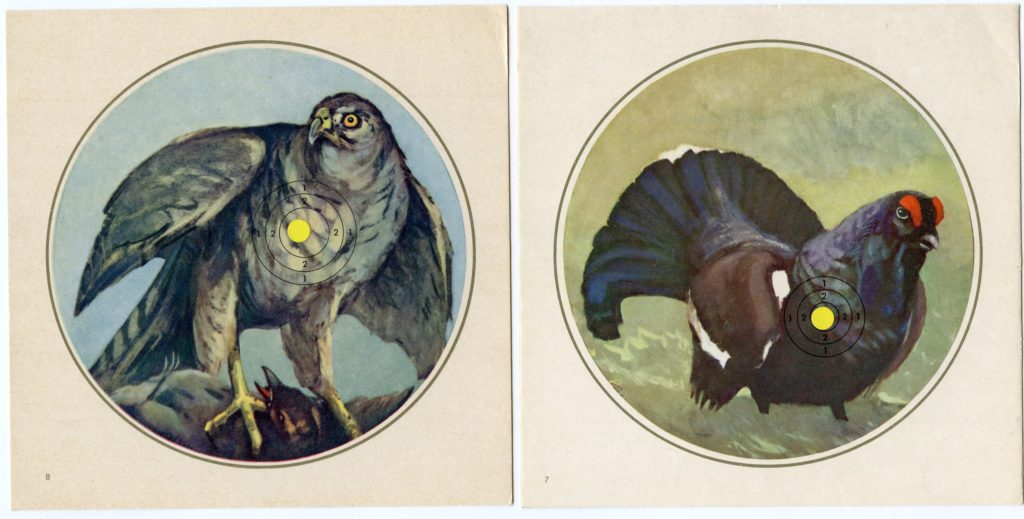

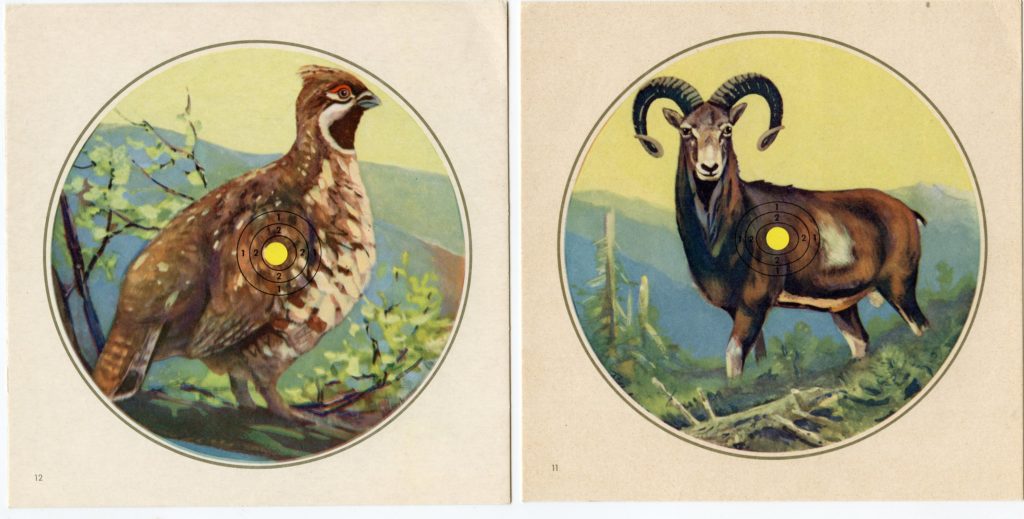
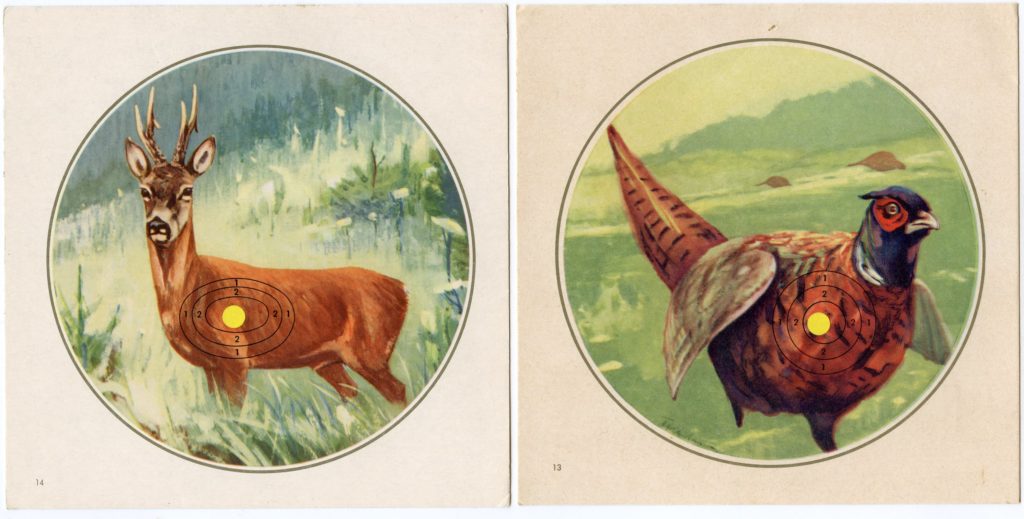
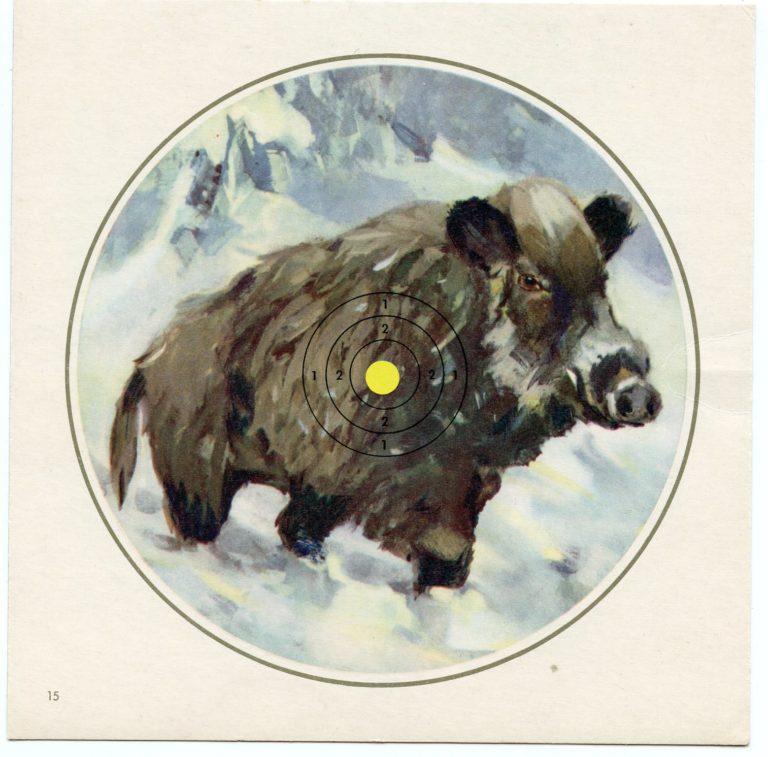
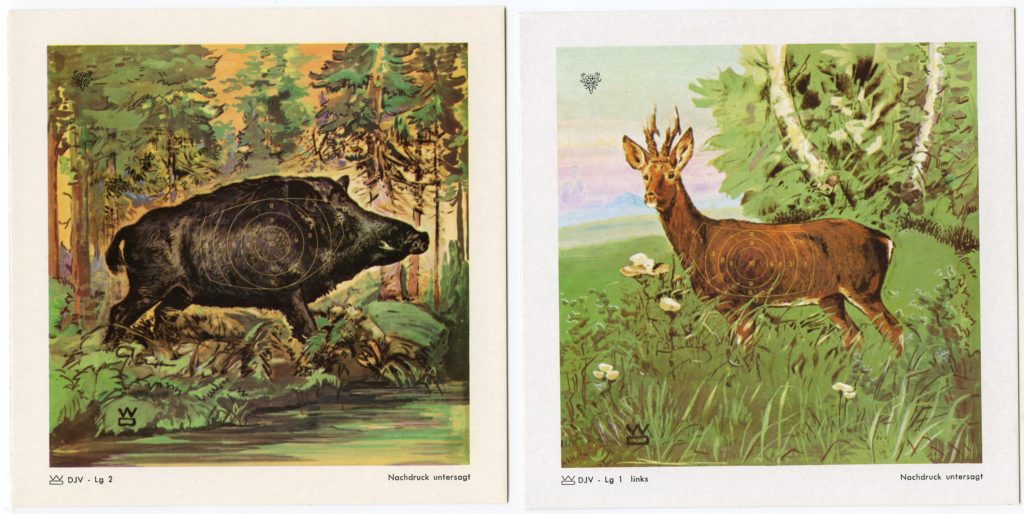
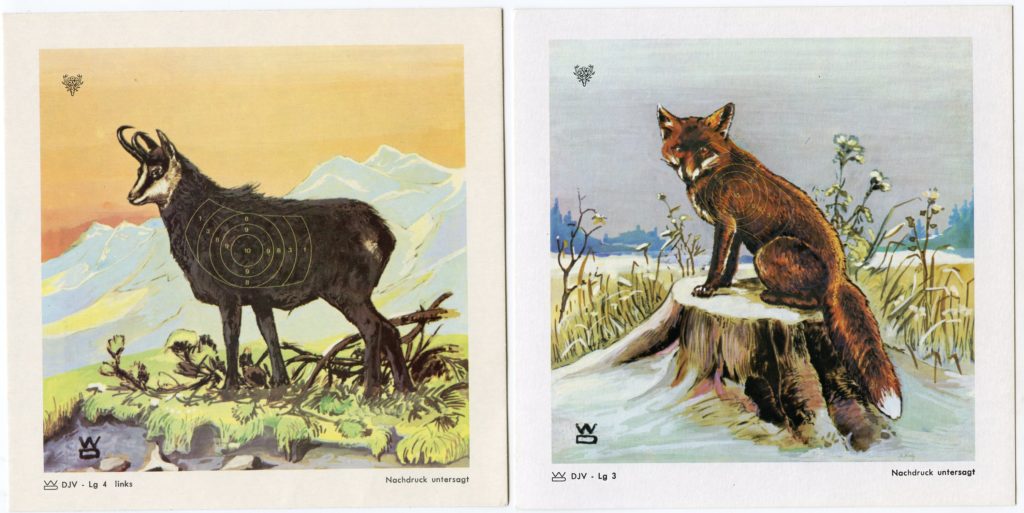
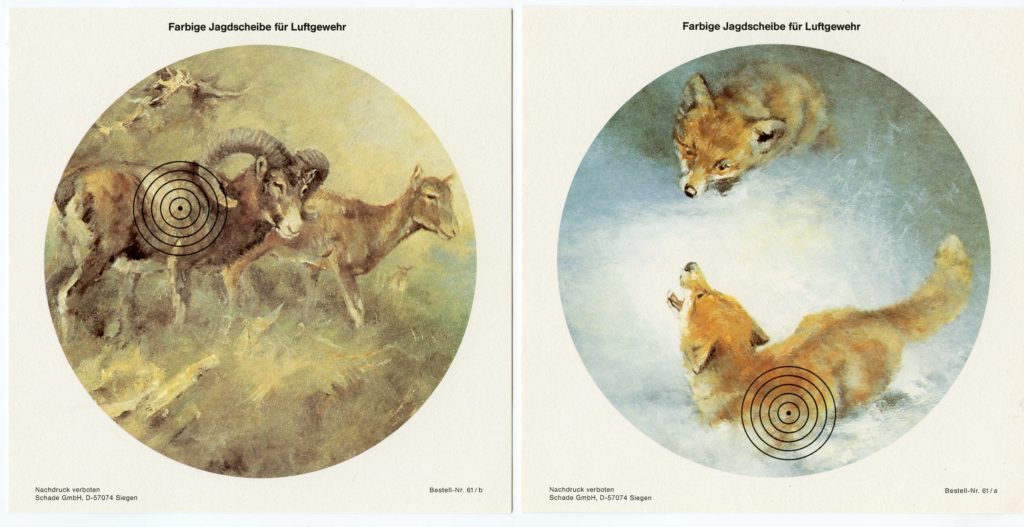
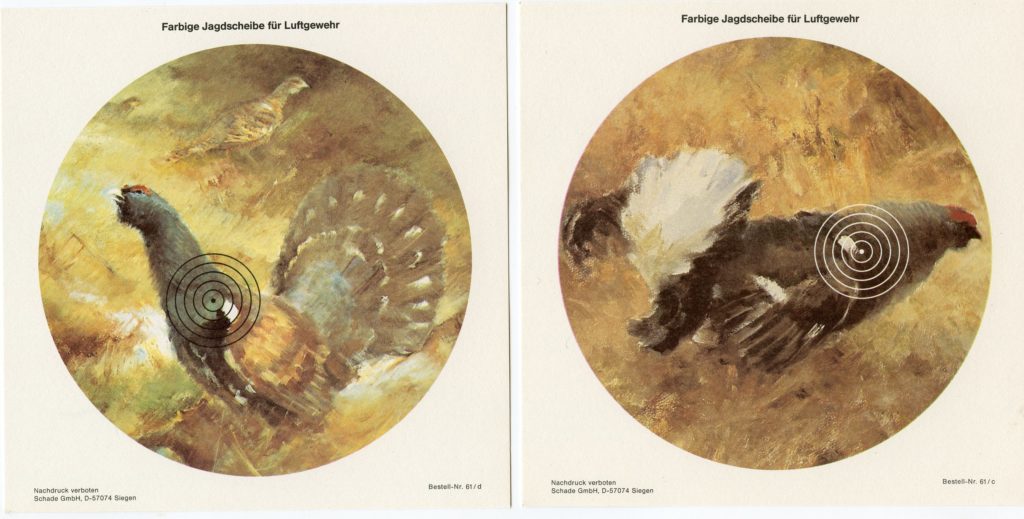
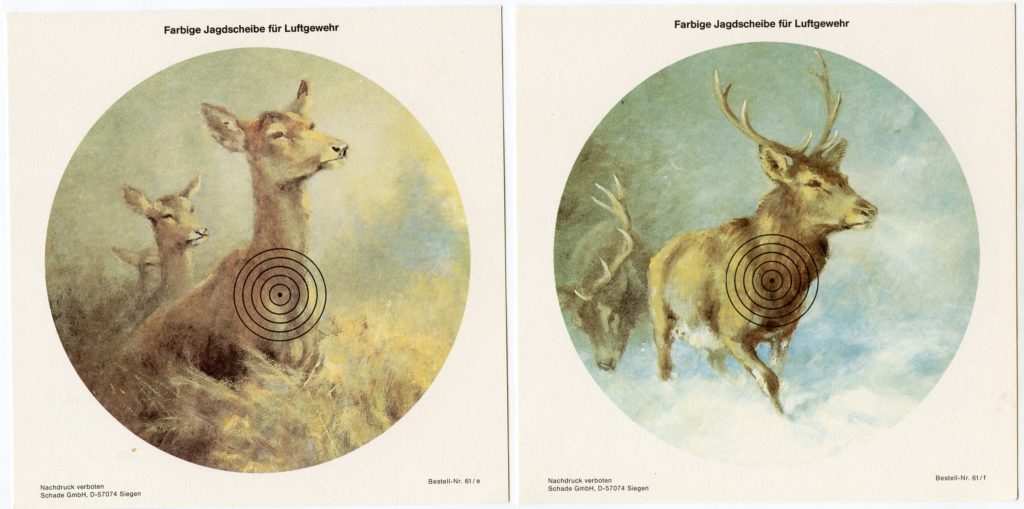
The following risque or cartoon targets were sometimes used in shooting galleries at public festivals like the Octoberfest. They were for amusement and not for showing shooting skill. I wish to thank my friend from Germany Mr. Peter-Josef Schmitt for the interpretations.
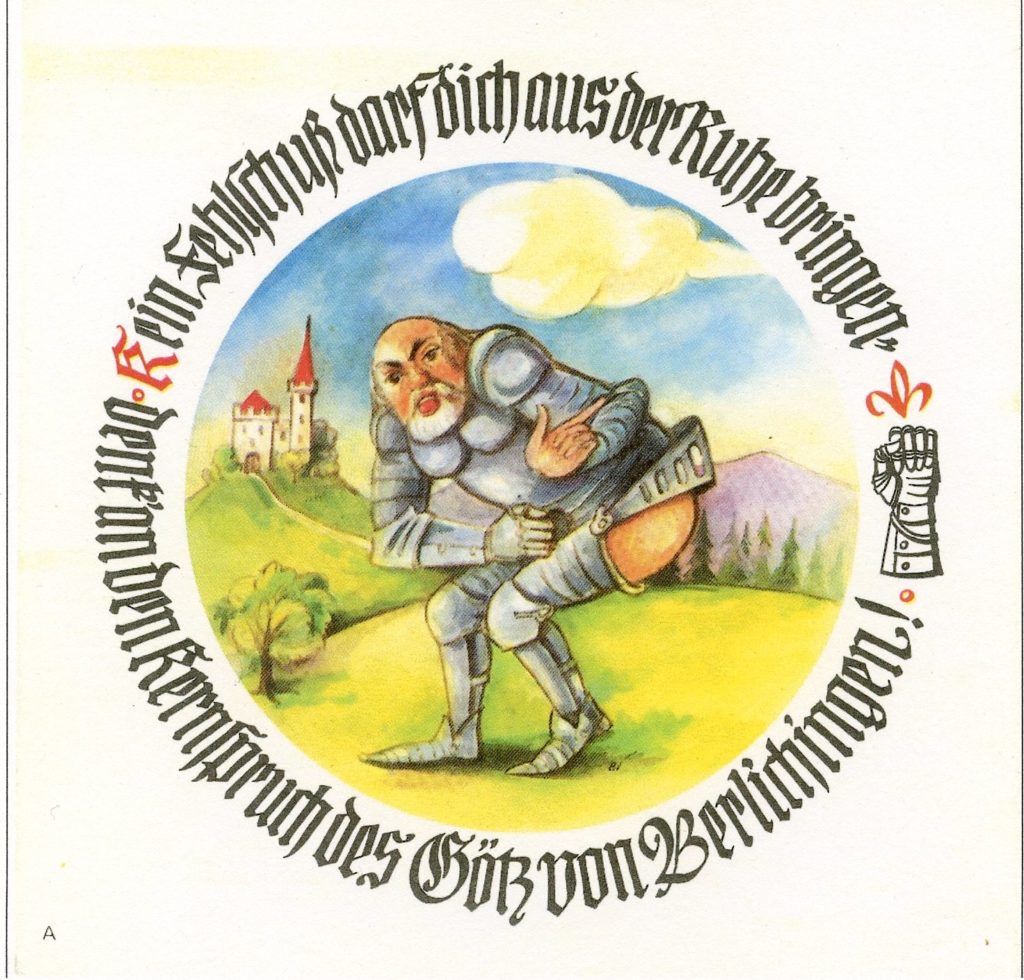
Interpretation- “No missing should make you nervious-think about the device of Götz von Berlichingen”, According to a legend told by the famous V. Gothe, the medieval knight G.v.B. said to an enemy who asked him to surrender “you may lick my ass” meaning “I’m not interested in your opinion, proposal or order, I don’t get nervious about some mistake.

Interpretation- “The shooter always saves his good mood-even after shooting a Buck”. Note-“shooting a buck is a German saying for making a fault, missing a target or doing something stupid.
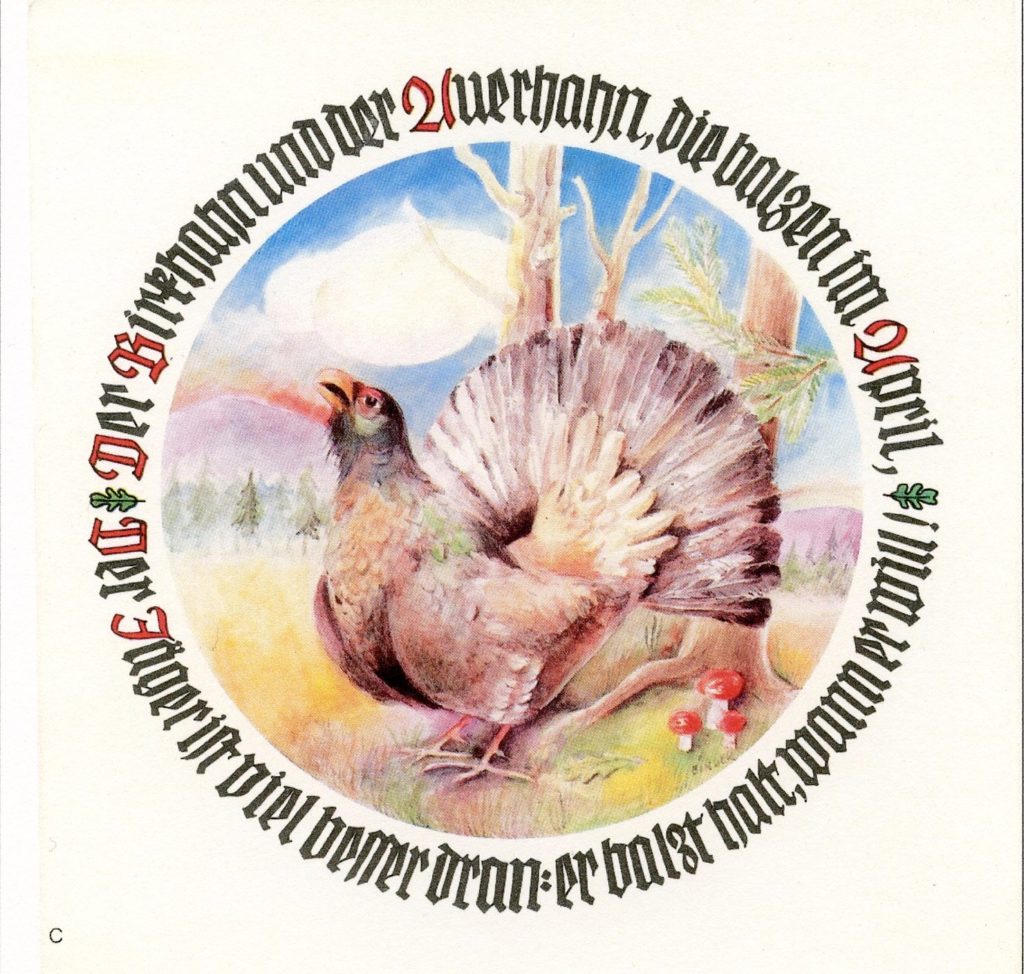
Interpretation-“The Heath(Black) Cock and the Capercaily (Mountain Cock) are pairing in April-the hunter has a cut above, he ‘Pairs’ whenever he will”.

Interpretation-“If you want to share the bed with me-you have to be a shooting champion first”.
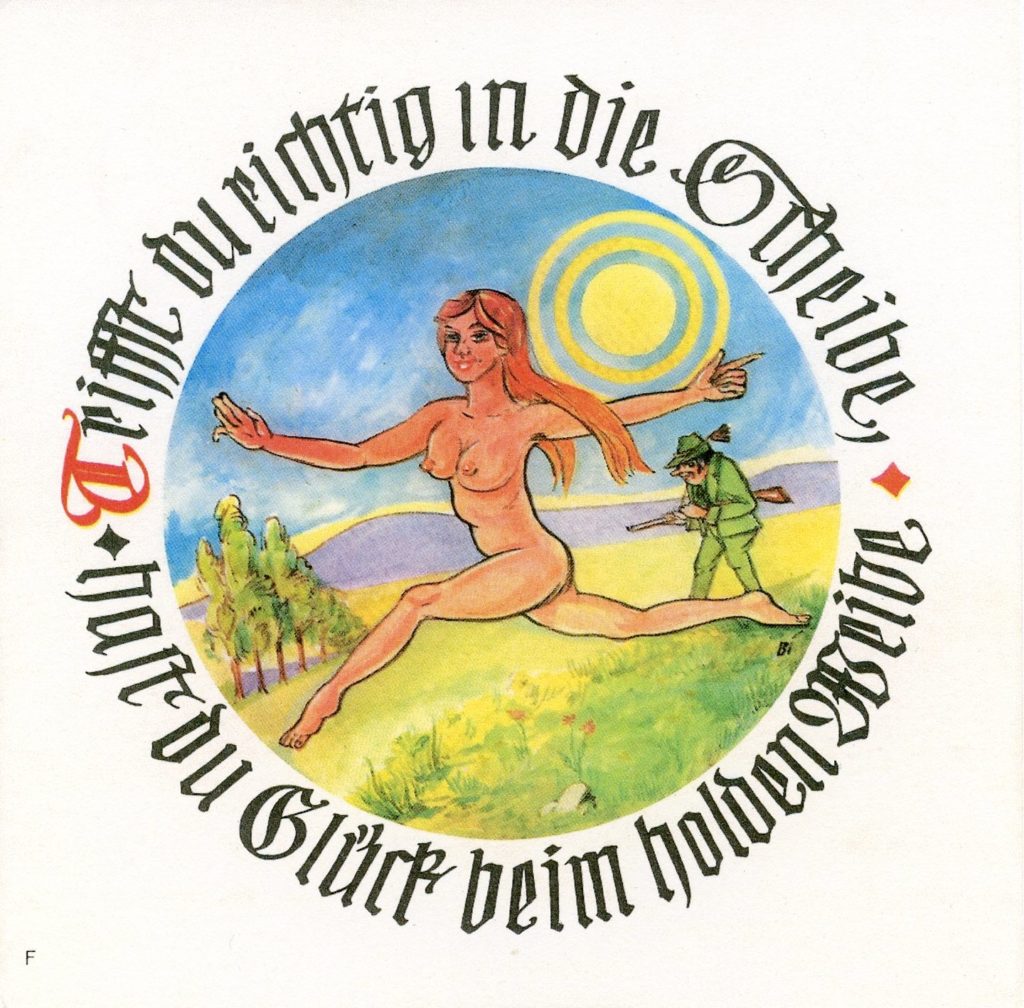
Interpretation-“If you are hitting right (in the center) of the practice target-you may have good luck with a gracious woman”.
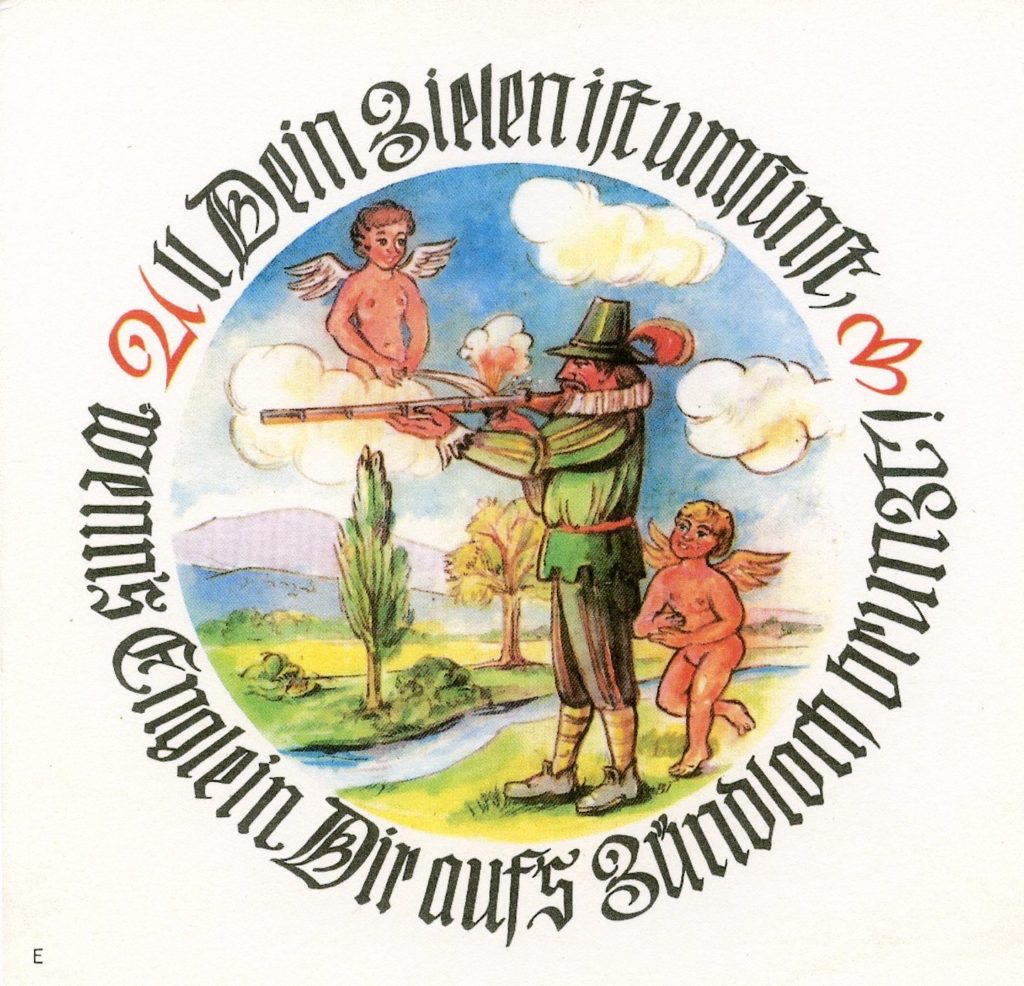
Interpretation-“All of your aiming is in vain if an angel is peeing on your powder” (Ignition hole).

